Sky-high planting
A roof garden with a view by
Tom Stuart-Smith Studio
Flower power
Jo Thompson’s colourful summer pot displays
Top July plants
Seasonal highlights and new lavenders to grow

A roof garden with a view by
Tom Stuart-Smith Studio
Flower power
Jo Thompson’s colourful summer pot displays
Top July plants
Seasonal highlights and new lavenders to grow
Small family, cool coastal and large country gardens

EVER AFTER
Expert picks of the best blooms for drying
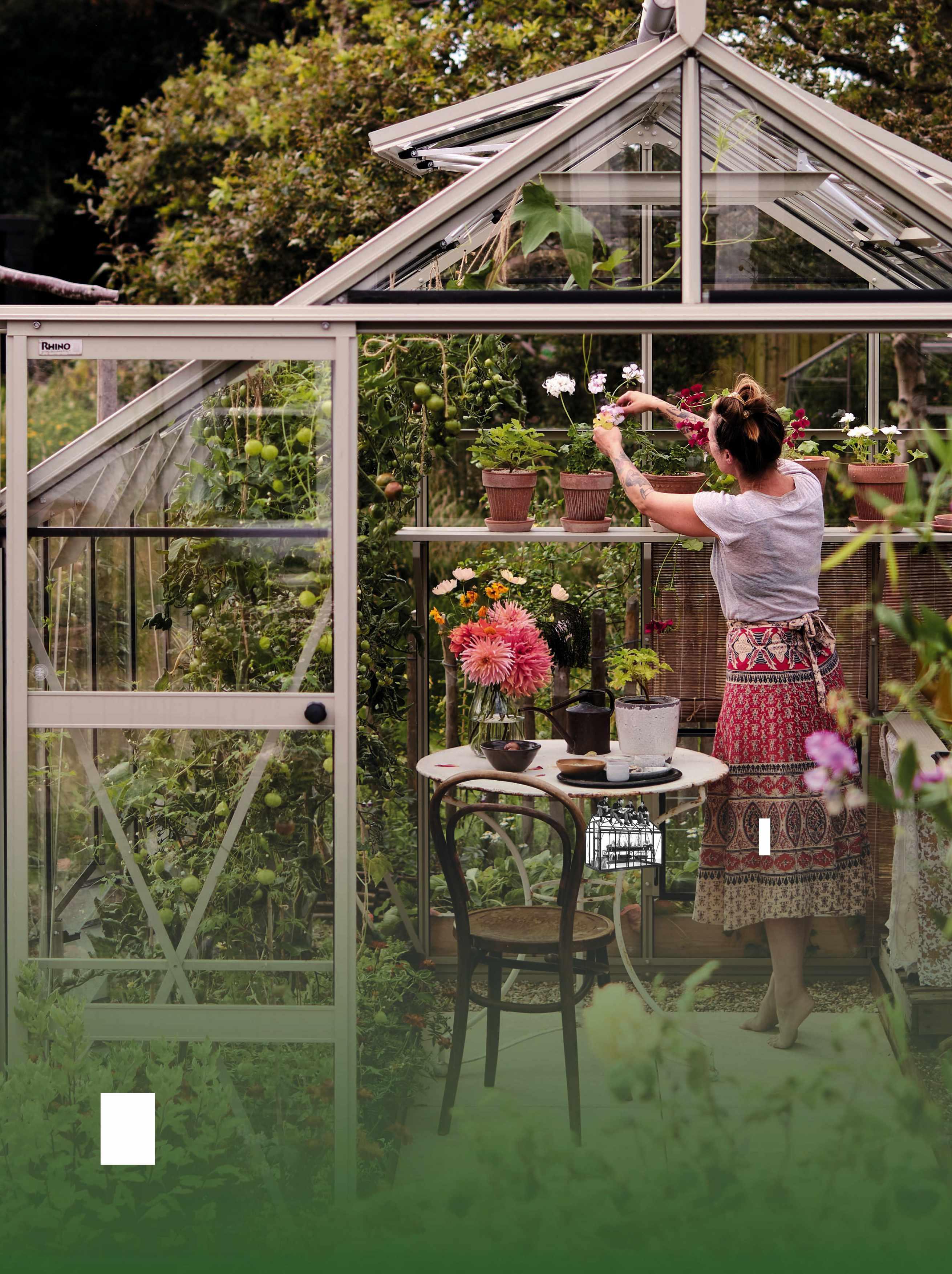

It’s high summer, and high time for gardens and gardening, so this month, we’re visiting some incredibly inspiring gardens with dreamy designs. Our first stop is the Isle of Wight, where Andy Sturgeon has turned a steep hillside into a Mediterranean-style oasis (page 34). In the City of London, Tom Stuart-Smith Studio has created a contemporary roof garden with unbelievable views of St Paul’s Cathedral and the city skyline (page 96); and Stefano Marinaz has transformed a small, narrow town garden into a haven for a young family (page 68). We also take a trip to the Barwitian Garden of Ralph Bristow, an Australian artist and garden designer, whose large country plot is brimming with thousands of flowering perennials (page 52).
This issue is packed with interesting people too, with Nigel Slater on learning to enjoy his garden (page 31); Piet Oudolf’s right-hand man in the USA, plantsman Roy Diblik (page 74); Erin Benzakein of Floret, one of the most respected US flower farms (page 88); and the skilled basket maker and weaver Mollie McMillen (page 82).
There’s plenty of plant interest as well. Head gardener Andrea Brunsendorf shares her top ten plants for July (page 18), and we discover newer forms of lavender in our plant profile (page 44), plus expert growers recommend the best flowers for drying (page 76).
Award-winning designer Jo Thompson is back with more stunning container-planting displays for summer (page 62), and Jack Wallington explains how he plans to beat the weeds by experimenting with plant vigour to create an ecological and easy-to-manage garden (page 122).


Discover our reader holiday to the Gardens of Brittany with Troy Scott Smith in September 2024. Book your place now at gardensillustrated.com/brittanyholiday


Instagram @gardens_illustrated Twitter @GdnsIllustrated
@gardensillustrated
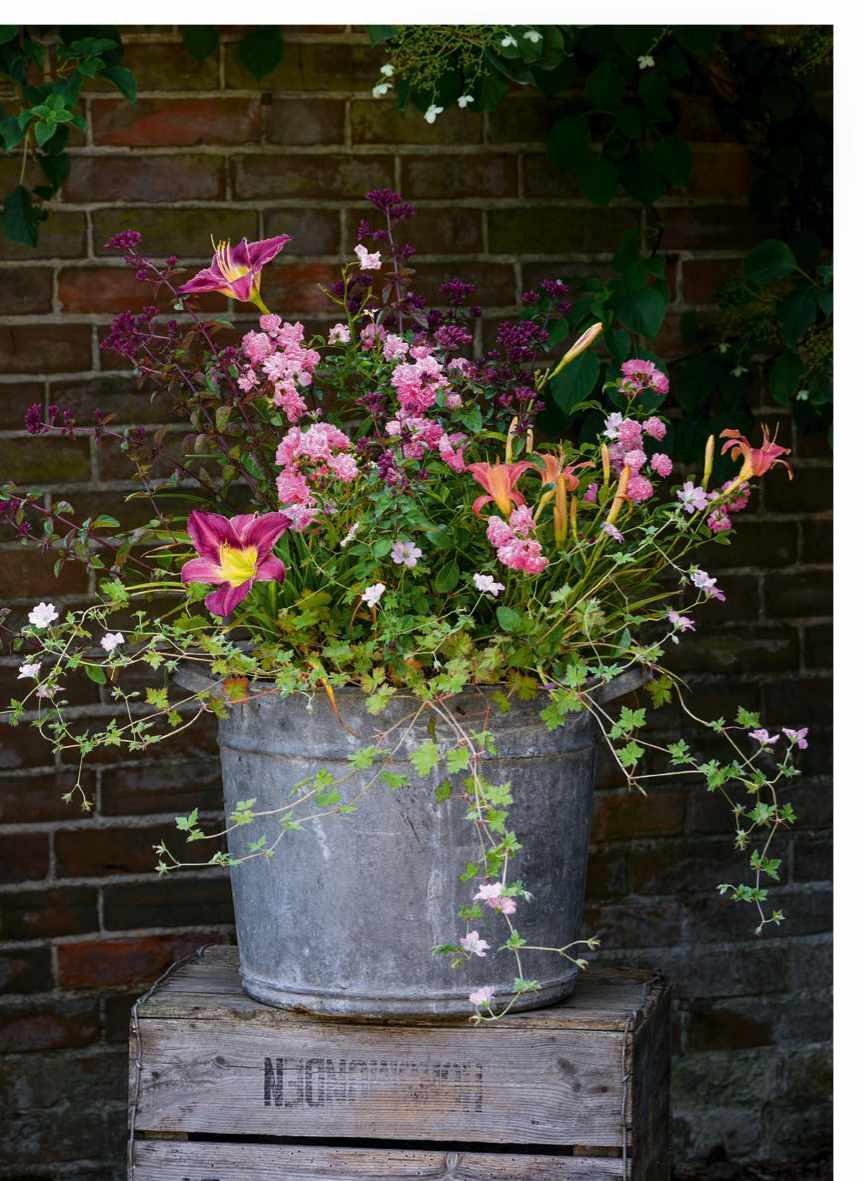
34 Thehighlife Andy Sturgeon has transformed a steep hillside on the Isle of Wight into a Mediterranean-style haven
52 Broad strokes Australian artist and garden designer Ralph Bristow has created a colourinfused garden that is as bright and bold as his paintings
68 New lease of life Stefano Marinaz’s design for a small city garden in the Netherlands has the lush planting his clients yearned for with practical touches to make their lives easier
18 Plantsperson’sfavourites
Head gardener Andrea Brunsendorf chooses her top ten plants for July
44 Plant profile: Lavender Fragrant, drought tolerant and easy to grow, lavenders are popular plants that are perfect for many styles of garden
62 Bright and beautiful Awardwinning designer Jo Thompson suggests three containerplanting displays that make the most of high summer’s vibrant colours
76 Top flowers for drying Preserve the fleeting beauty of summer blooms with these recommendations on the best flowers to dry from three expert growers
88 Down on the farm From growing a few sweet peas on her plot to breeding her own cultivars, Erin Benzakein has grown Floret into one of the most respected flower farms in the USA
31 Thegardenchronicles Nigel Slater is taking time to sit and savour the moment
43 Gardeningtalent Meet Sissinghurst Scholar Paul Mooncie-Dunmall
74 Who’s who The American nurseryman and designer Roy Diblik
82 Dreamweaver Discover the work of weaver Mollie McMillen
122 The big idea Jack Wallington is experimenting with plant vigour to make his own garden both ecological and easy to manage
95 Designnews A new public park in the City of London
96 City heights Maximising space on a small city roof garden
107 Sourcebook Nine of the best fruit and vegetable cages
3 Welcome 6 Contributors
9 Dig in With news of tours of Horatio’s Gardens, and should a gardener own a cat?
17 GardensofBrittany Join us on a five-day tour to explore the best gardens in Brittany
25 Kittedout For growing your own fruit and veg
28 Subscription offer Save when you subscribe to the digital edition of Gardens Illustrated
111 Books A garden diary that is a call to action to gardeners to do more for wildlife
118 Crossword and back issues
121 Next issue What’s coming up in our Summer issue
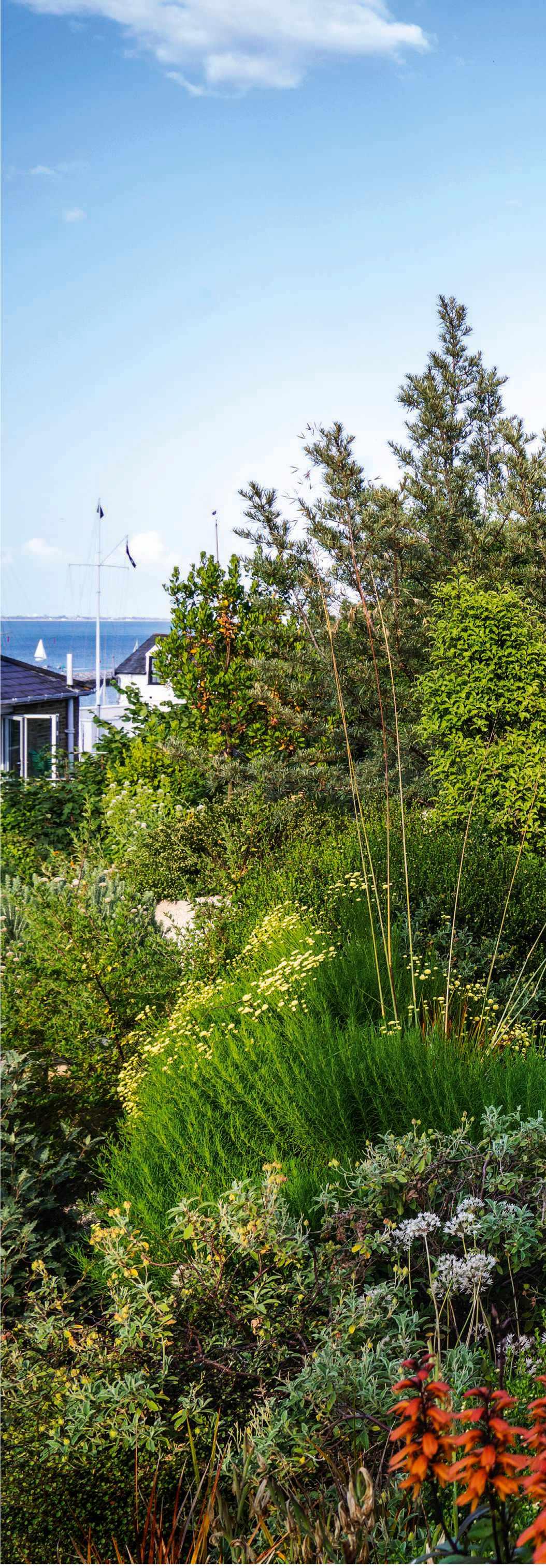
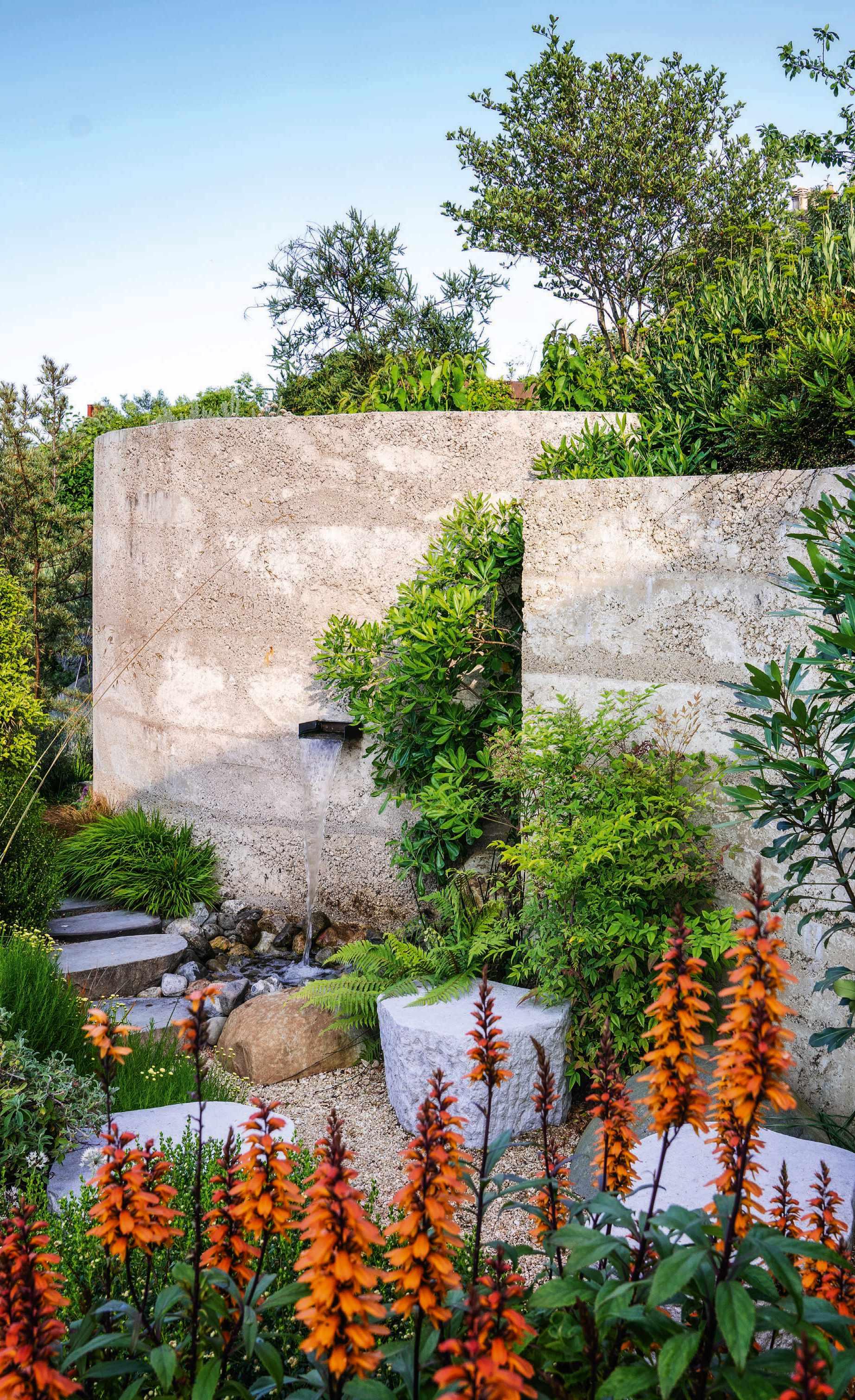
take out a digital subscription to Gardens Illustrated
SEE PAGE 28
Ralph Bristow’s Australian garden, photograph by Claire Takacs (page 52)
Dreamy designs, pages 34, 52, 68 and 96
Top July plants, pages 18 and 44
Sky-high planting, page 96
Flower power, page 62 Ever after, page 76
• Join us on a five-day tour to explore some of the most exciting gardens in Brittany with head gardener Troy Scott Smith – page 17
• Save money when you subscribe to the digital edition of Gardens Illustrated – page 28 Subscribe & save

If you had shown me at the start of the course what I have produced for my final project, I wouldn’t have believed you! EA
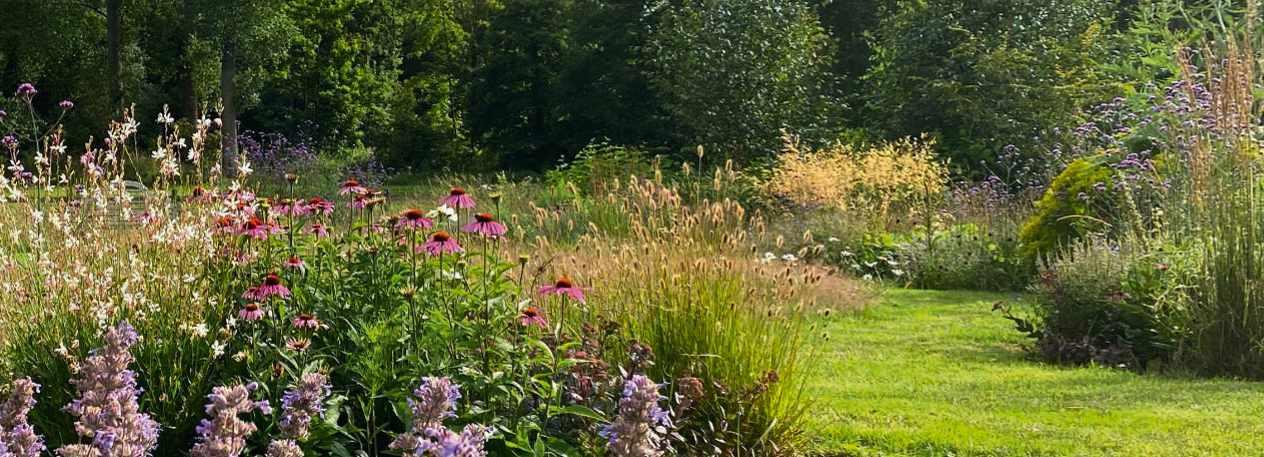
Our Diploma and other professional development programmes are delivered at the Royal Botanic Gardens Kew with a real-time, online option for those wishing to study with us from home.
We also offer an extensive short course programme for professionals and garden enthusiasts at Kew Gardens and RHS Garden Wisley and an alumni programme for continuing professional development.
Visit our website lcgd.org.uk to see how our students are creating successful garden design careers and discover a course that is right for you.

Janice Shipp Janice chooses some of the most fragrant lavenders, page 44. “‘Like most gardeners I love to grow lavender, and writing this article reminded me why I’m so fond of them.”

Marianne Majerus Marianne photographs a new rooftop garden in the City of London, page 96. “It was a real pleasure being on the roof terrace at sunrise, enjoying the plants and spectacular views over London.”

Rachel Siegfried Rachel talks to Floret founder Erin Benzakein, page 88.
“It was fascinating to talk to fellow flower farmer Erin about her quest to develop cutflower cultivars that empower and inspire.”






Charlotte Harris
Charlotte co-founded the values-driven landscape design practice Harris Bugg Studio with Hugo Bugg in 2017. She has won three Gold medals at the RHS Chelsea Flower Show, as well as Best Show Garden in 2023.
Fergus Garrett
Fergus was appointed head gardener at Great Dixter by Christopher Lloyd in 1993 and is now CEO of the garden’s Charitable Trust. He was awarded an RHS Associate of Honour in 2008 and an RHS Victoria Medal of Honour in 2019.
James Basson
James lives in the South of France where he runs Scape Design, a practice for creating sustainable landscapes. The winner of four Chelsea Gold medals, he was awarded Best Show Garden in 2017.
Anna Pavord
Anna was The Independent’s gardening correspondent for 30 years and is the author of the bestselling book The Tulip. In 2000 the RHS awarded her the Veitch Memorial Medal. She lives and gardens in Dorset.
Dan Pearson
Dan is one of the UK’s best-known garden designers. Among his many award-winning gardens is the Tokachi Millennium Forest in Japan. He was awarded an OBE in the 2022 New Year Honours for services to horticulture.
Sarah Price
Sarah is one of the UK’s most sought-after garden designers. She won Gold at Chelsea in 2012, 2018 and 2023, and was GMG Garden Columnist of the Year in 2016 for her design series in Gardens Illustrated
+44 (0)1483 762955info@lcgd.org.uk
Membership and subscription enquiries and back issues
UK 03330 162114
USA/CANADA +1 888-941-5623 (TOLL-FREE)
REST OF THE WORLD +44 1604 973722
EMAIL gardensillustrated@ourmediashop.com
UK/REST OF THE WORLD Gardens Illustrated, PO Box 3320, 3 Queensbridge, Northampton NN4 7BF. USA/CANADA Gardens Illustrated, PO Box 40, Williamsport, PA 17703 USA.
Advertising enquiries
+44 (0)117 300 8547 rebecca.janyshiwskyj@ourmedia.co.uk
Editorial enquiries
+44 (0)117 300 8622 gardens@gardensillustrated.com
Gardens Illustrated, Our Media Ltd, Eagle House, Bristol BS1 4ST.
Syndication & Licensing
Gardens Illustrated is available for licensing and syndication. +44 (0)117 300 8787, emma.brunt@ourmedia.co.uk
App support
For App support please visit ourmediaapps.co.uk/digital-contact-form/
We abide by IPSO’s rules and regulations. To give feedback about our magazines, please visit ourmedia.co.uk, email editorial.complaints@ourmedia.co.uk, or write to: Legal, Our Media Ltd, Eagle House, Bristol BS1 4ST.
David Grenham
Niki Goss
Juliet Giles
Botanical adviser Dr James Compton
Thanks this issue Tim Bates
ADVERTISING
Group advertising director Gino De Antonis
Advertising manager Rebecca Janyshiwskyj 0117 300 8547 rebecca.janyshiwskyj@ourmedia.co.uk
Commercial brand lead Kelly Warden 0117 300 8538 kelly.warden@ourmedia.co.uk
Advertising designers Andrew Hobson and Cee Pike
INSERTS
Laurence Robertson +353 (0)876 902208
CIRCULATION, MARKETING, PROMOTIONS, PRESS & PR
Newstrade manager John Lawton
Subscriptions director Jacky Perales-Morris
Direct marketing manager Aimee Rhymer
Buyer Karen Flannigan
MANAGEMENT
Chief executive officer Andy Marshall
Managing director Andrew Davies
Head of brand marketing and brand lead Rosa Sherwood
SYNDICATION & LICENSING
Director of licensing & syndication Tim Hudson, tim.hudson@immediate.co.uk
Head of licensing Tom Shaw, tom.shaw@immediate.co.uk
Head of syndication Richard Bentley, richard.bentley@immediate.co.uk
PRODUCTION
Production director Sarah Powell
Group production manager Louisa Molter
Production co-ordinator Lauren Morris





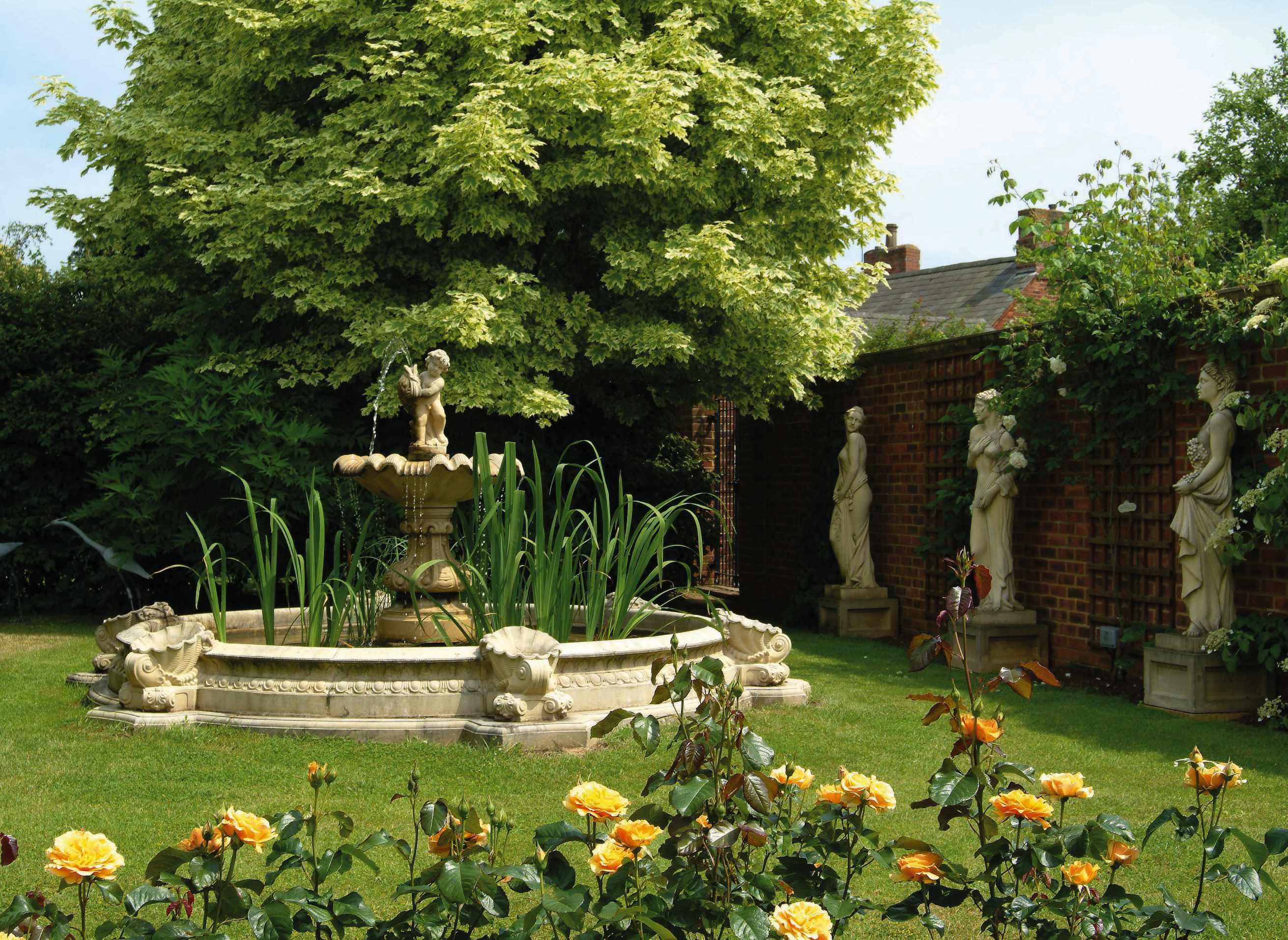

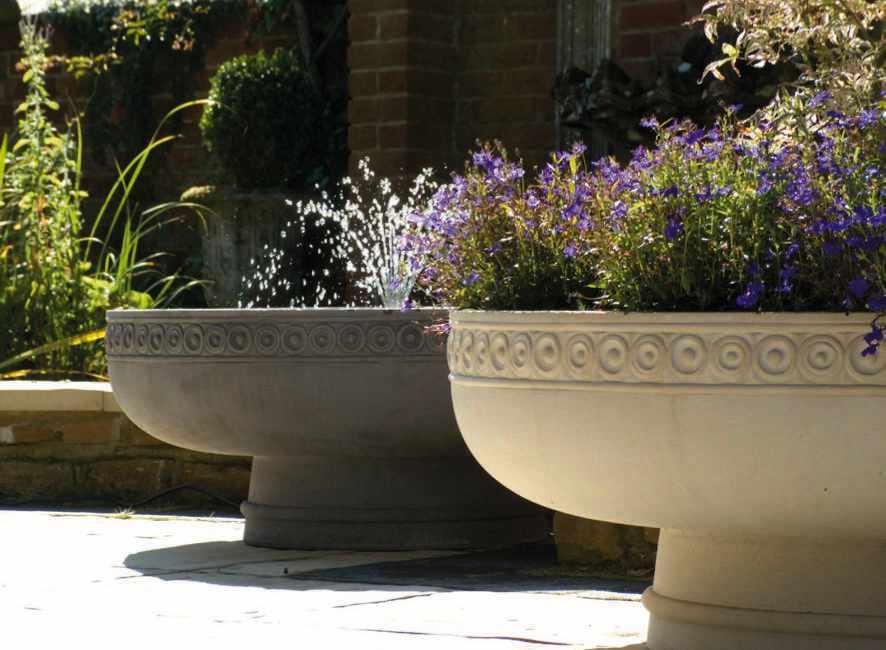

What’s new, what’s growing and what’s going on this month
NEWS COMPILED BY MOLLY BLAIR
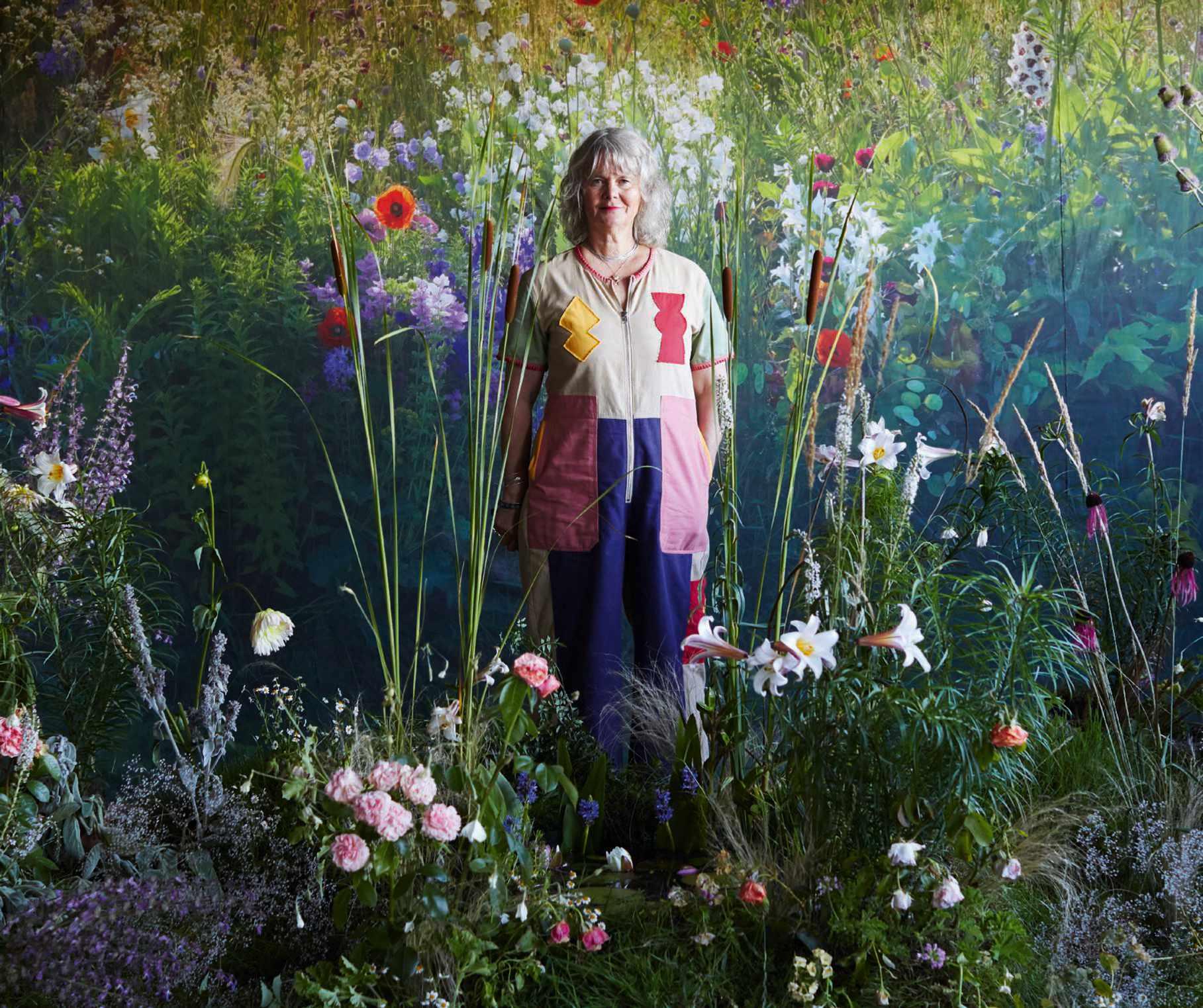
Photosynthesis, the process by which plants transform light energy into chemical energy, is the inspiration for a multimedia botanical exhibition that opens at the Museum in the Park in Stroud this month. Photosynthesis, a collaboration between organic flower farmer and horticulturist Fiona Haser Bizony (above) and ceramic artist Cleo Mussi, explores themes of sustainability and climate change, and champions the idea that no one’s contribution is too small to make a difference. With the gallery divided into a sort of contemporary Book of Hours, marking the passing of the seasons in days, weeks, months and years, Fiona’s canvases will provide the backdrop for the exhibition, marking the female progression from the ‘spring’ of youth to the ‘wintering’ of old age, and feature photographs taken of flowers in bloom layered with time-shifted seasonal references. Cleo has crafted a life-sized figure for each season, along with a series of 12 moons to represent each month and a series of mosaic hands (right) holding flowers, fungi, mosses, seedheads and slime moulds. 20 July – 1 September. Admission free. museuminthepark.org.uk


Should a wildlife-conscious gardener own a cat? It’s a question that could easily divide the nation. For although our feline friends will invariably foul in our gardens, and hunt birds and other wildlife, we are, it seems, a nation of cat lovers. A 2021 study by Cats Protection found there are almost 11 million pet cats in the UK – and that’s not counting the number of stray cats that also visit our gardens.
One person who certainly doesn’t welcome their presence is planting designer and professor of landscape architecture Nigel Dunnett (above). In a recent episode of our podcast Talking Gardens, he told Gardens Illustrated editor Stephanie Mahon that cats would never be allowed in his fantasy garden.
“The one thing that’s banned from my garden is cats,” he said.“Cats are killers, they take songbirds, and they take mammals, but they also deter and scare things away. I don’t have cats myself. I would really want my dream garden to be a cat-free zone just to let other life exist without being eaten, chased or scared away.”
However, given their popularity as a pet, it seems many UK gardeners are keen to give cats a home despite their wildlifehunting tendencies. That doesn’t mean cat owners can’t mitigate the impact cats have on wildlife. A recent survey of our followers on Instagram offered many suggestions, including fitting bells to collars, keeping cats inside or only taking them out on leads and restricting their access to the outdoors at dawn and dusk when wildlife is most active.

Read more on this debate by scanning the QR code with your phone camera or head to gardensillustrated.com/ cats

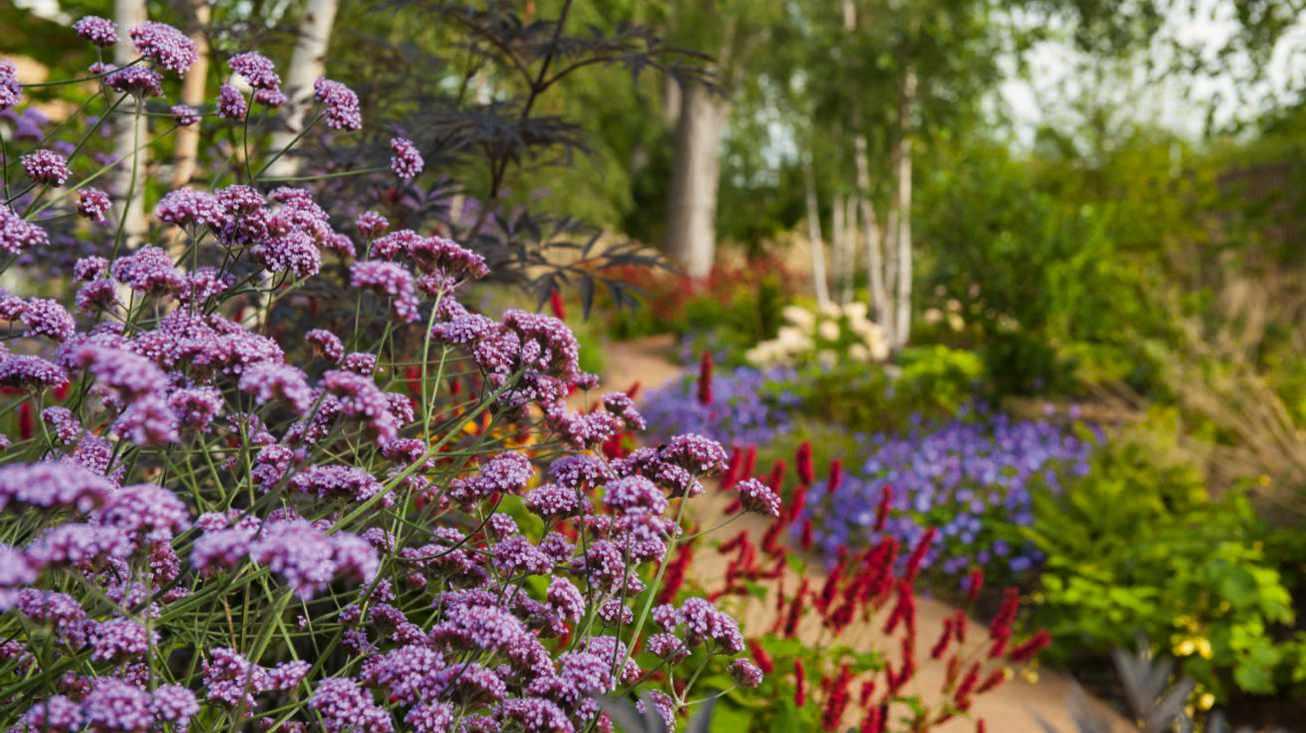
Horatio’s Garden, the charity that has created a series of vibrant, accessible gardens in NHS spinal injury centres across the UK, is opening all seven of its existing gardens this summer. Each garden has been designed by an award-winning designer, including Cleve West, who made the charity’s first garden in Salisbury (top), James AlexanderSinclair, who created a woodland garden in Glasgow (above) and Tom Stuart-Smith, who designed the garden for the London Spinal Cord Injury Centre (below). The private tours will be held on selected dates until 16 October and led by the charity’s head gardeners. Places on the tours are strictly limited and cost £20-25, including refreshments and home-made cake. For more information and to book, visit horatiosgarden.org.uk
























The Camellia House at Wentworth Woodhouse in Yorkshire has been restored by conservation architects Donald Insall Associates, which was also the practice behind the restoration of the Temperate House at the Royal Botanic Gardens, Kew. The Grade II-listed building has reopened as a tearoom and events space. At one point the house was virtually derelict with camellias poking through the broken glass roof, which has now been entirely replaced. The plants were undisturbed in the building works and can now be better enjoyed by visitors. wentworthwoodhouse.org.uk


Launched at the RHS Urban Show in April, Mad About Land is a new garden clothing brand born out of the philosophy and love of soil, land and gardening. From classic chore coats to hardwearing gardening trousers, the range has been designed by gardeners for gardeners, and fans include the award-winning and dapper garden designer Tom Massey (left). madaboutland.com

2-7
Hampton Court Palace Garden Festival
Explore gardens and nurseries at the six-day RHS show that opens Tuesday, 2 July, 10am-6.30pm (5.30pm Sunday). From £25.85. Hampton Court Palace Gardens, London KT8 9AU. rhs.org
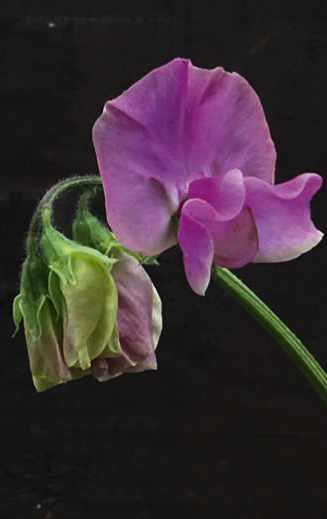
Sweet Pea Workshop
Learn to draw and paint sweet peas in the garden on this one-day course with Jacky Mills at Caisson Gardens. Saturday, 13 July, 10am4pm. £120. Caisson House, Combe Hay, Bath, Somerset BA2 7EF. caissongardens.com 13

20-21
Botanical Art Fair
Browse work from a range of artists at this weekend art fair. Saturday, 20 July – Sunday, 21 July, 11am-5pm. £12. Sussex Prairie Garden, Morlands Farm, Wheatsheaf Road, Henfield, West Sussex BN5 9AT. sussexprairies.co.uk
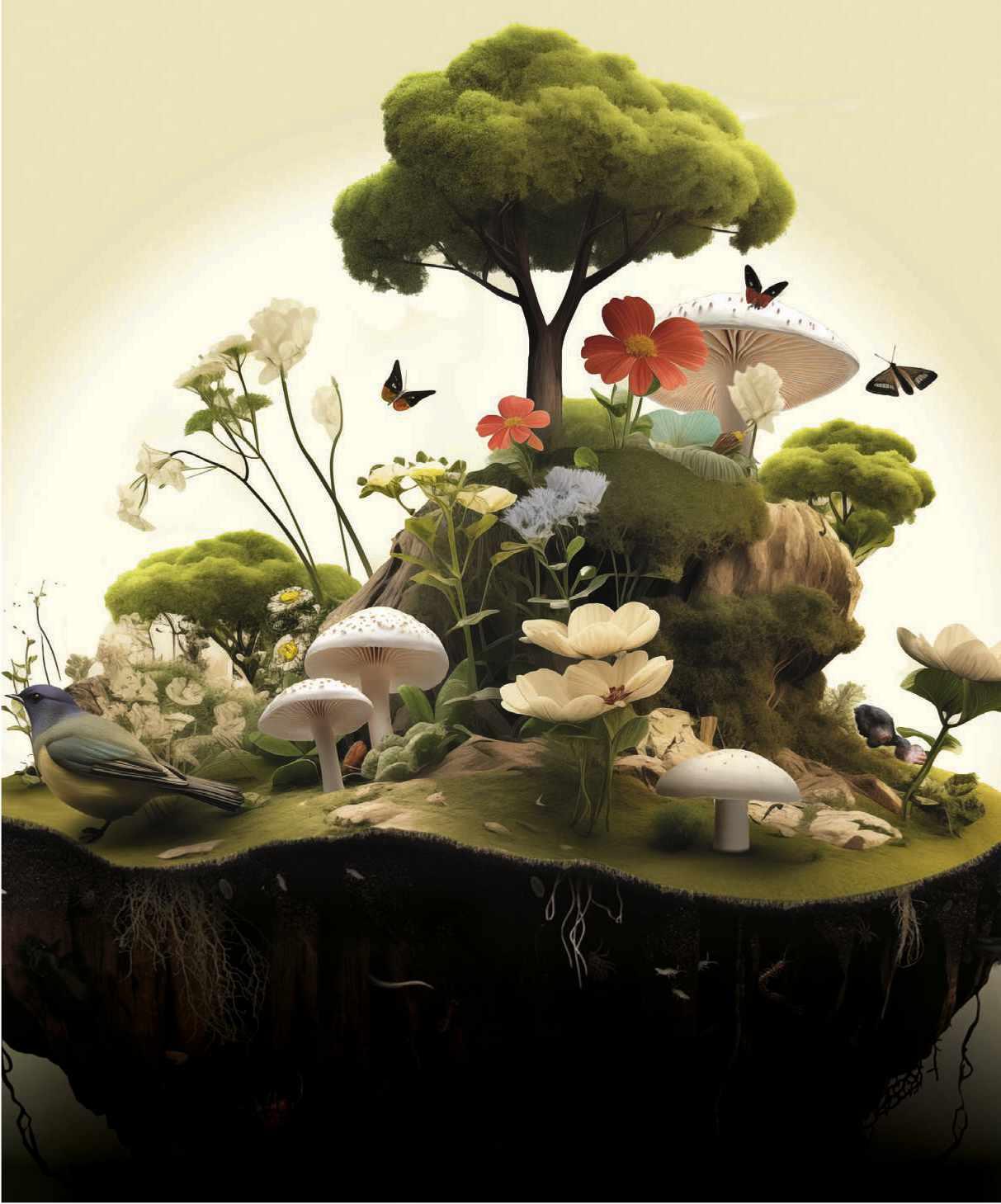
LEARN
The Beth Chatto Symposium returns next month on the theme ‘Beneath the Surface’. The two-day symposium will explore the subterranean world of soil, with fascinating talks from biologist and author of Entangled Life, Merlin Sheldrake, gardener Alys Fowler and designer Nigel Dunnett among many others. The symposium will be held at The Ivor Crewe Lecture Hall at the University of Essex on 29-30 August. Tickets cost £345 from bethchatto.co.uk
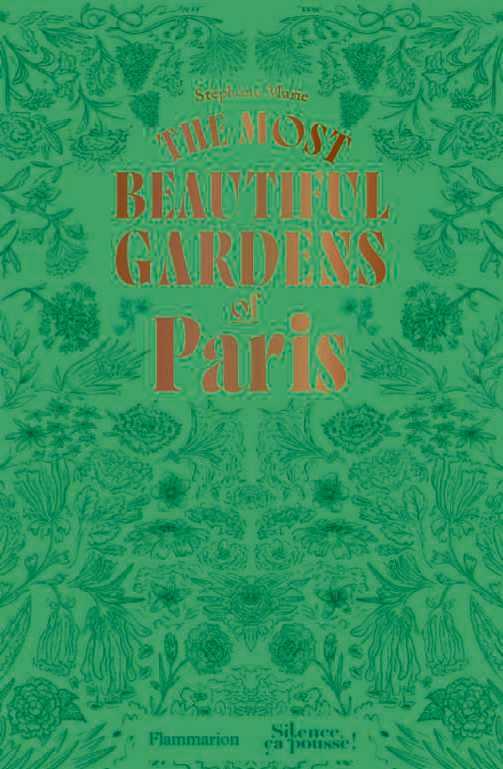
Few fruits epitomise the essence of a British summer better than the strawberry. It’s also the inspiration for print-maker Molly Mahon’s homeware collection, which includes new cushions (from £122), lampshades (£75), mugs (£22) and tea-towels (£15) – all bursting with seasonal charm. mollymahon.com
If you’re heading to Paris over the summer be sure to make room in your suitcase for this excellent guide to the city’s gardens. Written by Stéphane Marie, The Most Beautiful Gardens of Paris (Flammarion, £20) features 25 spaces in and around the city, from the world-famous Versailles to hidden gems such as the Gilles Clément-designed Jardin du Musée du Quai Branly, and the vegetable gardens at Château de Saint-Jeande-Beauregard. Find more gardens in Paris at gardensillustrated.com/paris-gardens

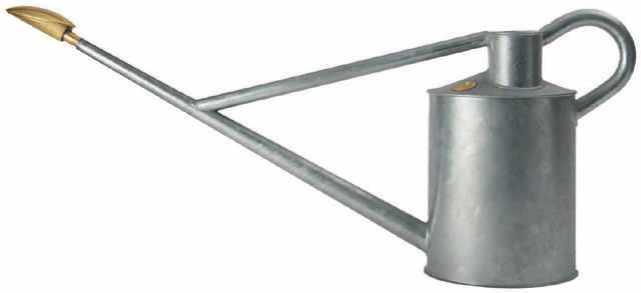
PROFESSIONAL CHOICE
The Warley Fall HDG – Two Gallon Galvanised, £150, Haws, 0121 420 2494, haws.co.uk
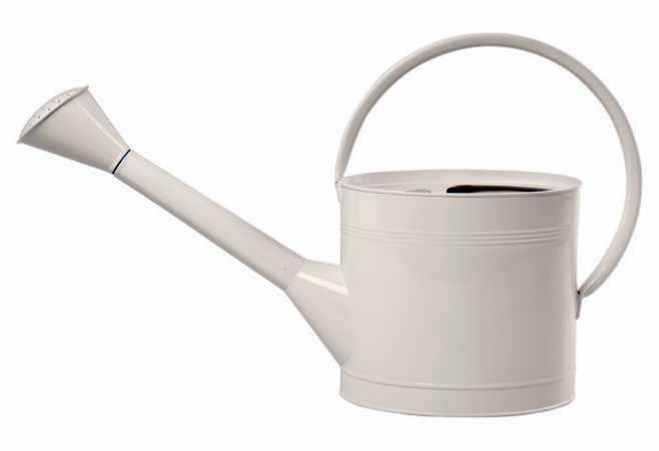
ELEGANT
Stone Waterfall 5-litre Watering Can, £34.95, The Worm That Turned, 0345 605 2505, worm.co.uk
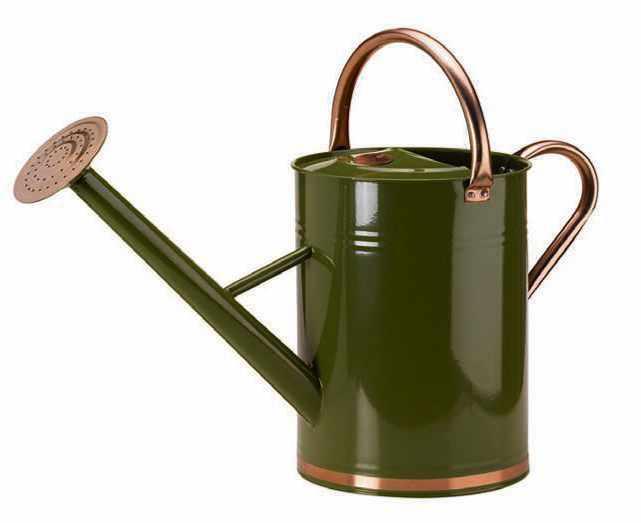
COLOURFUL
9L Watering Can, £32.95, Sarah Raven, 0345 092 0283, sarahraven.com

Find more top watering can picks by scanning the QR code with your phone camera, or visit gardensillustrated.com/ watering-cans

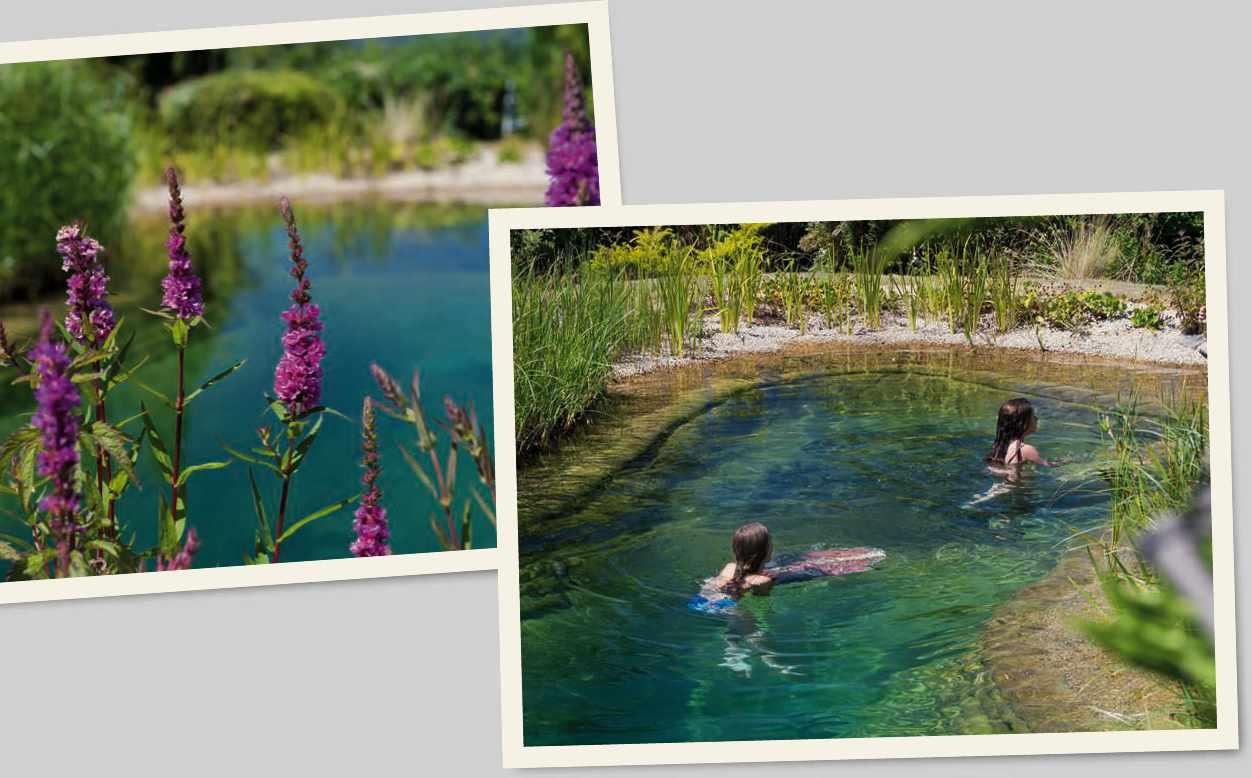




























Join us on a five-day tour to some of the best gardens in Brittany in northwest France with our host, Sissinghurst head gardener Troy Scott Smith, and tour leader, gardener and French specialist Kirsty Fergusson
Our exclusive tour will visit the most exciting gardens in Brittany, known for its mild, maritime climate and rich soil, as well as its diverse and characterful gardens.
Tour leader Kirsty Fergusson and host Troy Scott Smith will guide us through the trip, starting with the ferry crossing from Portsmouth, through garden visits including Kerdalo, the lauded garden recently acquired by footwear designer Christian Louboutin, with head gardener Tangi Rabin. Other visits include Le Jardin de Pellinec, a series of interlinked plantsman’s gardens filled with a range of rare and beautiful plants from different climatic regions; Jardin Exotique, overlooking the Bay of Morlaix, a spectacular setting for its collection of sub-tropical plants; and Jardin Georges Delaselle on the Ile de Batz – an island with no cars. This special tour also includes Le Grand Launay, a contemporary topiary garden featured in Gardens Illustrated January 2024 (Issue 334); Kerfouler, a private garden of 14 very different garden spaces, ranging from water and wildlife to grasses and perennials; and Le Château de la Ballue, a 17th-century château with two dramatically different gardens, each designed to stimulate the intellect as much as the eye. Our hotel, the 5-star L’Agapa, is exceptionally located facing the sea in the picturesque seaside town of Perros Guirec, between the Côte Sauvage and the Pink Granite Coast.
Price per person, based on two people sharing, is £3,250 (a single supplement of £425 is levied by the hotel).
The price includes four nights’ bed and breakfast at the five-star L’Agapa Hotel, Perros Guirec in Perros Guirec; plus three evening meals with wine and four lunches; return ferry crossing from Portsmouth to Caen; private coach transfers for the duration of the trip, starting and finishing at Portsmouth International Port; guided visits to gardens; services of the tour host and tour leader; detailed programme and garden notes.
To find out more scan the QR code right with your phone camera or go to gardensillustrated.com/brittanyholiday

This tour has been arranged exclusively for readers of Gardens Illustrated by Fine and Cultural Tours – the home of Boxwood Garden Tours – a quality specialist garden tour company set up in 1990. Please note that itineraries may be subject to change for reasons beyond Gardens Illustrated’s control. Please see Boxwood’s booking conditions for further information.
Fine and Cultural Tours – the home of Boxwood Garden Tours, 1 West Street, Buckingham MK18 1HL, UK.
Tel +44 (0)1280 430175 Email mail@boxwoodtours.co.uk Website boxwoodtours.co.uk
In summer, the graceful, arching branches of this spreading tree are covered with large, star-shaped flowers, which are made of creamy-white bracts that age to pink. Showy, edible, strawberry-like fruits follow, and the stunning autumn foliage colour ranges from vivid orange to red. It has inherited the exfoliating bark from one parent, C kousa, while the other, C capitata, has influenced the semipersistent foliage; both features are much appreciated throughout winter. This spontaneous hybrid was found in Norman Hadden’s Somerset garden in 1958. AGM*.
Height and spread 8m x 6m. Origin Garden.
Conditions Moist, well-drained, moderately rich soil; sun or part shade. Hardiness RHS H5, USDA 4a-8b†
Season of interest Flowers June –July; fruits August.
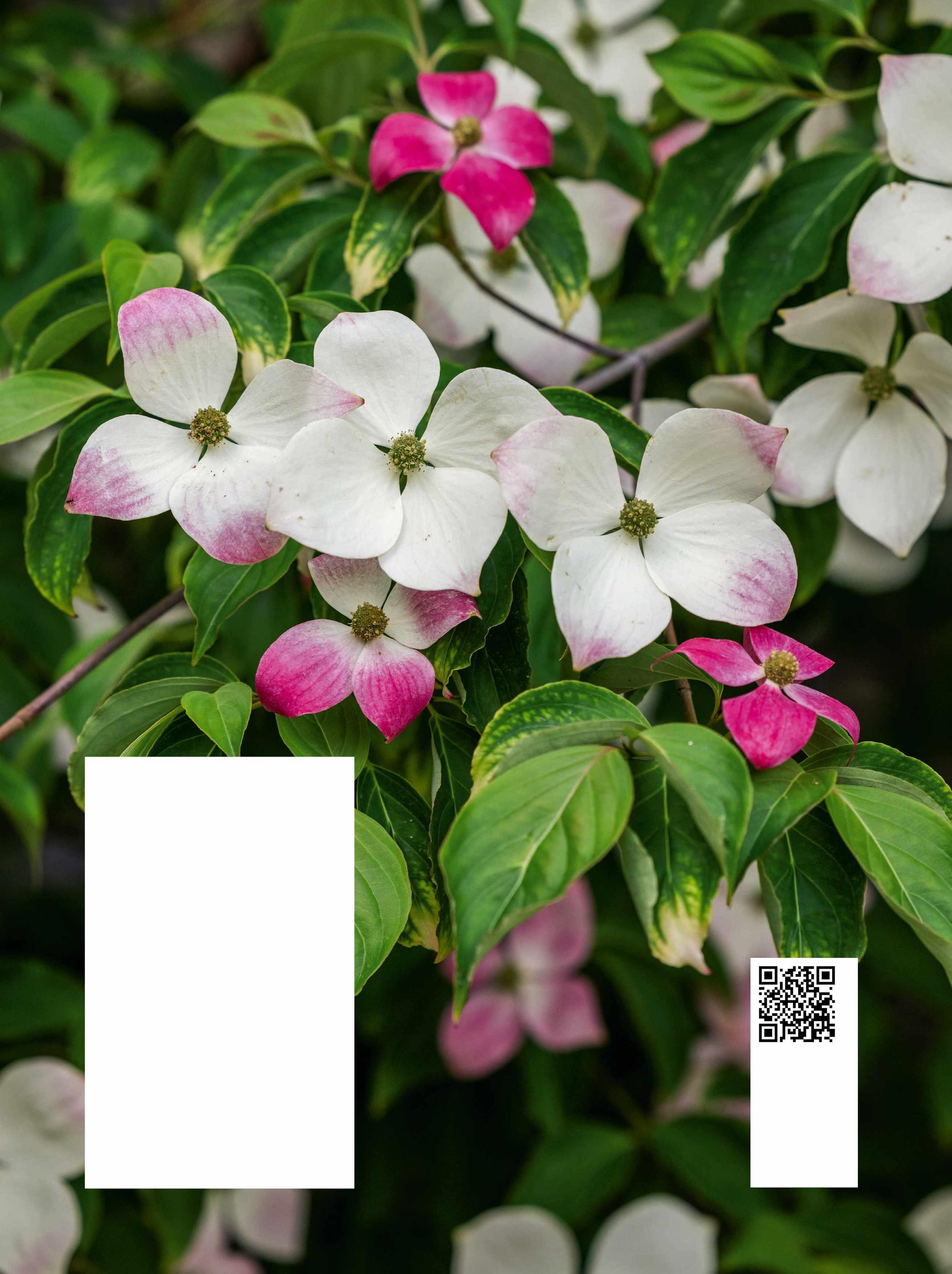
SCAN HERE
Scan the QR code with your phone camera to watch our video, and discover why Cornus ‘Norman Hadden’ is Andrea’s plant of the month.

With summer in full swing, Lowther Castle’s head gardener Andrea Brunsendorf looks to plants and shrubs that bring a more naturalistic feel to the garden
PHOTOGRAPHS ANDREW MAYBURY
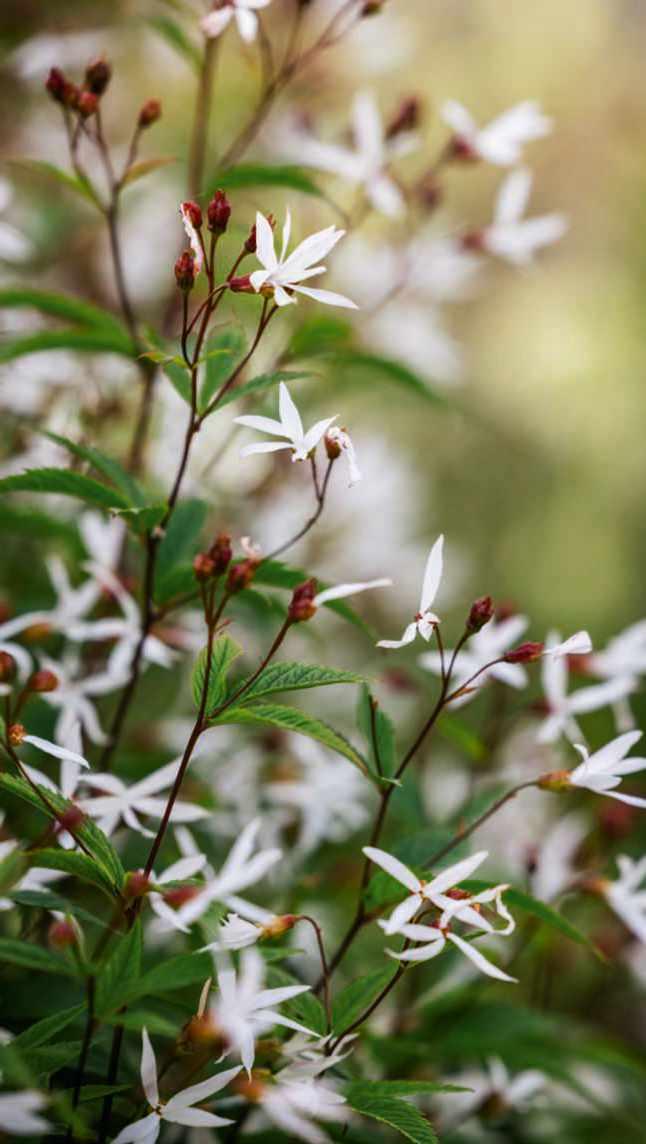
An upright perennial with a woody base, from which bronzy stems emerge that darken to a chestnut-red, contrasting the trifoliate olive-green leaves before those turn orange-red in autumn. It produces masses of star-shaped, white flowers contrasting with the reddish flower stalks and calyces. So, besides its attractive foliage, it also creates a very airy floral effect; I love it. It doesn’t like to be cramped; competition weakens it, and at the end of the season, we don’t cut it back, as winter winds will do that for us. AGM.
Height and spread 1m x 60cm.
Origin Eastern North America.
Conditions Moist, well-drained, organically rich soil; full sun to part shade. Once established, tolerates dryness.
Hardiness RHS H7, USDA 4a-8b.
Season of interest Flowers May – August; seedheads September – mid-November.
This plant is not picky at all. It grows vigorously along seashores, on snowcovered mountains and in humid, wet or dry summers. The fragrant, purplish-pink flowers with abundant golden stamens attract many pollinators. The distinct foliage is rugosa green, with conspicuous veins, and the voluptuous red hips are displayed well against it before it turns to an excellent orange-red. It may be perceived as an underdog in rose society, but I feel so fortunate to be able to pass such a beautiful naturalised specimen on my daily walk to work.
Height and spread 1.7m x 1.7m.
Origin Northern China, Korea and Japan. Conditions Moist, well-drained, organically rich soil; sun or part shade.
Hardiness RHS H7, USDA 2a-7b.
Season of interest Flowers May –September; fruits late August onwards.

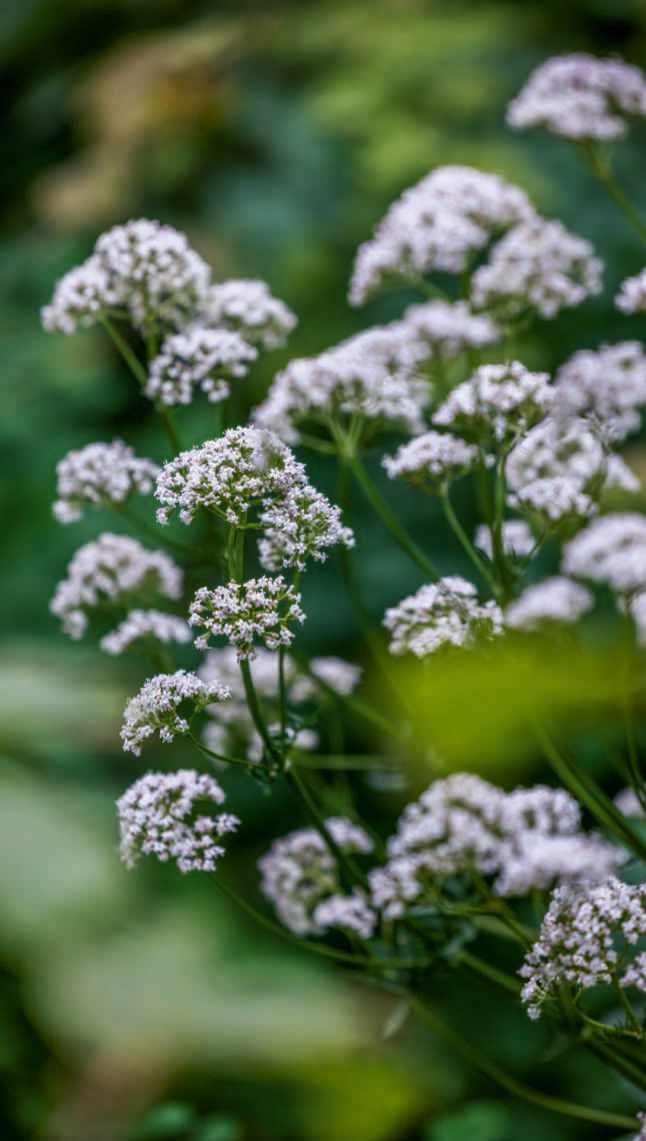
Something of a Marmite perennial, but we love it at Lowther. It’s prolific in colonising the nooks and crannies of our castle ruin, and its delicate grace outshines unwanted ragwort, docks, and nettles, which compete for this precious space. Fragrant, star-like, white (sometimes pale-pink) flowers are arranged in dome-shaped clusters on tall stems. The clump-forming basal and pinnate foliage is also very aromatic. This plant is beloved by many pollinating insects, and its billowing habit lends itself to more naturalistic planting designs.
Height and spread 1.5m x 50cm.
Origin Europe, including Britain, to Western Asia.
Conditions Moisture-retentive, moderately rich soil; sun. Tolerates light shade.
Hardiness RHS H4, USDA 4a-7b.
Season of interest June – August.
In midsummer, this native plant grabs your attention with its sizeable saucershaped, light-blue flowers along countryside verges. This cranesbill is one of the last meadow flowers to bloom, attracting many insects. I like its lofty habit: flowers on longish slender stalks sit loosely above the deep-lobed and mid-green foliage. It is a clump-forming perennial easily raised from fresh seed in early autumn, and once established, it will self-seed. It is a wonderful wild thing and a good choice for a formal or informal garden setting.
Height and spread 90cm x 60cm.
Origin Europe to Himalayas.
Conditions Moist, well-drained, moderately rich soil; full sun to part shade. Best with consistent soil moisture.
Hardiness RHS H7, USDA 4a-8b.
Season of interest Late May – August.
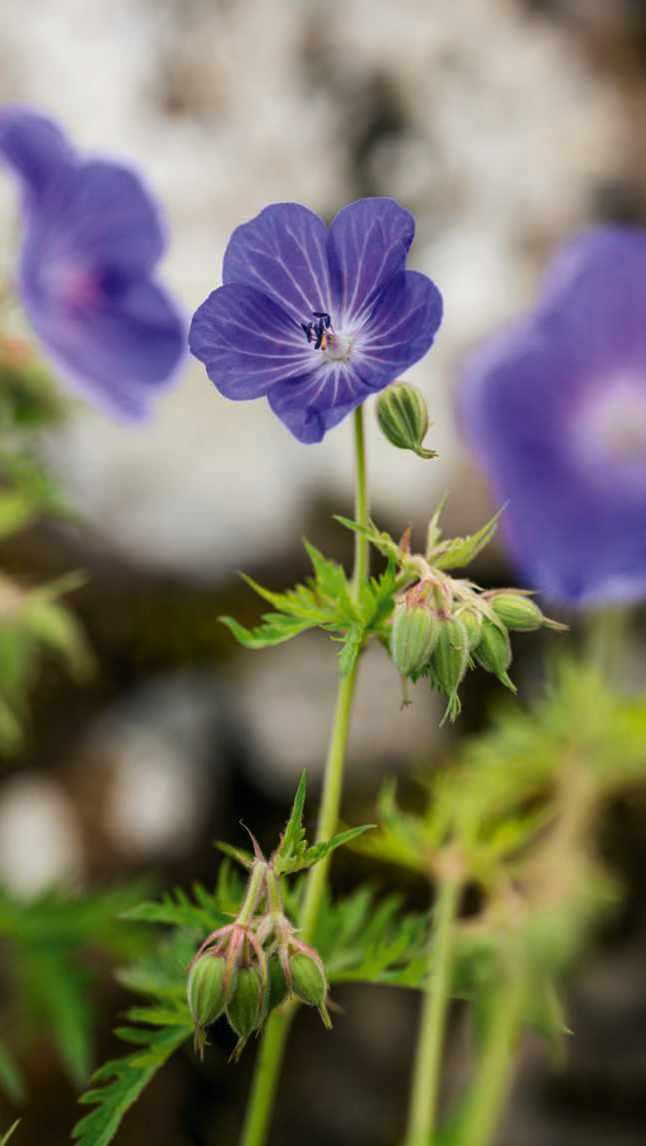
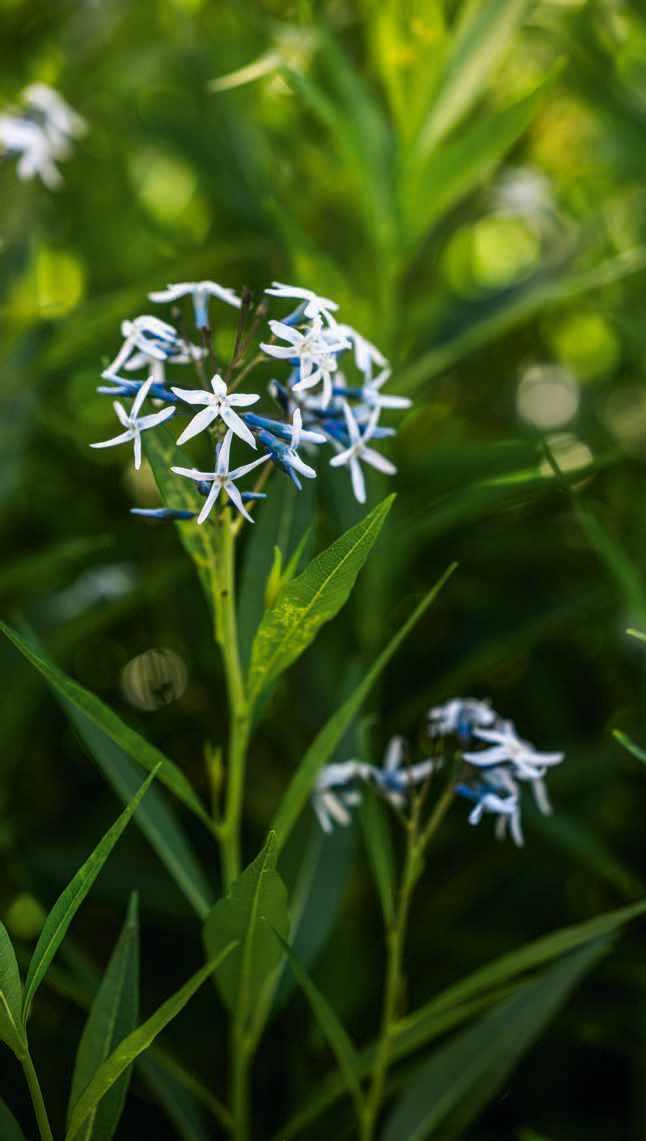
A clump-forming perennial with slightly arching stems from a thick, woody rootstock. The narrow, willow-like foliage with a conspicuous pale mid-rib and milky sap turns an attractive yellow in autumn. Star-shaped, pale-blue flowers are held loosely in terminal clusters that are slightly drooping. Deadheading will encourage rebloom. Fits well into an open woodland, prairie, formal border or urban landscape planting design, but plant in numbers for a stronger autumnal impact.
Height and spread 60cm x 90cm.
Origin Eastern North America.
Conditions. Moist, well-drained, moderately organic soil; full sun to part shade. Tolerates periodic droughts.
Hardiness RHS H7, USDA 3a-9b. Season of interest May – July.
Britain’s most commonly found terrestrial orchid grows wild in dry to damp grasslands and open woodlands. Midspring, leaves with maroon spots will appear, from which tall spikes with perfumed pale-pink to purple flowers will emerge, with three-lobed lips that have distinct dark spots and stripes. Can be easily cultivated in a long-grass area or meadow, and will naturalise in suitable conditions, and, in partnership with a mycorrhizal fungus, create large colonies as its tuberous roots bulk up quickly.
Height and spread 60cm x 30cm.
Origin Europe, including Britain, to Eastern Asia.
Conditions Moist, well-drained, moderately rich soil; full sun to part shade. Best in leafy soil and dappled light.
Hardiness RHS H5, USDA 5a-8b.
Season of interest May – August.






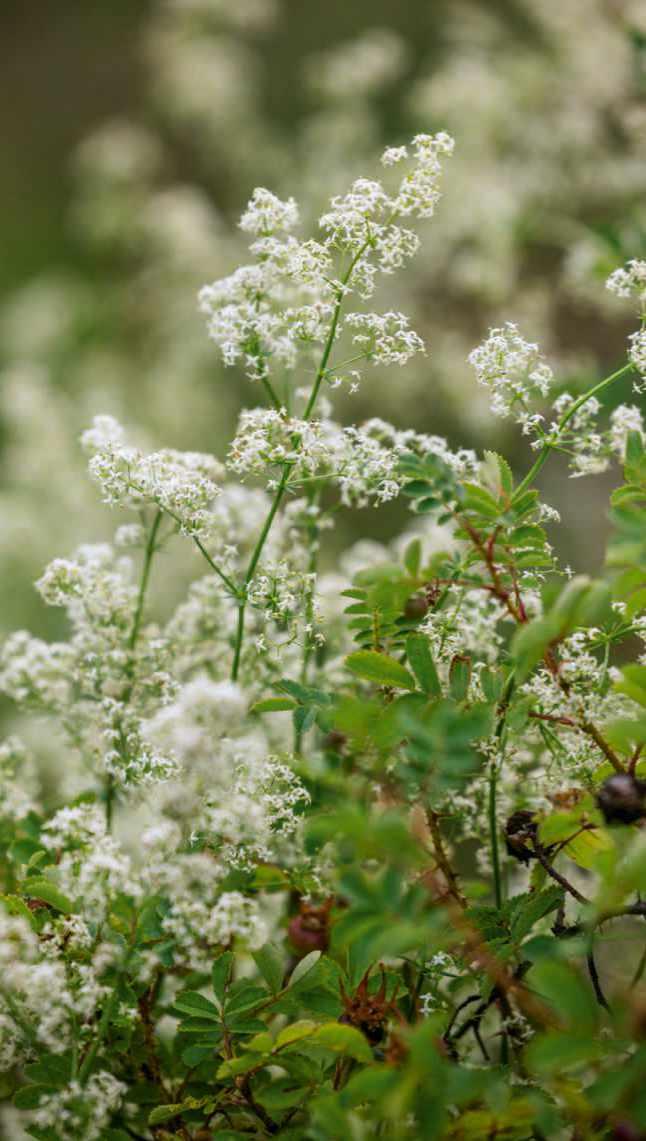
A widespread and fairly common summer-flowering wildflower that clambers in hedges, open woodland, and grasslands. This short-lived perennial is related to the commonly cultivated, spring-flowering sweet woodruff. It has distinct whorled leaves and small white starry flowers. These create unruly candy-floss clouds across the meadows of Lowther and are also pleasantly scented. It spreads via rhizomatous roots but can also be sown in situ in autumn, utilising the winter cold for germination.
Height and spread 1m x 60cm.
Origin Europe, including Britain, into North Africa and southwestern Asia.
Conditions Moist, well-drained, moderately rich soil; best in part shade. Hardiness RHS H7, USDA 4a-8b. Season of interest June – September.
A wonderful rambler with long arching stems armed with yellow hooked spines and embellished by delicate, grey-green foliage. From yellow buds, large sprays of small, white, single flowers filled with yellow stamens appear, transforming into clusters of smallish, oval, orange hips. Allow this beauty some space; it can be very vigorous when happy, with new stems stretching to 3m in a year. It forms large mounds, scrambles up trees, or can be trained against a wall. We grow it on the south and east walls of the castle ruin.
Height and spread 4m x 8m.
Origin Western China.
Conditions Moist, well-drained, organically rich soil; full sun, but will tolerate part shade.
Hardiness RHS H5, USDA 4a-7b.
Season of interest Flowers June – July; hips September onwards.

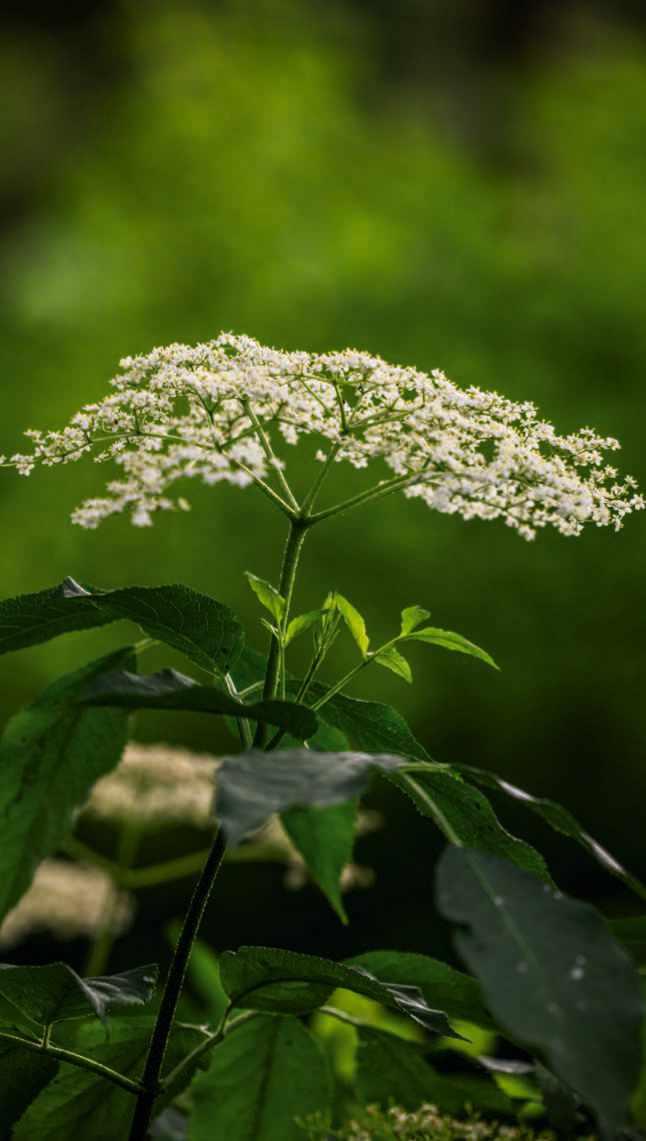
The elder is a familiar, long-cultivated shrub or small tree with its rugged bark, and heavenly scented flowers in delicate white umbels that turn into heavy bunches of shiny, black berries. At Lowther, we encourage this native in the fringes and along our vast yew shelter belt, while selectively removing it in our more managed areas. Its natural beauty enhances the edges of any garden, and its flowers form the very essence of a British summer drink.
Height and spread 8m x 4m.
Origin Europe, including Britain, into North Africa and southwestern Asia.
Conditions Moist, well-drained, organically rich soil; full sun to part shade. Tolerates chalky soils.
Hardiness RHS H6, USDA 5a-8b.
Season of interest Flowers May – July; fruits August – October.
‘Strulch’ is a scientific success story. At Leeds University, Dr Geoff Whiteley found he could replicate a natural process which preserves straw. He and his wife Jackie brought the new environmentally friendly, biodegradable mulch to market . Fast becoming the preferred mulch of professional and amateur gardeners.
Strulch is made from wheat straw and the mineralisation process preserves the straw and turns it dark brown. It has a neutral pH so can be used anywhere in the garden and it lasts for up to two years. Over time, the mulch improves soil structure and adds nutrients. The physical properties of the mulch and the added minerals deter slugs and snails.
Strulch is available in 9kg bags from our stockists. For best value buy direct in bulk on pallets of 12, 25, 40 or 48 x 13.5 kg bags.
veg the on it used have “I beds as a heavy mulch and experimenting in some areas as a no dig concept; laid it on cardboard on the beds
seed into it. I have used it on two of the herbaceous borders to keep the weeds down and keep the ground warmer to help protect the crowns.
Head Gardener, Floors Castle Gardens pleased extremely am “I with the product’s ability to suppress weed growth and have noted an observable improvement in overall plant health and soil structure over a wide range of plants with successive applications.
David Redmore, Director Garden and Landscape Design.
“We have been using Strulch for over 20 years, we use different mulches including home produced but Strulch is our ‘go to’ product where we need reliable weed suppression, moisture retention and preservation on the soil surface. Strulch is slow to breakdown, successful where there is competing demand from hedges in herbaceous border designs and nonrotational areas of kitchen/ productive gardens. It is both lightweight and easy to apply and yet doesn’t blow off the bed, is quick to spread, it doesn’t clump or ball either and the depth of application can be varied easily. One can reliably get two years out of an initial application, and this allows us to vary our practices from year to year” Elizabeth Balmforth, Head of Gardens, Mount St John.

Used by major horticultural gardens
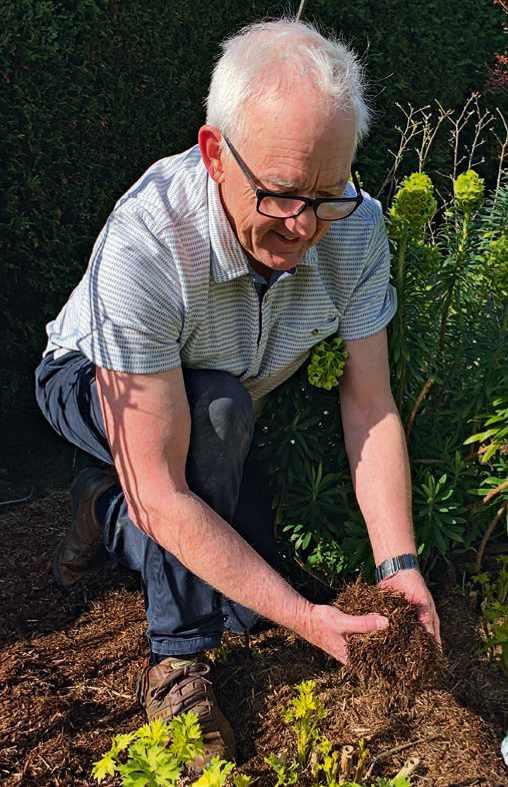
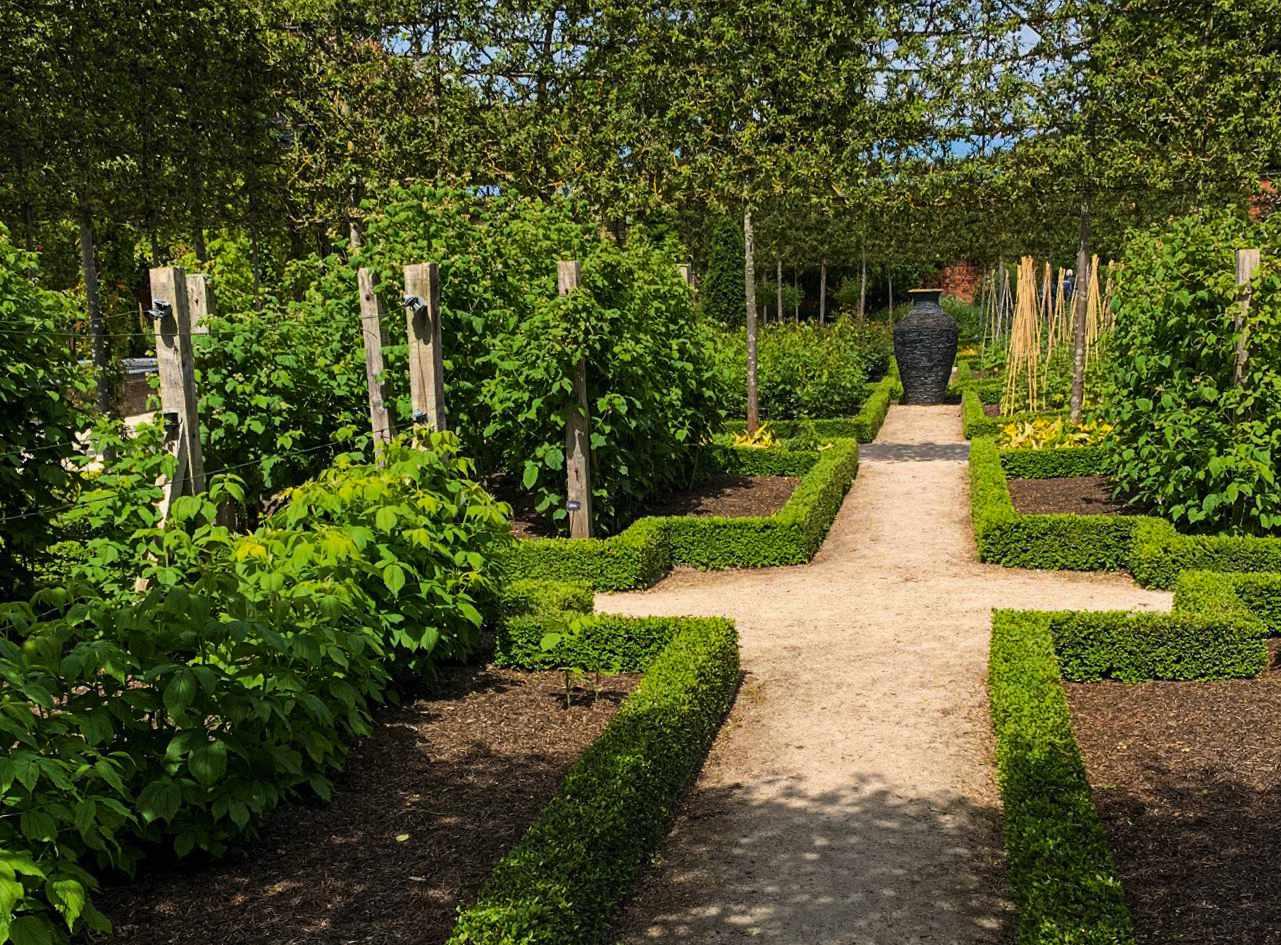
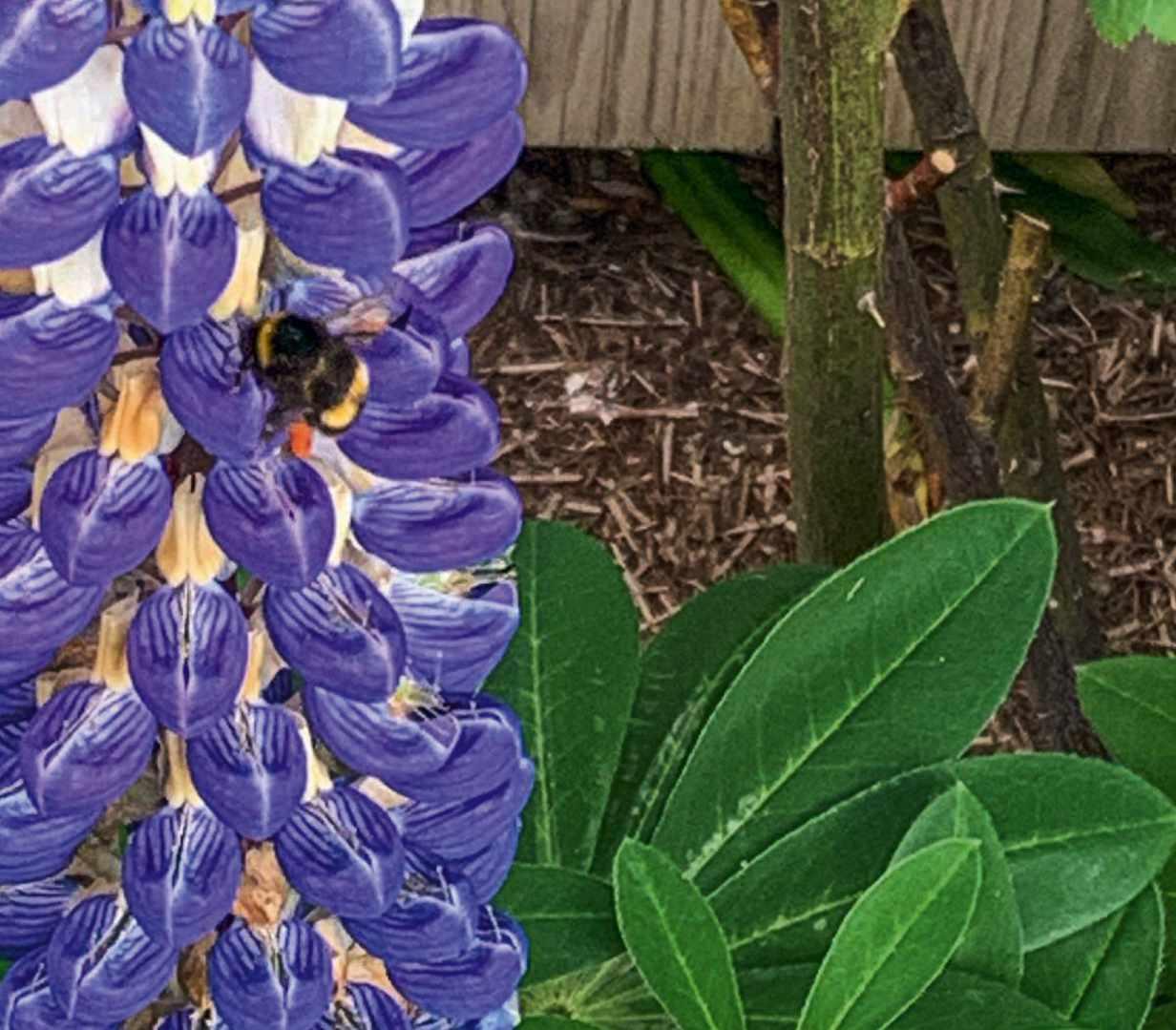
Our curated picks to help you grow and harvest your own fruit and veg
COMPILED BY MOLLY BLAIR
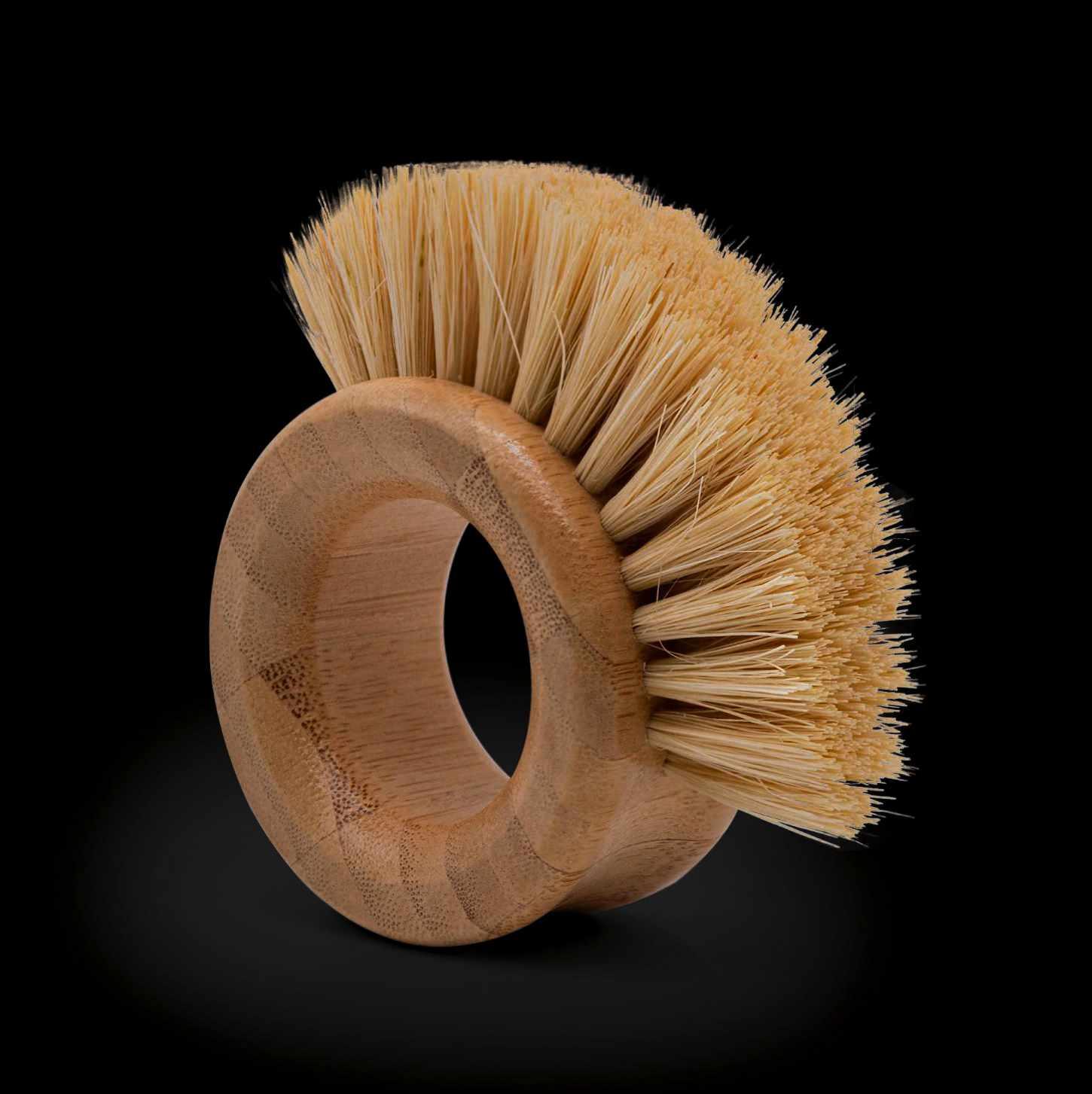
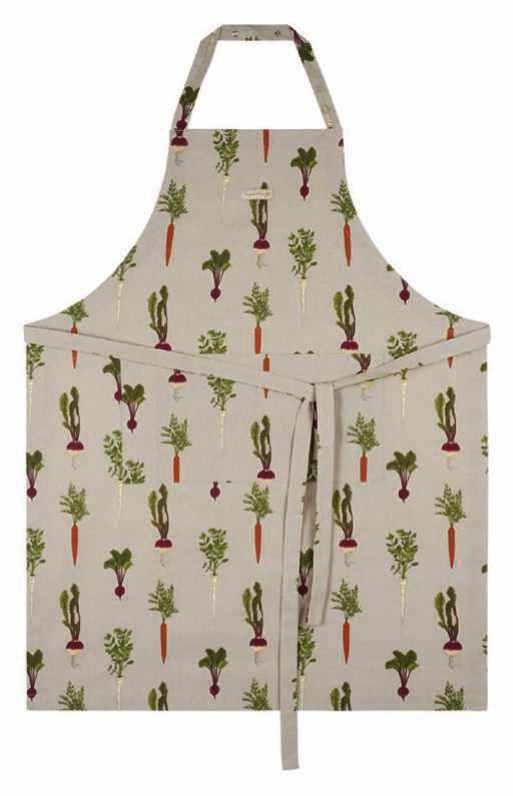

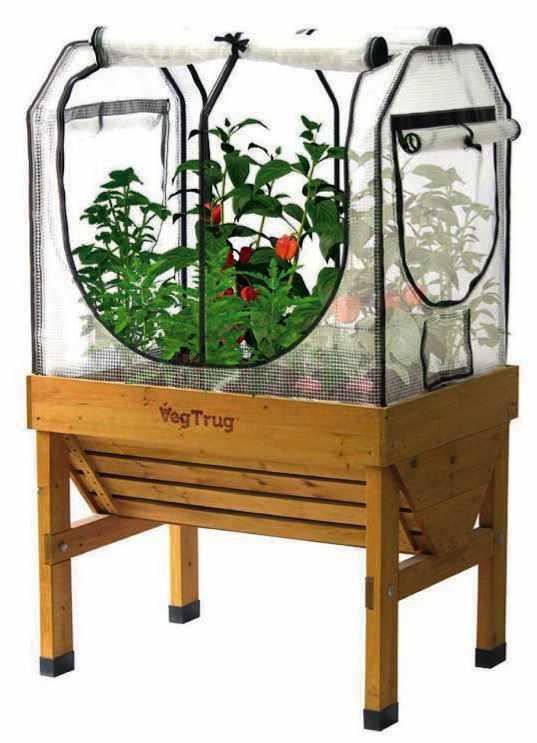
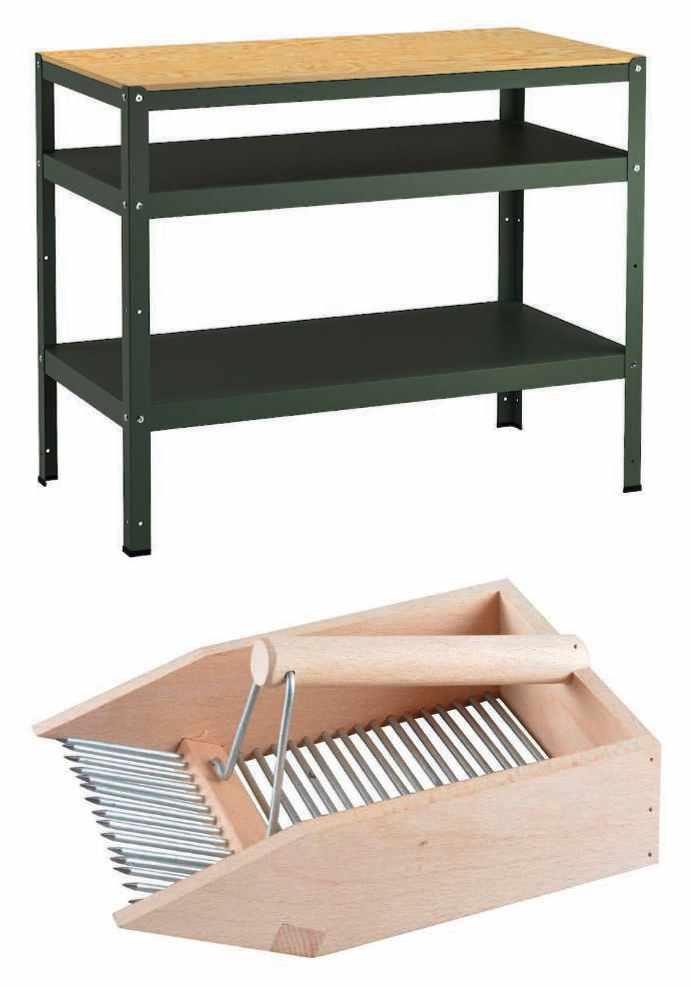

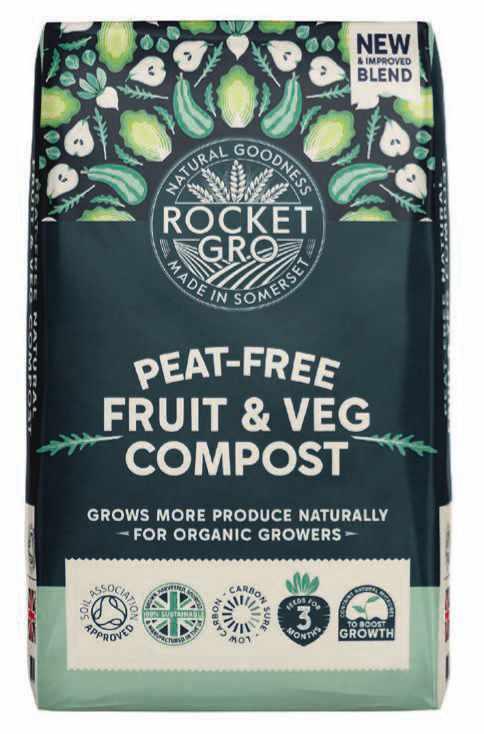
1. Ecojiko Bamboo Vegetable Brush, £5, 01900 269427, chimneysheep.co.uk 2. BROR Work bench, grey/green, £140, ikea.com 3. Wooden Berry Picker, £21.95, 0345 605 2505, worm.co.uk 4. Garden Riddle, £11.65, bulldoghandtools.co.uk 5. Peat-Free Fruit & Veg Compost, 40L, £10.99, 07936 928981, rocketgro.co.uk 6. VegTrug Classic Small, £159.99, and Greenhouse Cover, £79.99, both 01344 578000, crocus.co.uk 7. Niwaki Hori Hori Knife and Canvas Holster, £32, 01747 445059, niwaki.com 8. Home Grown Adult Apron, £26, 01778 560256, sophieallport.com

1. Wooden Dibber, £7.95, 0345 092 0283, sarahraven.com 2. Original Veggie Bed 6-in-1, sage, £99.99, 0844 736 4208, suttons.co.uk 3. Moore Wirework Cloche, 78cm, £50, 01993 845559, gardentrading.co.uk 4. Natural Rubber Seed Tray, 30-cell, £17.99, 01344 578000, crocus.co.uk 5. Classic Garden Potting Gloves, sage, £5, 01993 845559, gardentrading.co.uk 6. Deep Root Trainers, 32 cells, pack of two, £27.99, 0844 736 4208, suttons.co.uk 7. Wire Basket Set, set of three, £59.95, 0345 092 0283, sarahraven.com 8. Potato Fork, £120.56, bulldoghandtools.co.uk

Save when you subscribe to the digital edition






FREE set of Gardening Gloves (WORTH£25)
Simply add to order and apply promo code GI624 in basket
Available in heights 5ft – 12ft Prices start from just £299
Designed to keep you safe on uneven ground, the Fully Adjustable includes even more features than our original models:
• Secured with new pins for fast and ergonomic adjustment.
• Increased guardrail height allowing you to tuck in to work hands free.
• Extra strength due to the reengineered legs which are 15% stronger.
• Now up to 80% more adjustable.
NEW hedge-proof locking pin
Wide clawed feet for grip on soft ground

Quality time in the garden doesn’t have to be spent gardening, says Nigel Slater. You also need places for food and conversation or just to sit and savour the moment
ILLUSTRATION PAUL WEARING PORTRAIT JENNY ZARINS
Even the words ‘al fresco’ have a spring in their step. They sound jolly, even a little frisky. (I confused them with ‘in flagrante’ for many years.) Now, with sun hopefully beaming and the garden in full summer colour, is the time for some open-air activity, be it lunch in the garden or simply dozing in a deck chair.
One of the first horticultural mistakes I made was forgetting that a garden needs somewhere in which to sit. So busy was I with making vegetable beds and compost heaps, creating a shade garden and even re-laying a terrace that I gave little or no thought to where anyone might sit or eat. A place in the garden to just ‘be’.
All that changed when I invested in a zinc-topped garden table and a set of four heavy wooden chairs, an addition that immediately became the site of early morning pots of coffee, breakfast and lunch. Soon, meetings were held in the garden and within weeks the table was covered in wine stains, olive oil smears and coffee drips. Friends could at last sit and soak up the birdsong and the tapping of the woodpecker and ponder the varieties of butterfly that came to visit. Crucially, I had somewhere to sit and work.
For about six weeks each summer, I turn my garden table into my desk. Pelargonium ‘Lord Bute’ and P. ‘Attar of Roses’ are pushed to one side, their place taken by laptop, pencils and notebook. I write in the shade of a Nottingham medlar, whose canopy keeps the sun from the screen, even sending down a few late petals to fall gently on my keyboard.
If I am outside, I want to be within touching distance of plants. I may be grazing on a tomato and nasturtium-leaf
Making time to sit and simply take in the delights of the garden is a must. Surely it is why I made a garden in the first place?

salad or sipping a glass of elderflower cordial, but I need to be able to lean over and stroke a leaf, fondle a fern or stick my beak into a rose. Only two feet away from my seat are terracotta pots of yew and ilex through which to run my fingers; a climbing rose – Peter Beales’ cheeky little Rosa Pippin (= ‘Beajaffa’) –and the costume-jewellery flowers of what I still call Dicentra ‘Alba’ (correctly, now the ridiculously difficult-to-pronounce Lamprocapnos spectabilis ‘Alba’.) There are foxgloves too, but they are not for touching, however tempting it is stick my fingers into their poisonous purple pixie hats.
If ever I rethink the garden path, and I probably should, I will design it so I can go from kitchen to garden table in bare feet. Coarse, sun-baked gravel does nothing for my tender English soles. Next time it would be slabs of York stone or possibly hoggin. Certainly not the pointed beads of torture I have now.
Another rethink would involve a pergola of some sort over the table. Nothing too large, and probably of the rather rustic wooden variety, it would have wisteria, perhaps the charming Wisteria floribunda f. rosea, and a rose such as the apricot-buff climber Rosa ‘Alchymist’. Honeysuckle, though tempting, has a habit of dropping its sticky berries in late summer.
Eating al fresco is all very well – I remain convinced that food really does taste better outdoors – but there are simpler pleasures to be had en plein air. The ritual of stopping for coffee mid-morning or for a mug of tea in the afternoon. Short breaks that enrich our gardening days.
Evening, just as the light starts to drop, is for me the best time to be al fresco. It is then that the light is at its most gentle, the colours deeper (Salvia ‘Amistad’ is positively delicious at twilight) and the air is particularly calm and still. There is less birdsong than at an outdoor breakfast, of course, but there are mysterious rustlings in the undergrowth to ignite the imagination. This is also the time to pour a glass of last year’s damson gin, a tiny glass to sip as the sun goes down.
That said, it takes something of an effort for this amateur gardener to just sit and breathe in the garden. Within five minutes of sinking into my chair, I will spot an azalea that needs deadheading or a wayward stem that could do with tying up. It takes a stronger will than mine to turn the pages of a book knowing the sweet peas need watering. To be honest, I am no better in the kitchen, finding myself unable to enjoy a glass of wine while there’s washing up in the sink.
This summer I will do better. There will be a glass of rosé drunk while the path is still littered with dead petals, and tea will be served (cake too), even though I really should be clearing the leaves from the gutters. Making time to sit and simply take in the delights of the garden, to breath, to smell, to hear, all the little wonders that exist in this space, is a must. Surely it is why I made a garden in the first place? A place in which to ‘be’ as much a place in which to grow and work. What was that about ‘time to stop and smell the roses’? Well, perhaps that time is now. ■


ONE YEAR GOOD GARDENING DIPLOMA
September 2024 – beginning July 2025 – BOOKING NOW
Covers the best in planting design while training in the more serious aspects of horticultural techniques. Practical sessions held at Arundel Castle under the guidance of head gardener Martin Duncan and at Sandhill Farm House, Rogate. Lectures by many leading gardening personalities and regular visits to outstanding private gardens. Students also learn to draw up planting plans. (1 day a week (Tues), 10.30am–3.15pm, over three terms)
THE ESSENTIAL GARDEN DESIGN DIPLOMA
January – March 2025 – BOOKING NOW
Based at the Chelsea Physic Garden and led by Rosemary Alexander and architect Catriona Rowbotham, the course is an overview of Garden Design, covering all the elements needed to rethink an average garden.Taking students step by step through site surveying, using the grid, horizontal and vertical features, garden layouts and planting plans, costing and specification, plus drawing tuition and homework on design and plant portfolios.Tutors are well respected in the industry and will guide students on how to succeed in this diverse profession. (2 days a week (Wed &Thu), 10.30am–3.15pm, plus 2 days homework)
GARDENING FOR BEGINNERS
April 2025
One of our most popular courses, led by master horticulturist Ben Pope, which aims to take each student through all the practical elements of caring for a garden from soil, tools, maintenance, seed sowing and propagating, weed control and pests and diseases.The first 3 days will be spent with lectures at the Chelsea Physic Garden and the final day will be spent gaining practical experience in Rosemary Alexander’s much praised garden near Petersfield and another private garden nearby, where Ben is in charge. Participants will be given a chance to prune, plant, sow seeds and regular maintenance tasks will be discussed. A light lunch and refreshments will be provided daily.

GARDEN DESIGN & CARING FOR YOUR GARDEN
Distance Learning Courses study anytime, anywhere in the world
A stepping stone to a new career.These two correspondence courses are a step by step guide to either designing your own garden or learning how to plant and maintain an existing garden: drawing up plans, hard landscaping, site analysis, planting, month by month tasks etc.Taught through a comprehensive course book, with projects submitted to us. (1-3 years to complete and individual assessment)
“Thank you for a really inspirational and life changing year”
Not sure which Diploma course is for you?
We prefer potential students to attend an Information Session when Rosemary explains the course and you can see our work space. JUST CONTACT US TO SET UP A DATE & TIME www.englishgardeningschool.co.uk
Email: info@englishgardeningschool.co.uk
Tel: 01730 818373
Based


Designer Andy Sturgeon has transformed a steep, grassy hillside on the Isle of Wight into a Mediterranean-style haven of meandering paths, architectural features and cooling water
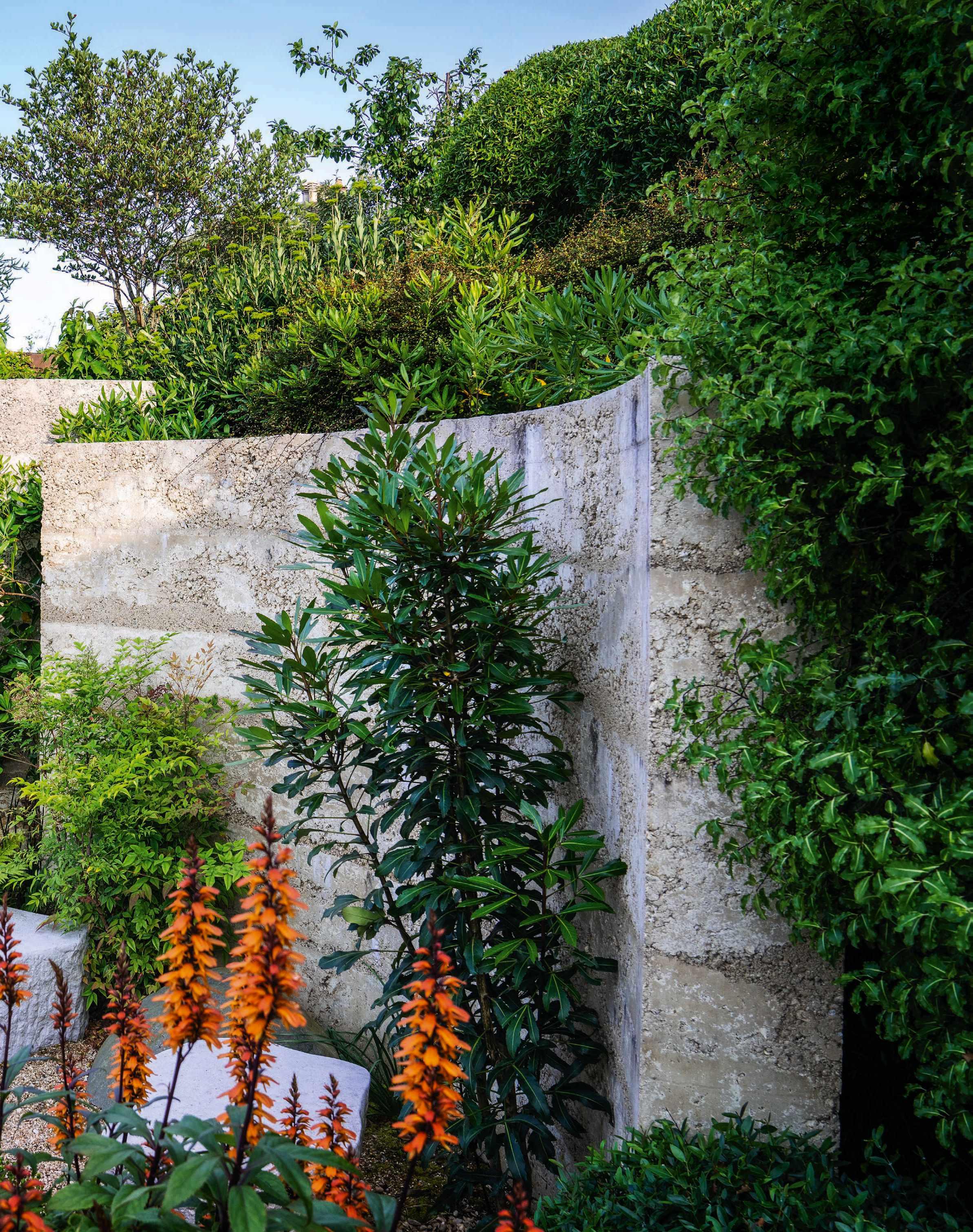
What Mediterranean-style garden. Where Isle of Wight. Size 972 square metres. Soil Clay augmented with sandy loam. Climate Maritime temperate. Hardiness zone USDA 9.
Sculptural curved walls shelter people and plants from the winds that whip the island’s coastline, providing a haven for Mediterranean species, including the sparkling orangeflowered Canary Island foxglove (Digitalis canariensis), rock roses (Cistus) and green cotton lavender (Santolina rosmarinifolia). The plants form a frill of colour and texture around this seating area, with its views over the garden to the Solent.
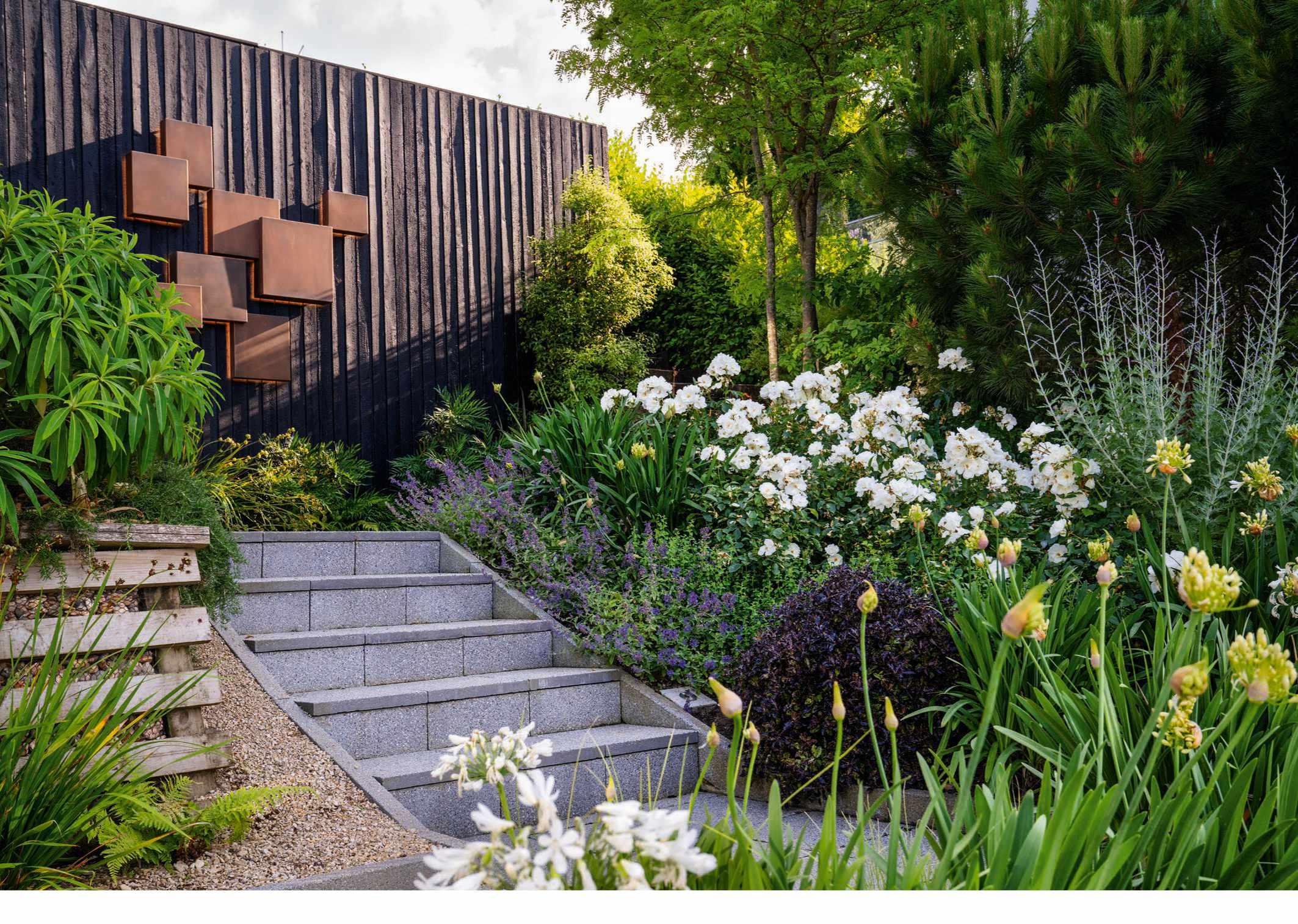
Winding along a dusty gravel path through a landscape of gnarled hawthorn, olive trees and silver-leaved shrubs, you feel immersed in what appears to be a wooded hillside cascading down to a Mediterranean coastline. To complete the illusion, curved walls stand proud like relics from old châteaux, while the soft splash of water on stone cools the air as you make your way down to the sea.
Cocooned in foliage and flowers, this leafy paradise is a far cry from the windswept one-in-three slope that greeted garden designer Andy Sturgeon when he first visited the site near Cowes on the Isle of Wight. “It was a place for goats, not people,” he says.
Andy’s clients had just moved into their new modern house, designed by architect Jonathan Manser, which was perched on top of the hill like a jewel without a setting. Having worked with Andy before, Jonathan recommended him to the couple, confident that he would transform the unpromising slope into something special. “The clients had already installed a garden on the west side of the house, with gabion walls and some planting, but they had no idea what to do with the north-facing slope that led down to the seafront. They have a passion for design, reflected in the house, and asked for a garden that would complement the architecture, with some shade and a seating area,” explains Andy.
The first step was to create more usable spaces and a route down the hillside that would be easy to
negotiate. “I had this idea of curved retaining walls, scattered like petals, creating new level seating areas, shelter and shade, while providing a backdrop to the planting. I’d experimented with similar structures in the Mind Garden for the RHS Chelsea Flower Show in 2022, and saw an opportunity here to develop the design further in a real garden,” says Andy. “I also designed meandering paths on a gentle incline, linked by short flights of steps, to create an easy journey down the slope.”
A tour of the garden starts at the front door of the house at the top of the hill, along a paved path edged with Phillyrea latifolia topiary, and down a couple of flights of steps to the main seating area below. Embraced by a feature wall, steel pergola and textured planting, this intimate setting, hidden from the road and house, offers a relaxing space warmed by the morning and evening sun. “The steps are made from Portuguese limestone with hand-fettled edges to give them a contemporary yet naturalistic quality,” says Andy. “I’ve used the same limestone for the terrace, designed with random-shaped pavers to resemble the cracks in dried mud.”
From here, you have two options: follow the meandering gravel path and steps to the gate at the bottom, or take a short-cut down another flight of steps that meets the gravel path further along. Alternatively, you can take a route from here back up the slope to a secluded gravel garden decorated with informal sculptural stone seats and a pebble-lined water feature. “I’ve included another small
To continue turn to page 40
Above The West Garden, above the house, features a terrace and steps leading up to a charred timber wall decorated with a copper light sculpture, designed by Andy to glow in the evening. He augmented the existing planting of white roses and Salvia ‘Blue Spire’ with agapanthus, Libertia grandiflora and honey-scented Euphorbia mellifera
Right above The Grade II-listed church next door has been softened with small evergreen trees, including Acacia pravissima and Phillyrea latifolia, together with shrubs and grasses that mask it from the main seating area beneath the steel pergola.
Right below Carved out of the hillside, this stylish terrace offers panoramic views. Portuguese limestone pavers have been cut to resemble cracked earth and the steps have hand-fettled edges. A Corten-steel firebowl, flanked by Ozothamnus rosmarinifolius ‘Silver Jubilee’, complements the modern sofa and chairs by Manutti.

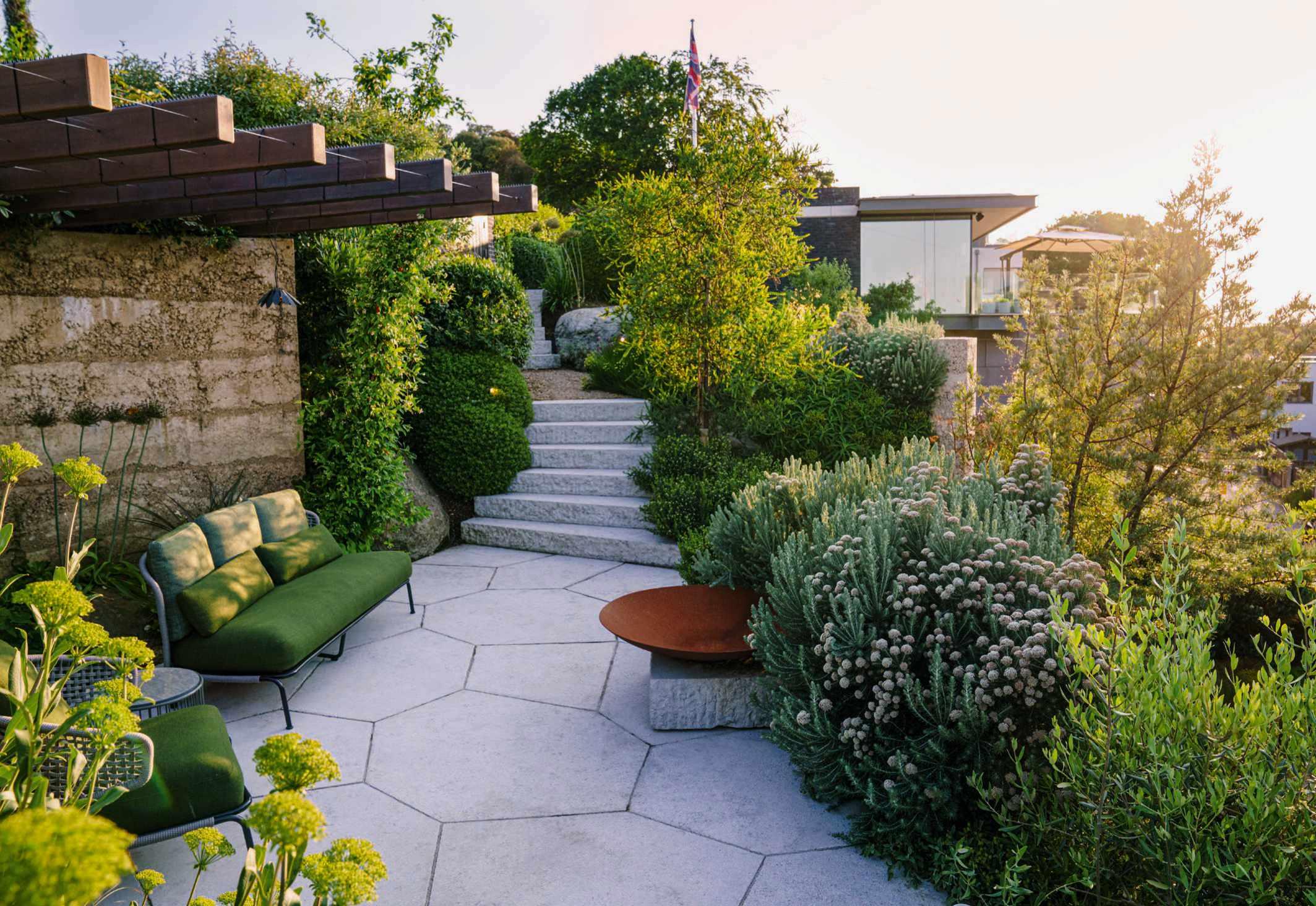

Throughout the garden, curved walls are strategically placed to secure the hillside and set off the rich matrix of mostly evergreen planting around them. Water spills from spouts in the walls to resemble a stream flowing down the slope, but in fact each feature is self-contained with its own pump.
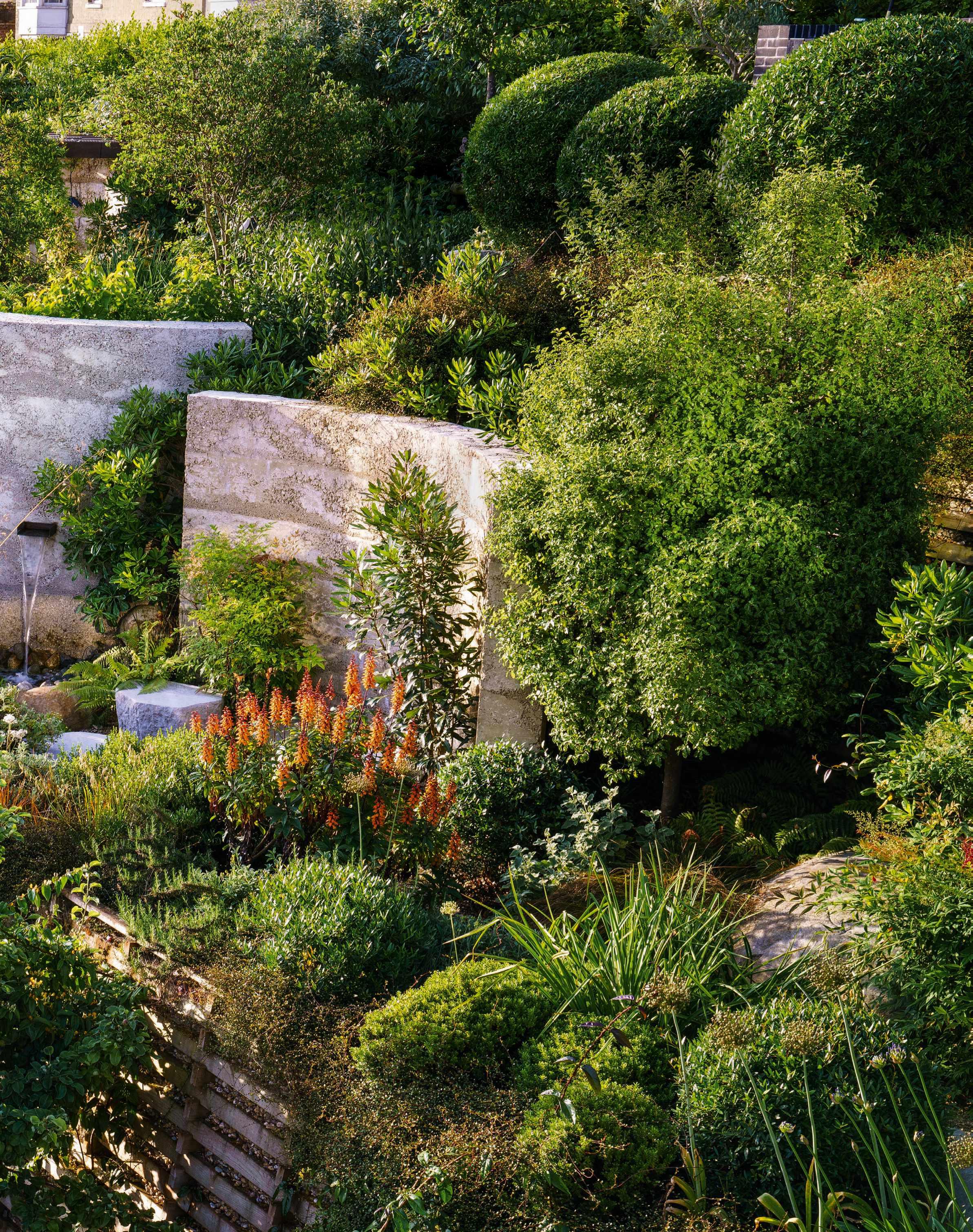
I had this idea of curved retaining walls, scattered like petals, creating new level seating areas, shelter and shade
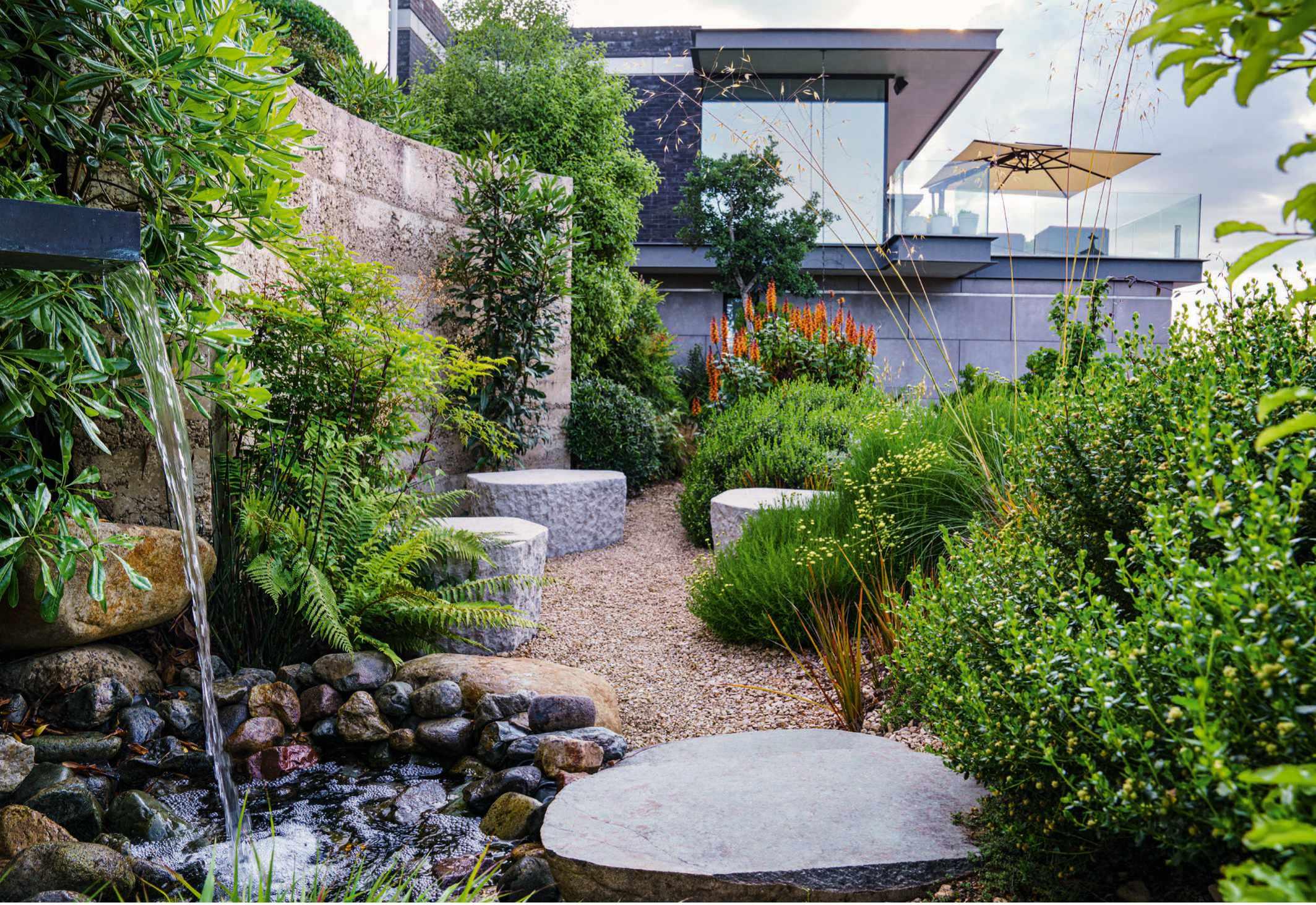
gravel path further down the main track that offers yet another route back up towards the house. These secondary pathways provide more scope for exploration and different views over the garden towards the coast. They’re set between existing wooden crib walls, which help to shore up the bank but are not very pretty, so we’ve disguised them with climbers, a mosaic of shrubs, grasses and flowers, and trees including Quercus suber, Arbutus unedo and Crataegus prunifolia.” Another crib wall in the West Garden near the house is hidden behind a charred timber feature wall and a copper sculpture designed by Andy and his team.
The garden is wrapped in Mediterranean-style planting, mirroring the garrigue of southern France with its tough shrubs and sculptural trees. “This style complements the house and maritime climate, and the mass of planting on the hillside blurs the boundaries, shielding the clients from neighbours and passers-by. Arbutus trees partially obscure the church next door, and the walls and planting open up vistas of the sea, revealed as you walk along the paths. I’ve also included rocky pools fed by water chutes that flow from the walls and bring the garden to life.”
The challenge for Andy was the north-facing site, which did not immediately lend itself to sun-loving Mediterranean species, but by strategically placing the structures and trees, he created pockets of light and shade, and matched each plant with its preferred environment. “Many Mediterranean species thrive under trees in their natural habitat and cope with fewer hours of sun than you might imagine,” he says.
“They also love the free-draining conditions on this hillside, although we had to augment the clay soil with sandy loam to create ideal conditions for some.”
Plants in the garden were chosen primarily for their foliage colours and textures. “I wanted plenty of evergreen interest and was keen to include the South American willow-like tree Maytenus boaria, which is hardy in coastal gardens and has tiny fragrant cream flowers in spring and beautiful bark. However, it needs plenty of light and I walked around with it for an hour before I found a suitable spot.”
Elsewhere, he used shrubs to provide structure and form, including Pittosporum tenuifolium, the sparkling Ozothamnus rosmarinifolius ‘Silver Jubilee’, Euphorbia mellifera and Baccharis patagonica – “a rare but brilliant plant that looks great arching over a path”. Bulbs such as alliums and perennials including the sizzling orange Digitalis canariensis add spots of colour as the seasons turn.
This timeless garden carved out of the hillside offers a fitting landscape for the house with its bold contemporary design. “The clients couldn’t be happier and use it most days, either as a route down to the town, or for relaxing and entertaining,” says Andy. “The evergreen structure and seasonal flowers offer something new to look at from week to week and you never get bored of the views across the Solent.” ■
Find out more about Andy Sturgeon’s work at andysturgeon.com
Above The contemporary house provides the backdrop to this secondary route through the garden, which features a Breedon gravel path through evergreen ferns and shrubs, with informal sculptural seats carved from lumps of limestone.
Right Glacial boulders have been sliced in half to create flat upper surfaces for steps, while retaining their natural rough textures. Like a Japanese stroll garden, the route is punctuated with features such as the water spouts that encourage you to stop and enjoy the ambience.
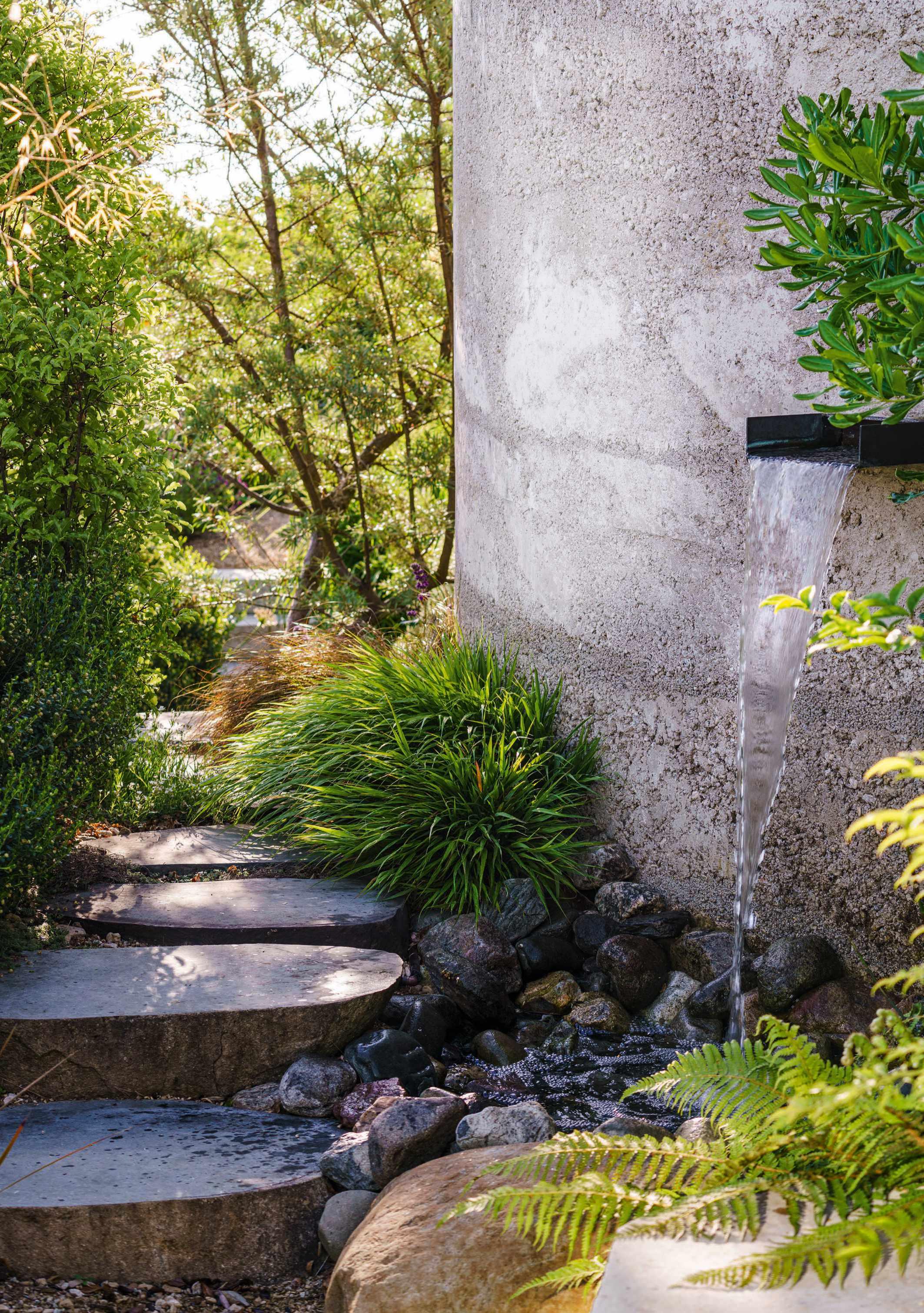
The concrete walls serve both as retaining structures, creating level areas for seating and planting, and as decorative features that evoke a sense of age and permanence.
“Curved walls are very stable, which can be seen in the way that a Roman arch can hold up an enormous viaduct, and they work perfectly here, where we needed strength and durability,” says Andy. He worked with contractor Jamie Haire of Ryan Alexander Associates to create the beautiful textured finish. “We try to limit the use of concrete in our gardens but I couldn’t see an alternative here to secure the steep slope safely. I wanted it to look like rammed earth and Jamie experimented with different mixes of aggregates until we achieved the desired colour. We built timber shuttering in situ for each wall and then poured several different mixes of concrete in layers into the mould to create the earthy texture and curved shape,” explains Andy.
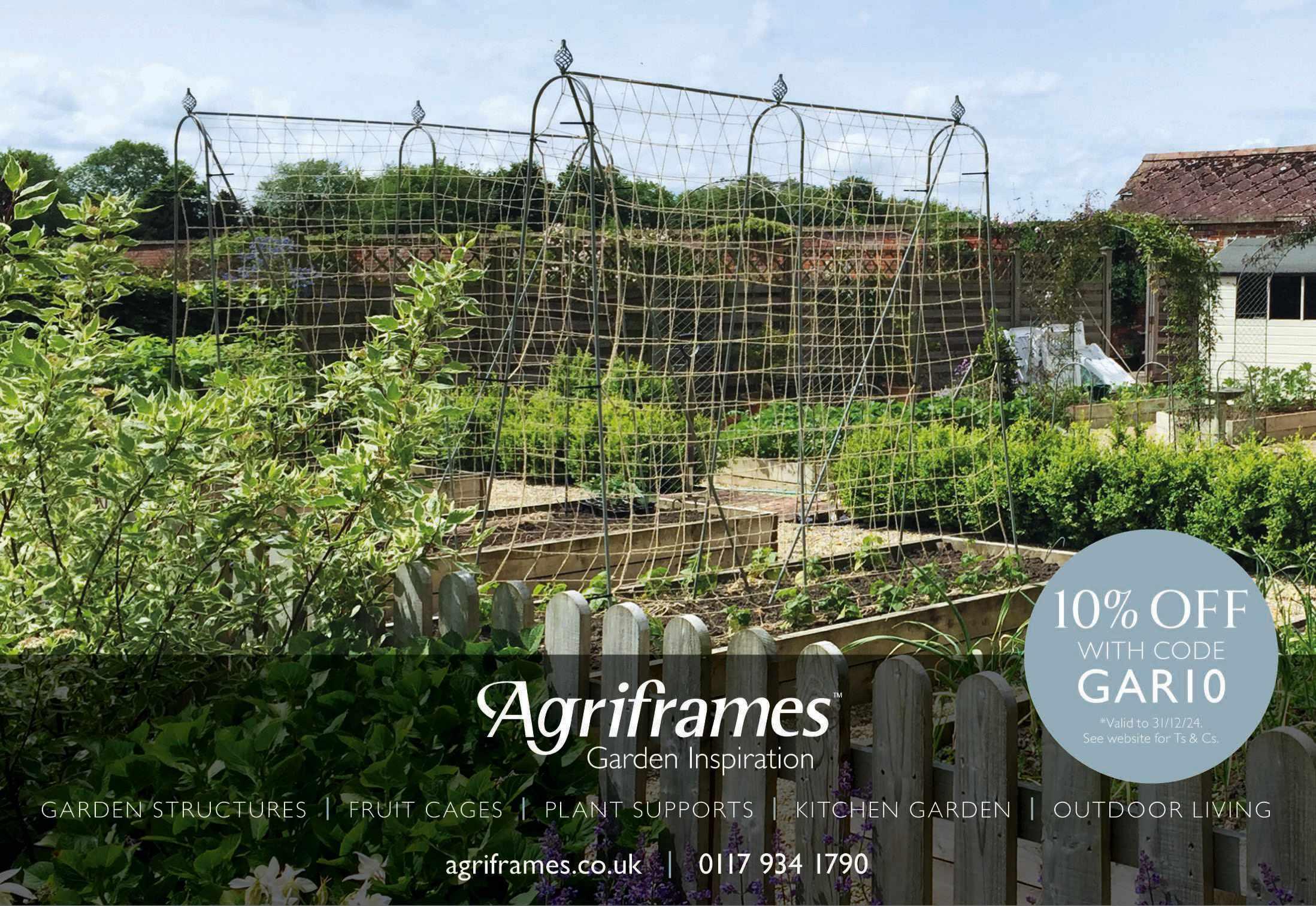
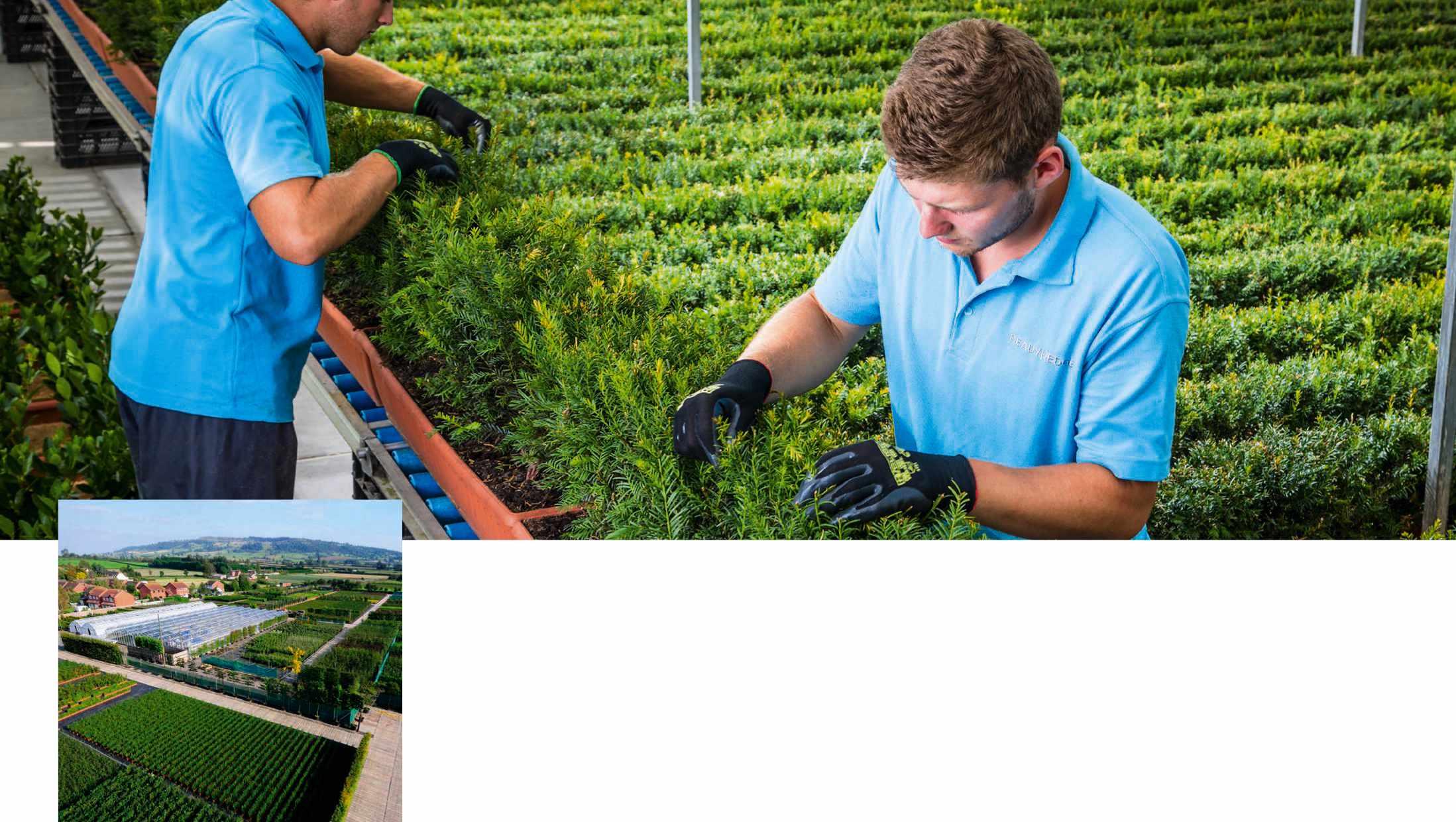
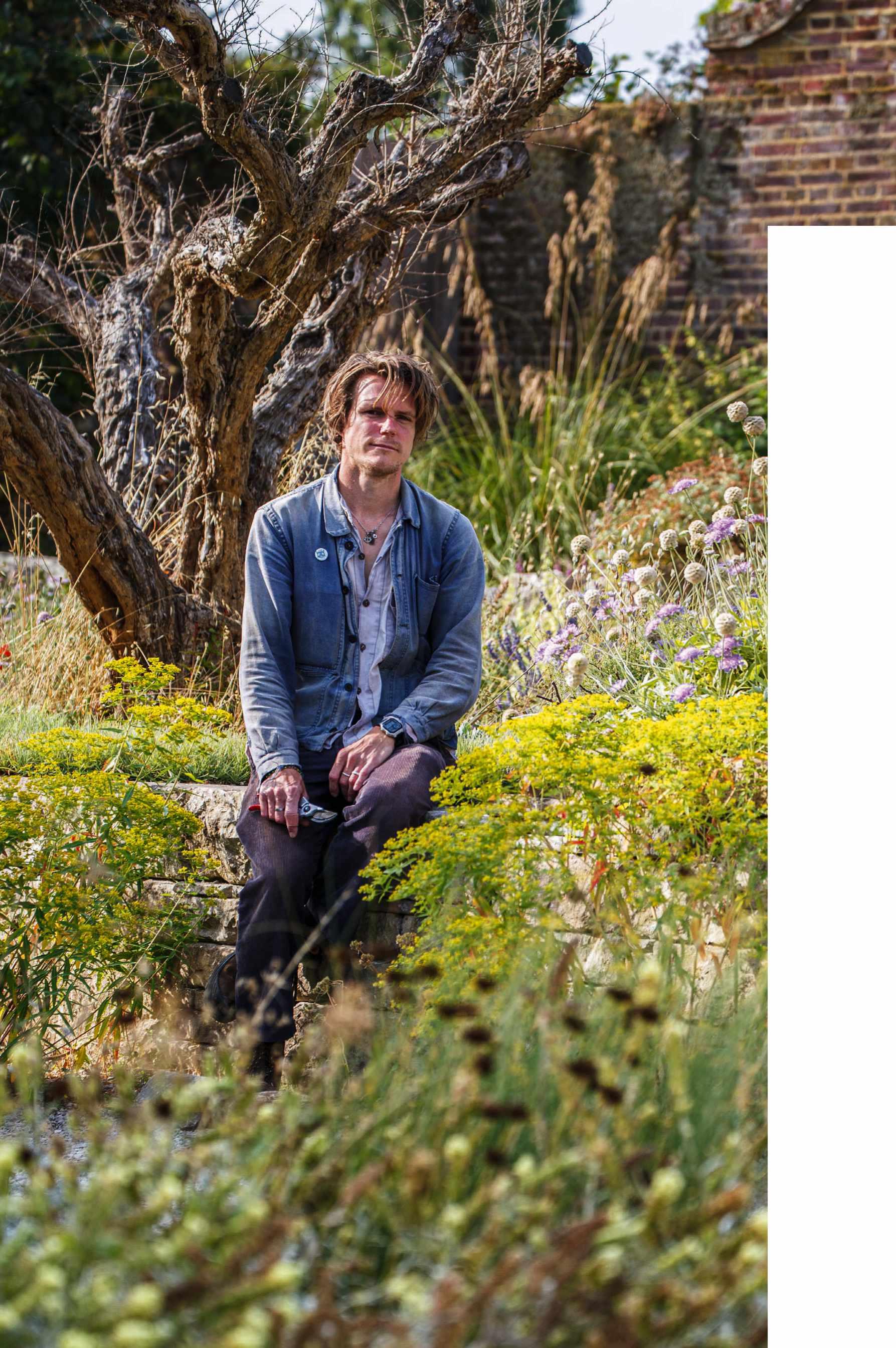
I love borders that are full to the brim, ridiculously romantic, and plants tumbling over paths so you feel like you’re really exploring a garden
Sissinghurst Scholar Paul is helping to restore and maintain areas of the famous Kent garden
PORTRAIT JOHN CAMPBELL
Earliest garden memory My dad is a gardener, so as a boy I’d join him on his rounds and earn my £5 pocket money. I learned what was a ‘weed’ and how to remove it, and which customers had the best biscuit selection.
First plant love Probably my collection of angry cacti that were packed on to our small kitchen windowsill. You took your life in your hands opening up the window.
Horticultural heroes Derek Jarman and Christopher Lloyd sparked my curiosity early on. A little later, I was introduced to Vita Sackville-West through my mother-in-law’s love for the Bloomsbury Group. I can’t not talk about Vita’s husband Harold, who was as integral to the garden at Sissinghurst as she was. The vistas that he created are really clever.
Favourite garden Elizabeth Strangman’s garden in East Sussex is one that lives rent-free in my head. I can never get over how such a special place, packed full of winterlings, is hidden behind an unassuming featheredge fence.
Three most worthwhile tips for every gardener Look after your soil. It will be exhausted after working hard over spring and summer, so repay it with a good mulch over winter.
Harvest as much water as you possibly can. Take notes of what’s going on in your garden – observing is as important as doing. If you’re anything like me, you’ll forget if you don’t. Favourite planting style I love borders that are full to the brim, ridiculously romantic, and plants tumbling over paths so you feel like you’re really exploring a garden. After that, I really crave a decompression space like a meadow, to collect my thoughts after the overwhelm of a bursting border.
Favourite ‘weed’ Scarlet pimpernel (Lysimachia arvensis). I love that its other name is poor man’s barometer; I will often go and check it when the weather changes.
Biggest challenge facing gardeners today Climate change is happening in front of our very eyes, so it needs to be at the forefront when making decisions for our gardens. We also need to recognise how multi-skilled gardeners need to be. Fair pay in relation to other industries with similar skill levels could be a start.
One easy way to be more sustainable Compost your garden waste; if you know what’s going into your compost, you’ll have no surprises with what comes out. We’ve been trialling the Bokashi method at Sissinghurst, which is producing good results.
Next big project? Rejuvenating the Lime Walk with my colleague Peter Fifield. The planting has declined over the past few years, so we are observing, identifying and recording as much information as we can over the coming year. We’re also ploughing through Harold Nicolson’s notes, diary entries and bulb-order receipts that we have from the archives to help with this.
Contact @pepin.gardener
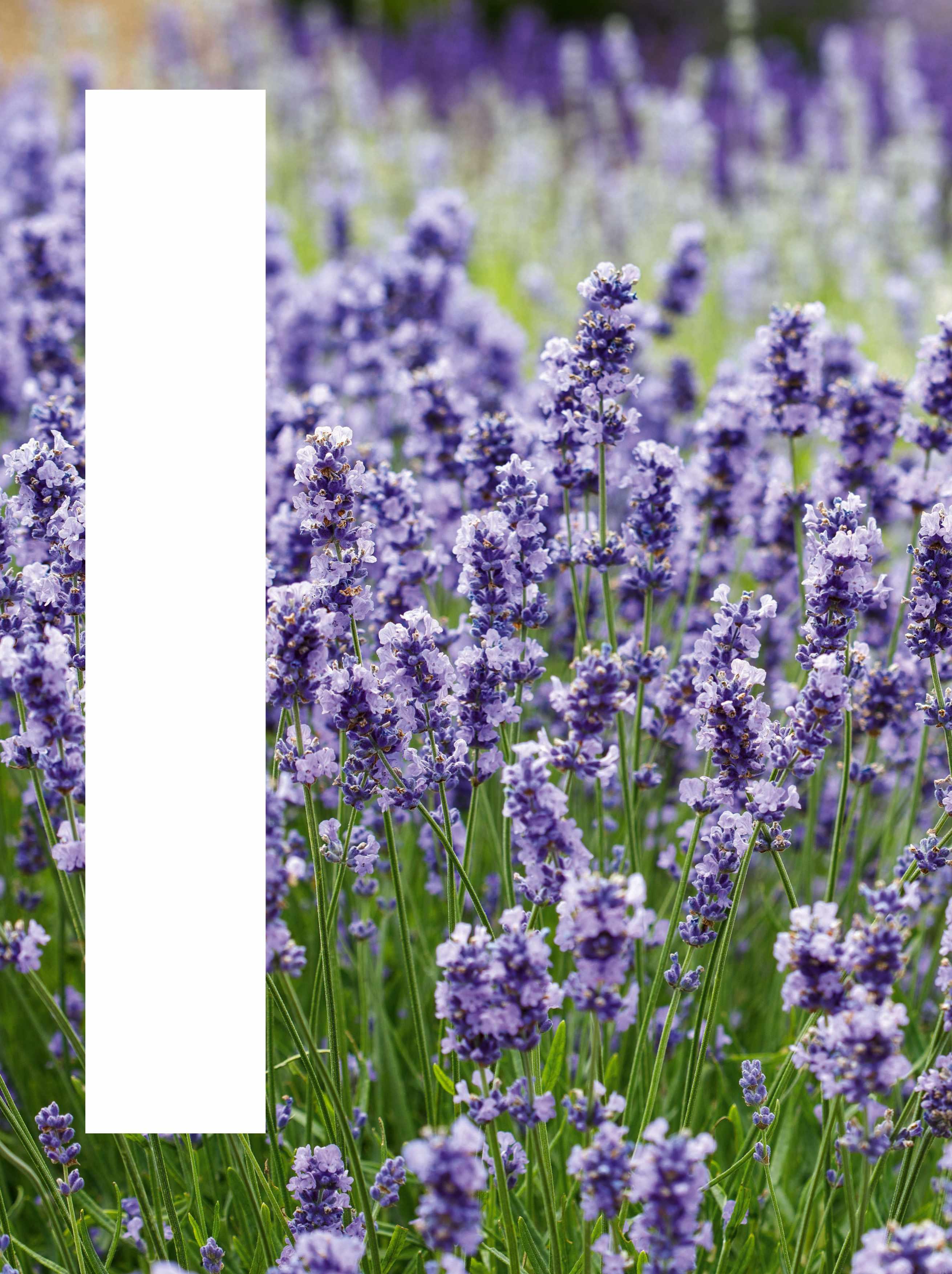
FACT FILE
What Lavenders are evergreen, aromatic shrubs in the same family (Lamiaceae) as mint. Leaves can be silver-grey or green and flowers are most commonly shades of purple but can also be pink or white.
Season Flowering for English lavenders and Lavandula x chaytoriae peaks in June and July and can carry on more sporadically throughout the summer. Lavandula x intermedia peaks slightly later, in July and August, and can also carry on into early autumn.
Size Depending on the species and cultivar, the height and spread of a lavender plant can range from a compact 50cm x 50cm to a more robust 1.2m x 1.5m.
Conditions Ideal growing conditions are an open sunny site and light, well-drained soil that is neutral to slightly alkaline (pH6.5-8), though they can be grown on soil that is slightly acidic.
Origins Despite its name, English lavender is a Mediterranean plant while other species originate in dry, sunny habitats that range from the Canary Islands to parts of Africa, Asia and India.
Hardiness Varies depending on species. There are tender species, but the ones featured here are reliably cold hardy in most parts of the UK with an RHS hardiness rating of H4-H5, and, depending on species, suitable for gardens in USDA zones 5a to 10b.
*Holds an Award of Garden Merit from the Royal Horticultural Society. †Hardiness ratings given where available.
Lavandula angustifolia
Melissa Lilac (= ‘Dow4’)
One of the most successful modern lavenders. Its silvergreen, aromatic leaves are swamped by poker-straight stems, each topped by a chubby spike of large, lilac-blue flowers. Flowers are also scented and long lasting.
Height and spread: 70cm x 90cm. RHS H5, USDA 5a-9b†

Fragrant, drought tolerant and easy to grow, lavenders are popular plants that suit many different styles of garden
GUITTENY
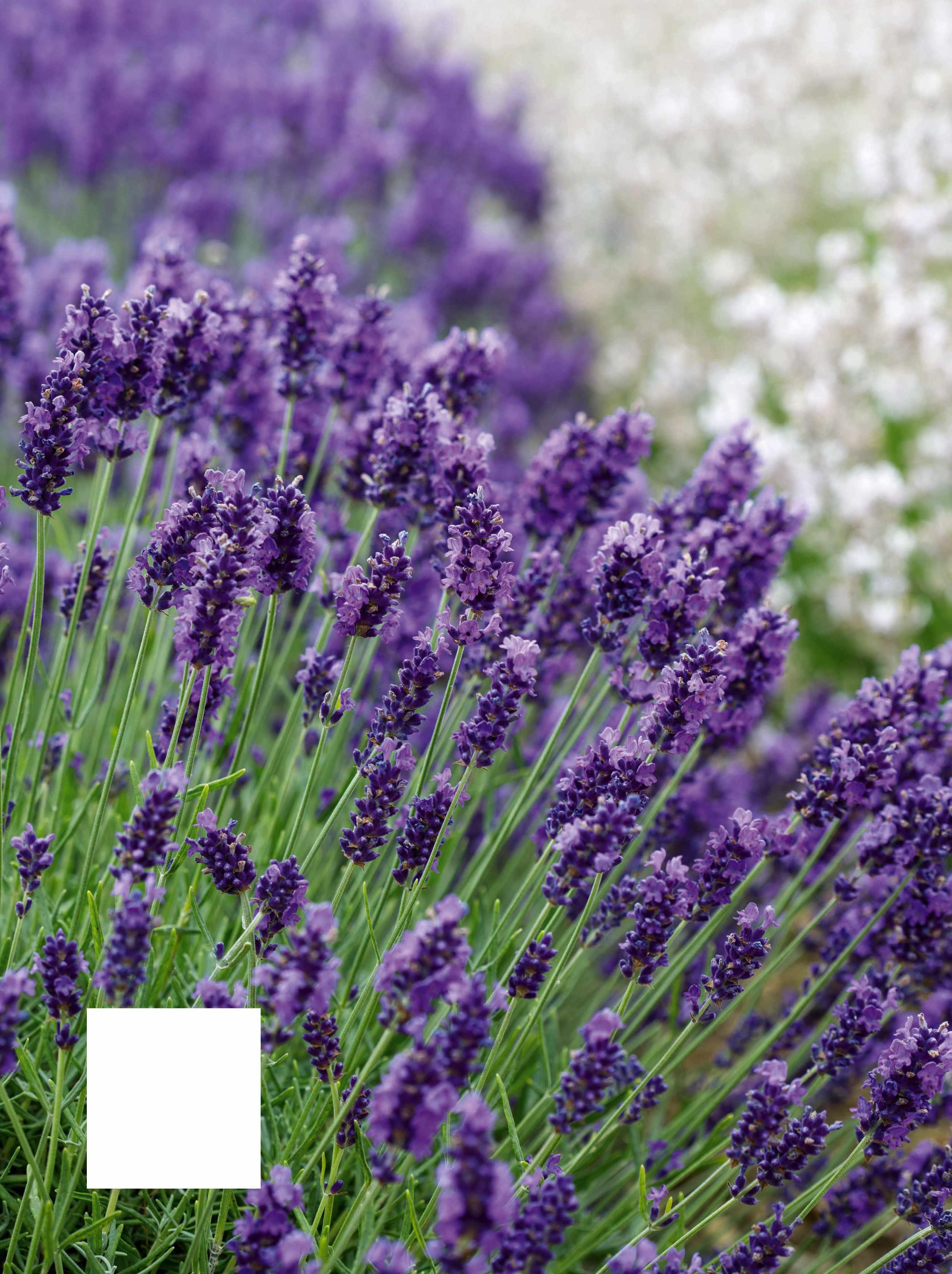
This classic, deep-purple English lavender produces a glorious display of colour, and makes a stunning low hedge. It can be in full flower for up to two months.
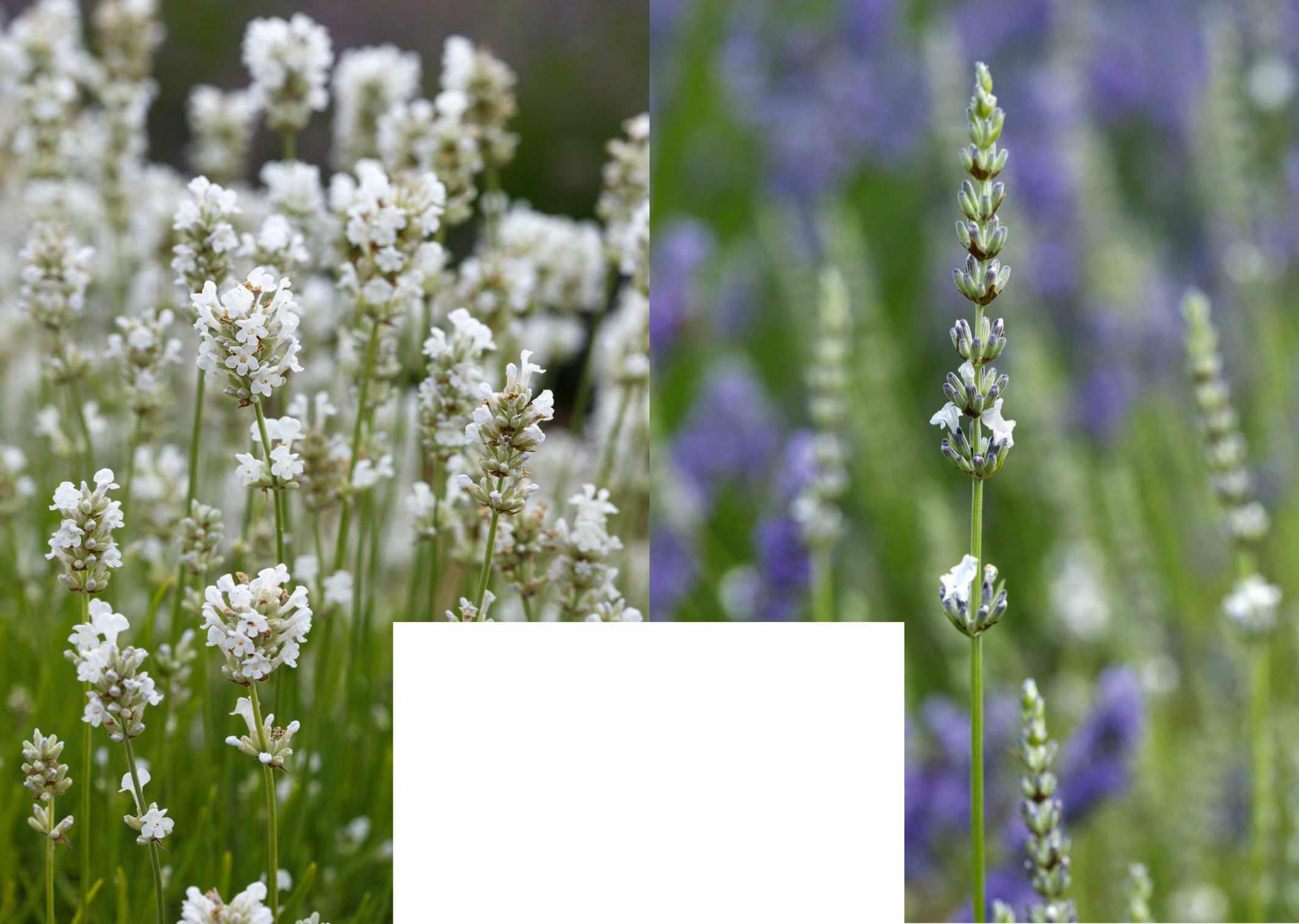
Lavandula angustifolia
‘Arctic Snow’
A compact cultivar with a neatly domed shape and pristine white flowers that stand out brilliantly against grey-green leaves. It has a strong, sweet lavender fragrance.
60cm x 75cm. RHS H5, USDA 5a-9b.
Lavenders offer plentiful flowers in rich colours, interesting and evergreen foliage, a naturally attractive shape, beautiful scent and the ability to attract and feed a wide range of insects, all wrapped up in a low-maintenance package. Just one plant in full flower can have huge impact, reminiscent of a lazy summer in Provence or Tuscany, even in the middle of a damp British summer. The mass of flowers creates a haze of intense colour that vibrates with bees on a sunny day.
I’ve spent many years working on plant trials, assessing different types of plants to pick out the varieties most worthy of space in the garden, and I’ve found lavenders to be one of the most pleasant but also the trickiest trial subjects to work on. Picking out the better ones often comes down to the smallest of margins.
There are more than 40 different species of lavender and possibly around 450 different cultivars. Some, such as L dentata from the Mediterranean and Arabian Peninsula, L lanata from southern Spain, and L canariensis and L. pinnata from the Canary Islands, are tender. There are also frost-hardy species such as L. pedunculata and another well-known Mediterranean species, the French lavender, L stoechas, with its brightly coloured bracts that are often described as ears.
Of the hardier lavenders, Lavandula angustifolia, despite its common name of English lavender, is actually
Lavandula x intermedia ‘Edelweiss’
Throws out its flower stems with abandon. Each one is tipped with a lengthy head of white flowers and the effect is spectacular. Leaves start green-grey and mature into silver.
75cm x 90cm. RHS H5, USDA 5a-9b.
a Mediterranean plant, while other species originate in dry, sunny habitats that range from the Canary Islands to parts of Africa, Asia and India. Lavandula x intermedia, known as lavandin, is a cross between English lavender and Portuguese lavender. The slightly less hardy Lavandula x chaytoriae is a cross between English lavender and Lavandula lanata, also known as woolly lavender thanks to its felty, silver foliage.
Provided you can give it the right growing conditions – a sunny spot and well-drained soil – lavender can fit into many different types of planting schemes. For a small town garden or a modern scheme, there are neat, compact cultivars, such as L angustifolia ‘Hidcote’, L angustifolia ‘Arctic Snow’ or L angustifolia ‘Ashdown Forest’. Nothing looks smarter than a row of evenly domed lavender plants in full flower along a path or under pleached trees.
For a more informal look in gravel gardens or cottage garden borders, the larger cultivars work well, including those of L. x intermedia, which throw out a multitude of long flower stems that soften any hard edges. With their ability to attract a wide range of pollinators, they are perfect for wildlife gardens and many cultivars can also be planted as a low hedge. Plus, their love of good drainage makes them excellent candidates for sloping ground and rockeries.
Nothing looks smarter than a row of evenly domed lavender plants in full flower along a path
In borders, roses make perfect planting partners for lavender, with a similar flowering time and a matching vibrancy.
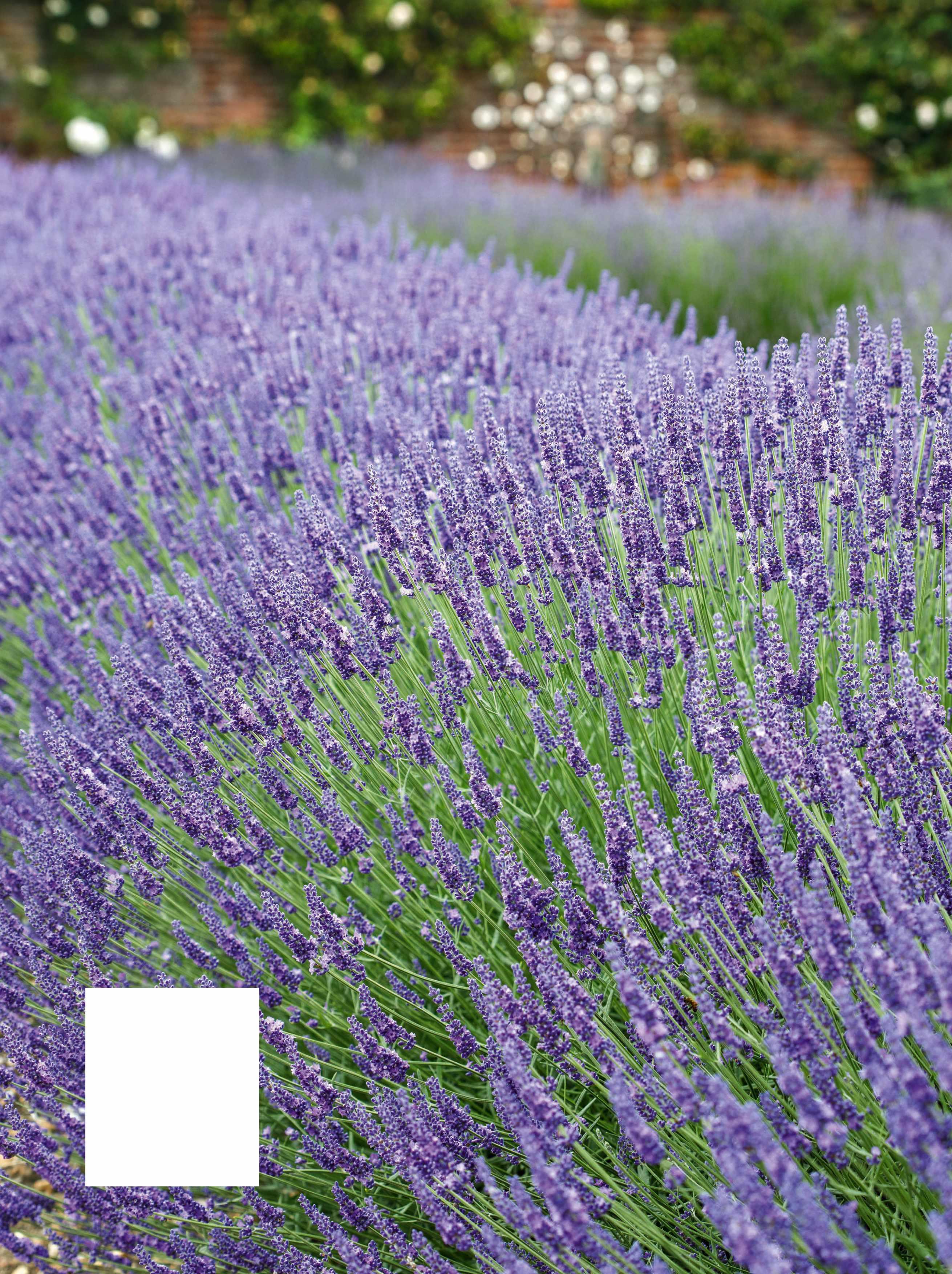
Lavandula x intermedia Anniversary Bouquet (= ‘Dowannibouq’)
Bred and introduced in the UK by Downderry Nursery, this sturdy lavender grows tall with an even, rounded shape. Flowers have an intense, blue-purple colour that oozes Mediterranean vibes. 90cm x 1.1m. RHS H5, USDA 5a-9b.
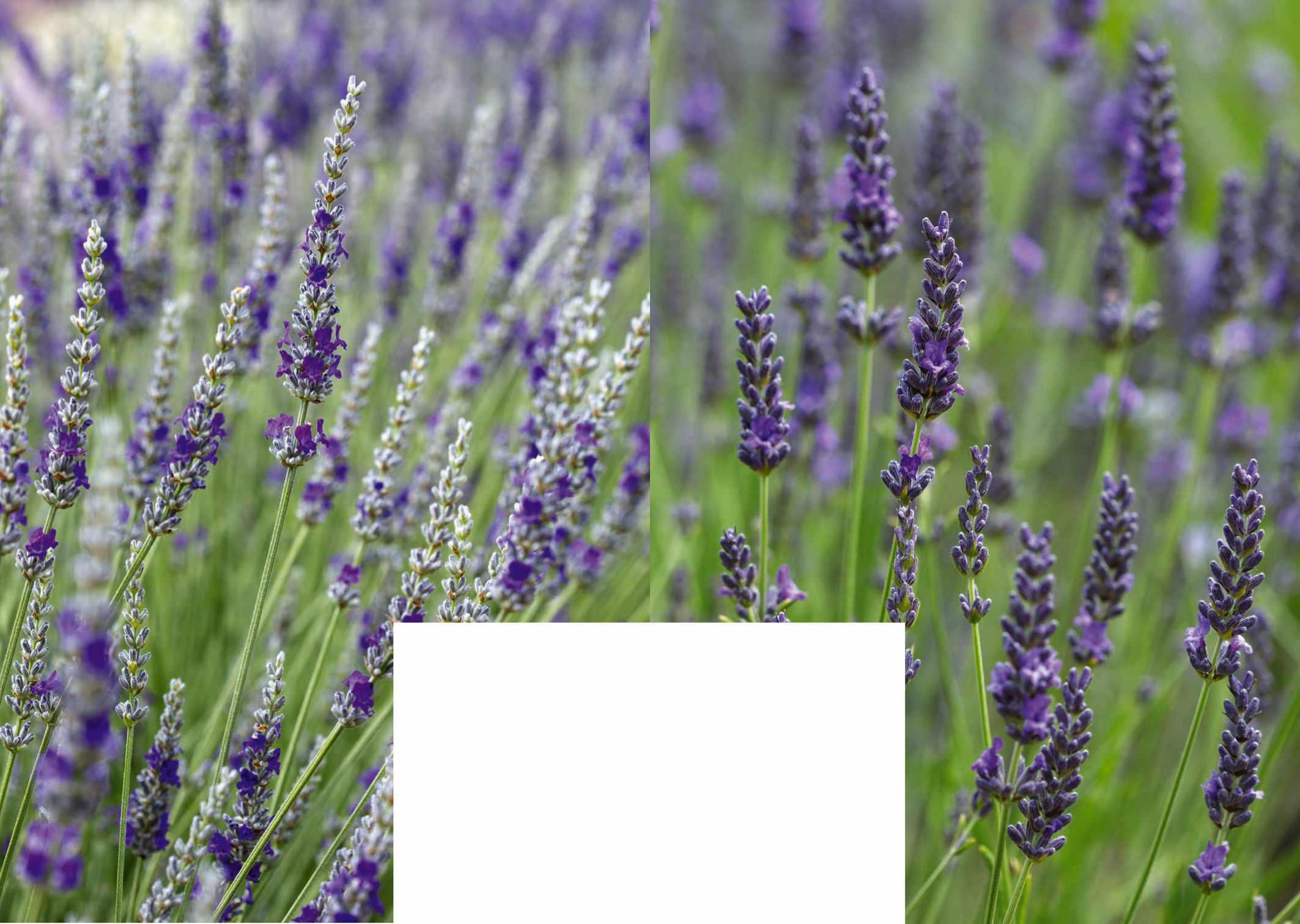
Lavandula x chaytoriae
‘Bridehead Blue’
A striking lavender with silver-green leaves. Long flower stems hold the elongated heads of sweetly scented, deep-purple flowers. Reaches its peak later than other cultivars of English lavender. 75cm x 1m. RHS H4, USDA 7a-10b.
Plant lavender in spring when the soil is warming up and roots can grow quickly. If you plant in autumn, do it while the soil is still warm in September. There’s no need to buy large plants; a 9cm pot plant can reach a good size by its second year. Plug plants are excellent value – grow on until the roots fill a 9cm pot, then plant out.
Lavender needs sun and well-drained soil to thrive, as a Mediterranean plant. Ideally the soil will be neutral or slightly alkaline (pH6.5-8), although lavender will grow in slightly acidic soil. On heavy soil, improve drainage by adding plenty of well-rotted compost or horticultural grit to the planting hole.
If you know your soil is soggy in winter, it’s best to grow lavender in containers. Choose pots with large holes for drainage and use a peat-free or loam-based compost with added horticultural grit.
Lavandula x intermedia Heavenly Scent (= ‘Dowphscent’)
One of the Heavenly Series bred in the UK, this strongly scented lavender was introduced in 2014. Though short for a lavandin, its flower spikes are long and showy. 55cm x 70cm. RHS H5, USDA 5a-9b.
Plant to the same depth as it is in the pot and keep newly planted lavender watered until its roots are established and it is growing well. Lavender grown in containers should be watered so the compost doesn’t completely dry out and fed occasionally with high-potash feed. Plants in the ground become leggy and more prone to diseases if they’re manured or over fertilised, so either don’t feed or use a high-potassium feed.
Prune hardy lavenders in late summer when flowering finishes. Remove all the old flower stems and 2-3cm of top growth to keep your plants compact. Even with this regular pruning, plants might become woody with far fewer blooms over time. The usual advice is not to cut back into old wood because lavender doesn’t re-grow well, but if you can see leafy shoots lower down on woody stems, try cutting back to these in spring to see whether it will
surprise you with new growth. If not, simply replace the plant with a new one.
Some cultivars can be grown from seed although the results can be variable. Seeds can take up to six weeks to germinate, so it’s not an easy option. It is easier to propagate plants from cuttings –softwood cuttings taken in spring or ‘heel’ cuttings taken in summer. Pull a side shoot with a small piece of bark attached away from a young main stem that’s not yet flowering. You can also take hardwood cuttings in autumn.
Few pests bother lavender, although rosemary beetles, with their distinctive purple and green stripes, eat leaves and flowers. They rarely do a lot of damage but if numbers start to build up, remove them by hand. Mild, damp weather can lead to grey mould (botrytis). Remove affected parts of the plant as soon as you see this.
Lavandula x intermedia ‘Provence’
Even for a lavandin this is a large lavender, with an unusual combination of green foliage and flowers of pale, blue grey. Both stems and flowers are highly aromatic. 1m x 1.2m. RHS H5, USDA 5a-9b.
Lavandula angustifolia ‘Imperial Gem’
A 1980s introduction with a mild scent but intense colour. Compact and bushy, it’s a versatile cultivar that would suit a range of different situations.
60cm x 75cm. AGM. RHS H5, USDA 5a-9b.
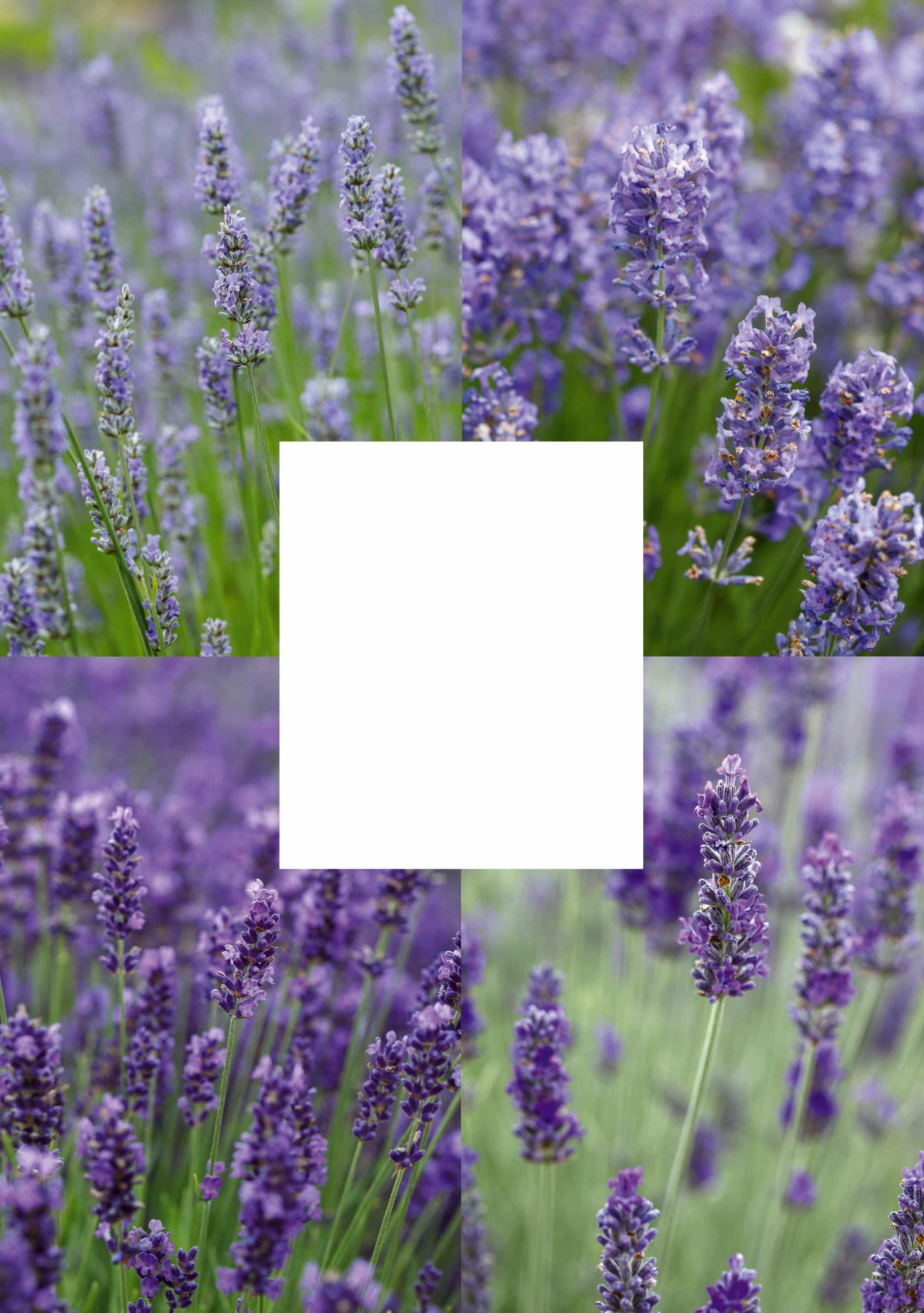
Lavandula angustifolia ‘Lullaby Blue’
A New Zealand selection introduced to Britain in 2011. This compact, lavender with vibrant, blue flowers and green-grey foliage has a luminous quality. 60cm x 75cm. RHS H5, USDA 5a-9b.
Lavandula x chaytoriae ‘Richard Gray’
Forms a neat cushion of soft, silver-grey foliage, from which long flower stems spray outwards, holding vivid-blue flowers well above the leaves.
50cm x 70cm. AGM. RHS H4, USDA 7a-10b.
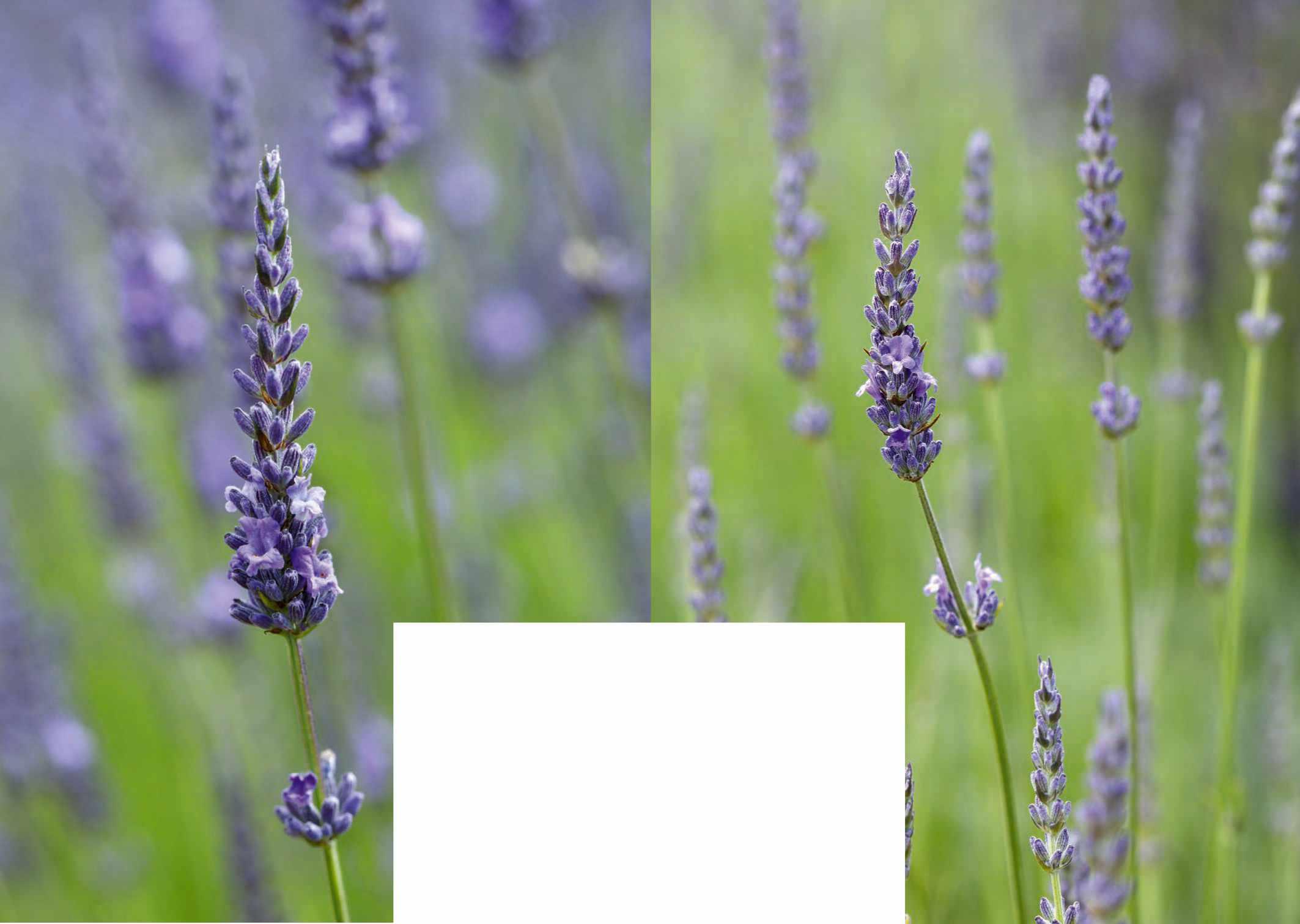
Lavandula x intermedia ‘Sussex’
The flowerheads of this large lavender are some of the longest and most elegant you’ll see, and are held aloft on sturdy stems. Vibrant, pale-purple flowers mass to make a stunning display. 90cm x 1.1m. AGM.
RHS H5, USDA 5a-9b.
Lavandula x intermedia ‘Fragrant Memories’
With pale, lilac-blue flowers and grey foliage, this is a classy lavender. The foliage is aromatic and the flowers are also strongly scented, so it’s a good choice if you want to cut and use the stems. 75cm x 90cm.
RHS H5, USDA 5a-9b.
Roses such as Rosa Rhapsody in Blue (= ‘Frantasia’), with its pink-blue hue, and the pink R. Odyssey (= ‘Franski’) would be an ideal match for many lavender flower colours. Hardy geraniums, such as deeppurple Geranium x magnificum or exuberant blue Geranium ‘Orion’, can help create a cottage-garden feel, as can oriental poppies, which enjoy similar growing conditions. Or you could plant lavender in a herb garden with other aromatic plants such as rosemary, oregano and thyme.
With their ability to attract a wide range of pollinators, lavenders are perfect for wildlife gardens
When it comes to choosing cultivars, the best-known and most widely sold lavender is L angustifolia ‘Hidcote’ with L angustifolia ‘Munstead’ not far behind. They deserve their popularity but should ideally be bought from a good nursery selling cutting-raised plants, since plants grown from seed might not turn out quite as you hoped. Lavender seed is normally open pollinated, so plants will be variable in appearance and in how well they flower.
Newer cultivars are less well known but can be just as good, if not better. L angustifolia cultivars ‘Imperial Gem’ and ‘Elizabeth’ both resemble ‘Hidcote’ with vibrant colour that is every bit as impressive and long lasting. L angustifolia Melissa Lilac (= ‘Dow4’), introduced about 20 years ago, is another great choice. Compact at around 60cm tall, its pale-lilac flowers are prolific and can last for many weeks. Cultivars of L. x intermedia are generally much larger and have some of the strongest scents as they produce more of the
aromatic oils than English lavender. L. x intermedia ‘Sussex’ produces masses of long flower spikes and L. x intermedia Heavenly Scent (= ‘Dowphscent’) is beautiful and highly aromatic.
Pink-flowered cultivars, and some white ones, can be a bit less robust and floriferous than the purples and blues, but are still well worth growing. A good pink choice is L angustifolia ‘Miss Katherine’, and both L. x intermedia ‘Edelweiss’ and L angustifolia ‘Arctic Snow’ are excellent white-flowered cultivars. Research has found white lavender to be as attractive to bees as the purple- and blueflowered ones, and this is particularly true of ‘Arctic Snow’. ■
Janice Shipp is a gardener and garden writer, and a member of the RHS Herbaceous Committee.
Where to see and buy
•Fairweather’s Plant Shop, Hilltop, Beaulieu, Hampshire SO42 7YR. Tel 01590 612307, fairweathersplantshop.co.uk
• Long Barn Lavender Growers The Old Sheep Fair, Bishops Sutton Road, Alresford, Hampshire SO24 9EJ. Holds National Collection of Lavandula x intermedia cultivars. Tel 01962 738684, longbarn.co.uk
• Norfolk Lavender, Caley Mill, Lynn Road, Heacham, Norfolk PE31 7JE. Tel 01485 570384, norfolk-lavender.co.uk
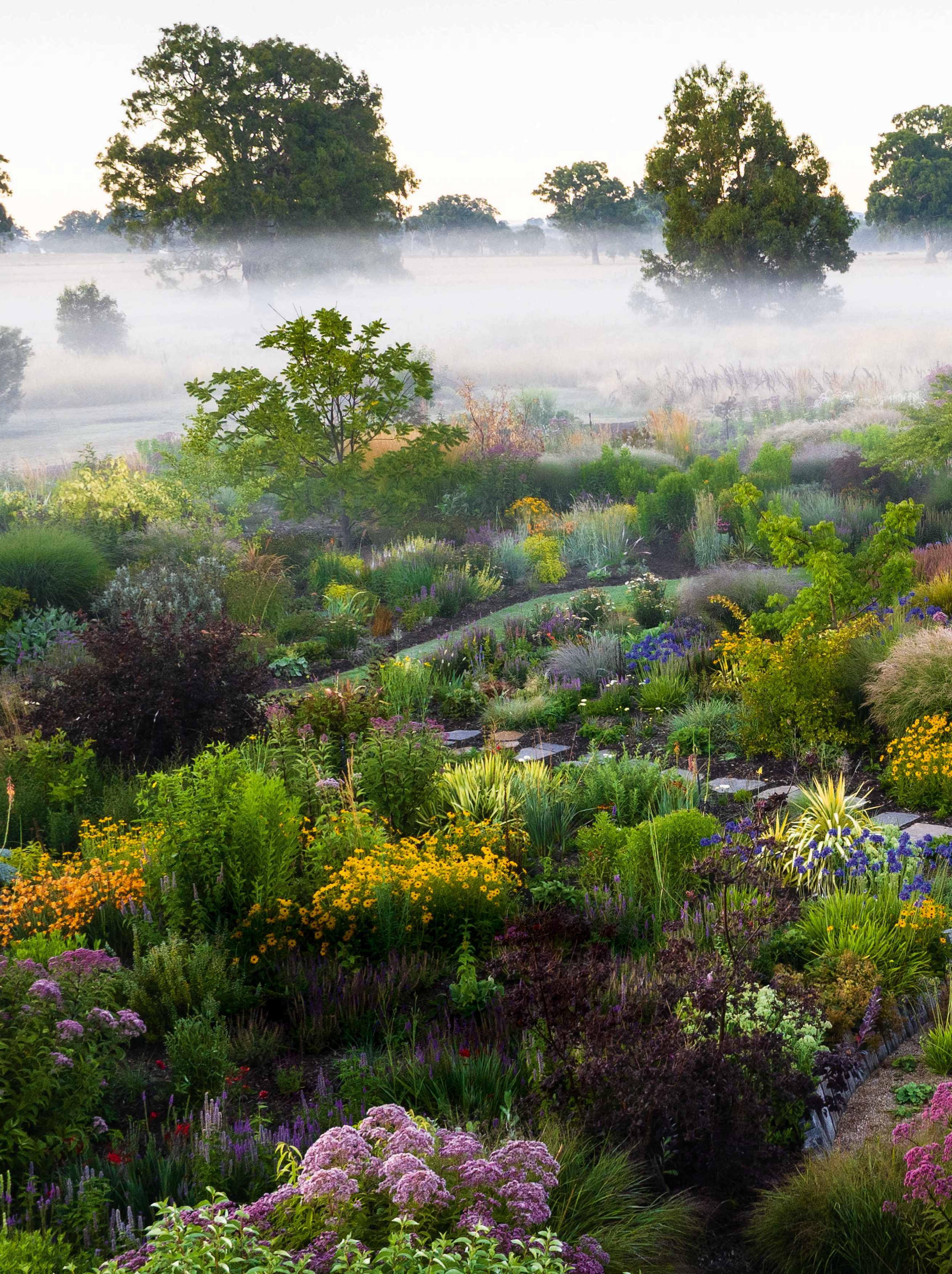
In his own garden, Australian artist and garden designer Ralph Bristow gardens as he paints, in bold blocks of bright colour
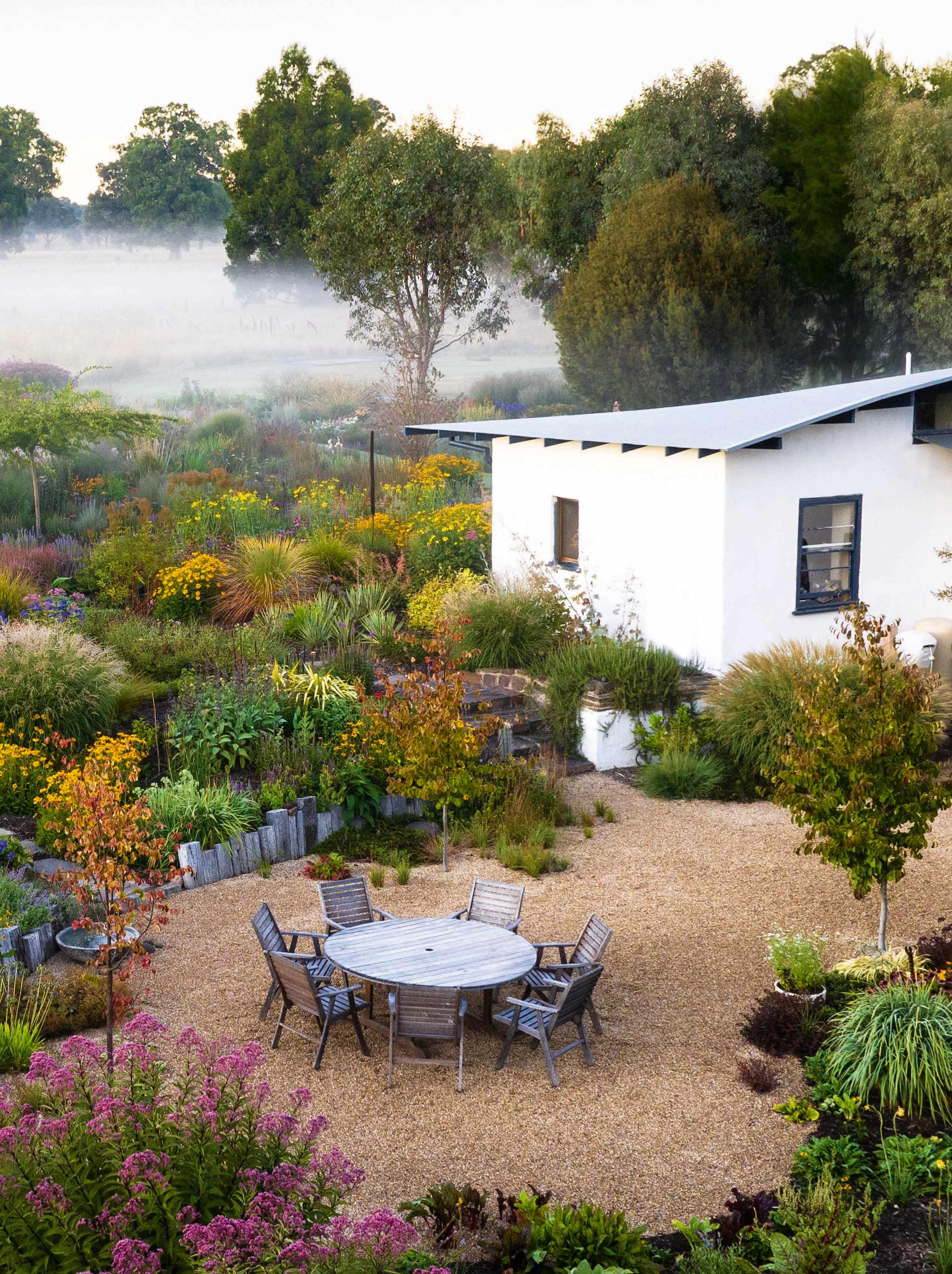
What Naturalistic family garden. Where Victoria, Australia. Size Two-and-a-half-acre garden in a six-acre site. Soil Slightly clay loam. Climate Extremes in both winter (down to -10ºC) and summer (up to 45ºC). Hardiness zone USDA 9a.
Deep, curved beds sweep through the garden in a textural and sophisticated mix of flowering perennials, grasses, bulbs, shrubs and young trees. It is surrounded by ancient paddocks and open grassland, and grounded by Ralph and Nicky’s lime-washed, strawbale home.

When you’re in the garden, you’re completely immersed and floating. As you move through it you can’t help but be drawn close to the amazing details in the plants
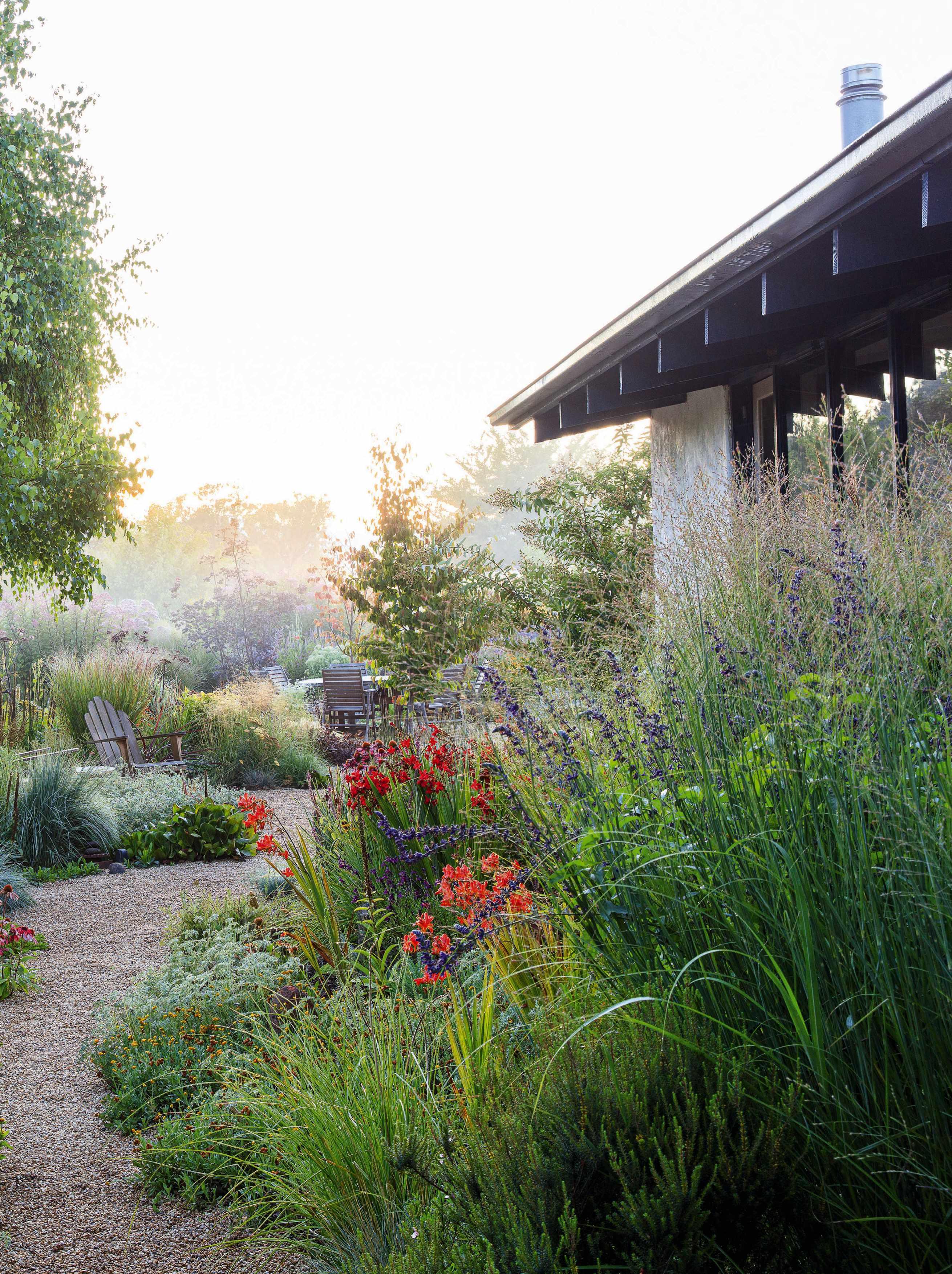
Gertrude Jekyll, the queen of the blazing border, wrote: ‘Planting ground is painting a landscape with living things’. Like Jekyll, Australian artist and garden designer Ralph Bristow gardens as he paints. “You make a mark on the canvas and the conversation starts. It’s the same with gardens,” he says.
It’s been just four years since Ralph started creating the Barwitian Garden on his two-and-a-half-acre plot in Victoria, Australia, yet its richness and depth belies its youth. This plant-packed wonderland is a vibrant, sophisticated mix of colours, textures and shapes that play out in a seasonal spectacle of changing light and weather. His deep borders are host to more than 10,000 plants – flowering perennials, bulbs, grasses, shrubs and trees –exquisitely combined like pigments on a painting.
“I started working as a gardener as a way of supplementing my income as an artist,” Ralph explains. “I then went on to study horticulture and garden design and eventually found equal footing in both fields.” For many years, he ran a landscape design company in Melbourne, after which he started restoring historic gardens, including ones by the famous Australian designer Edna Walling. “I would live on the property, doing research and chasing original
drawings,” he says. Now he creates gardens and continues painting from his garden studio.
Ralph lives here with his partner Nicky Sanders, who built their strawbale house 15 years ago. Its lime-washed walls are a brilliant canvas for the borders. The spot is now a haven for birds, insects, amphibians and reptiles. “We had a twitcher come round and do a bird count,” says Ralph, beaming. “In a half an hour, she spotted 51 different species.”
Ralph has kept the layout simple and organic. Curved beds surround the house and the studio at the opposite end of the garden, and encircle a large, gravel dining area. Next to the studio is a smaller entertaining space with a fire pit and log stools. The garden furniture is low-key; elegant wooden tables and chairs and rustic benches, which never obstruct the plant spectacle.
Grass alleyways allow for relaxed exploration, offering up wide and varied views of the borders
and surrounding grasslands, while stone paths invite you to step into the beds for closer inspection. “Some of these paths are quite narrow. You almost have turn sideways to get through. I put a few spiky plants in those spots too. It’s important to have fun with it.”
Fun and joy are words that immediately come to mind when talking to Ralph, who brims with childlike enthusiasm, and not just for the plants and animals. It’s the creative process he adores. “When I’m creating, it’s about being in the moment. I like putting plants against each other: there’s the colour, the foliage, the light, the air.” He likes to think of his garden as a multiverse where everything, from the soil to the sky, is connected.
He cites Piet Oudolf, Fergus Garrett, James Hitchmough, Cassian Schmidt and Roberto Burle Marx as influences, along with local
To continue turn to page 60
This image Bright sparks of Helenium ‘Moerheim Beauty’ and Rudbeckia fulgida var. sullivantii ‘Goldsturm’ contrast with the soft pinks and creams of Sanguisorba hakusanensis ‘Lilac Squirrel’, Miscanthus oligostachyus ‘Eileen Quinn’ and Veronicastrum virginicum ‘Diane’.
Right Waves of grasses, including Panicum virgatum ‘Autumn Glory’, ripple over cheerful mounds of Rudbeckia fulgida var. sullivantii ‘Goldsturm’, while sculptural Xanthorrhoea ‘Supergrass’ and Yucca recurvifolia ‘Gold Ribbons’ add contrast and drama, with bright blues of Agapanthus ‘Bressingham Blue’ and A.‘Indigo Dreams’ in the foreground.

Grass alleyways allow for relaxed exploration, offering up wide and varied views of the borders and surrounding grasslands
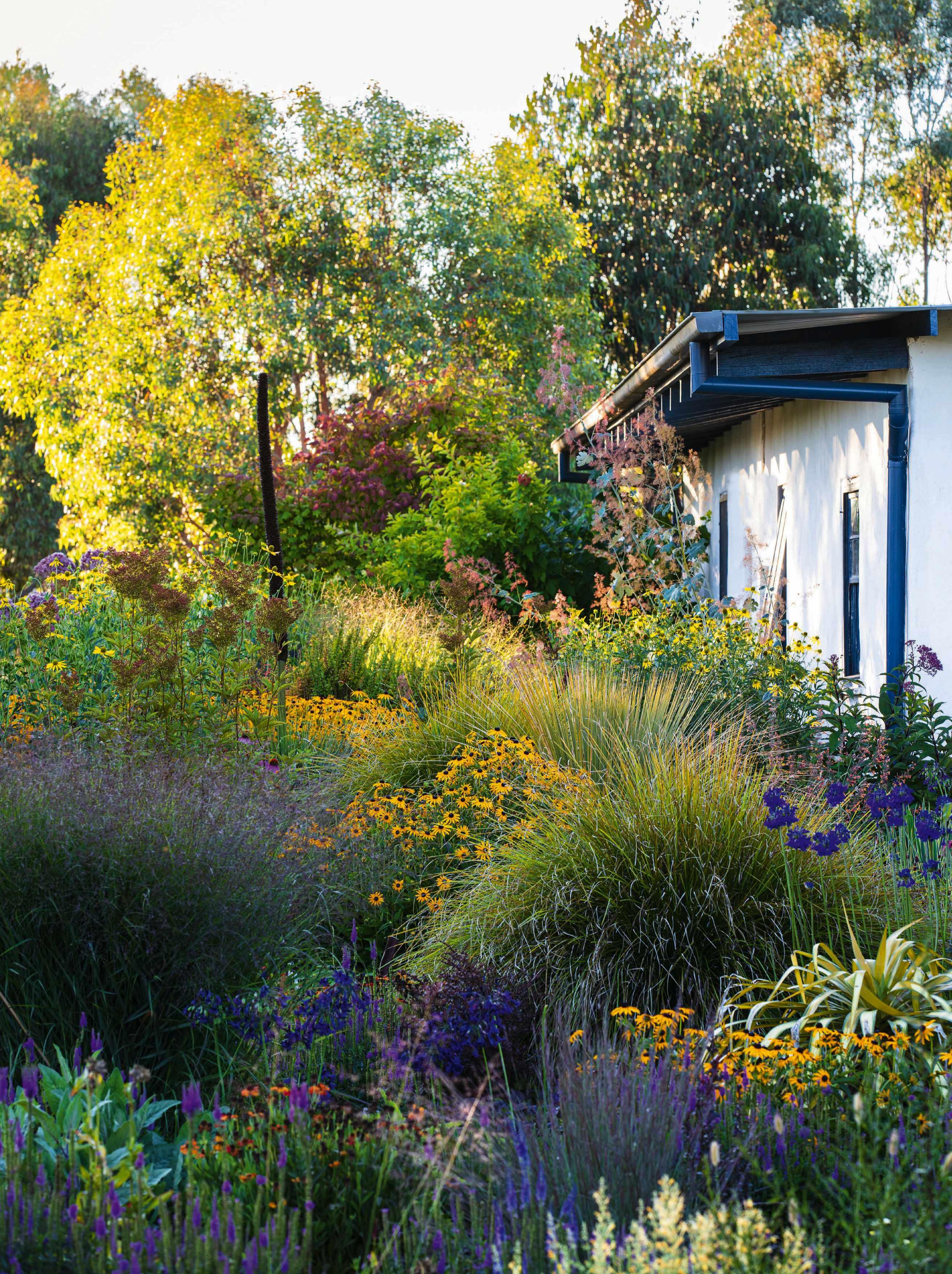
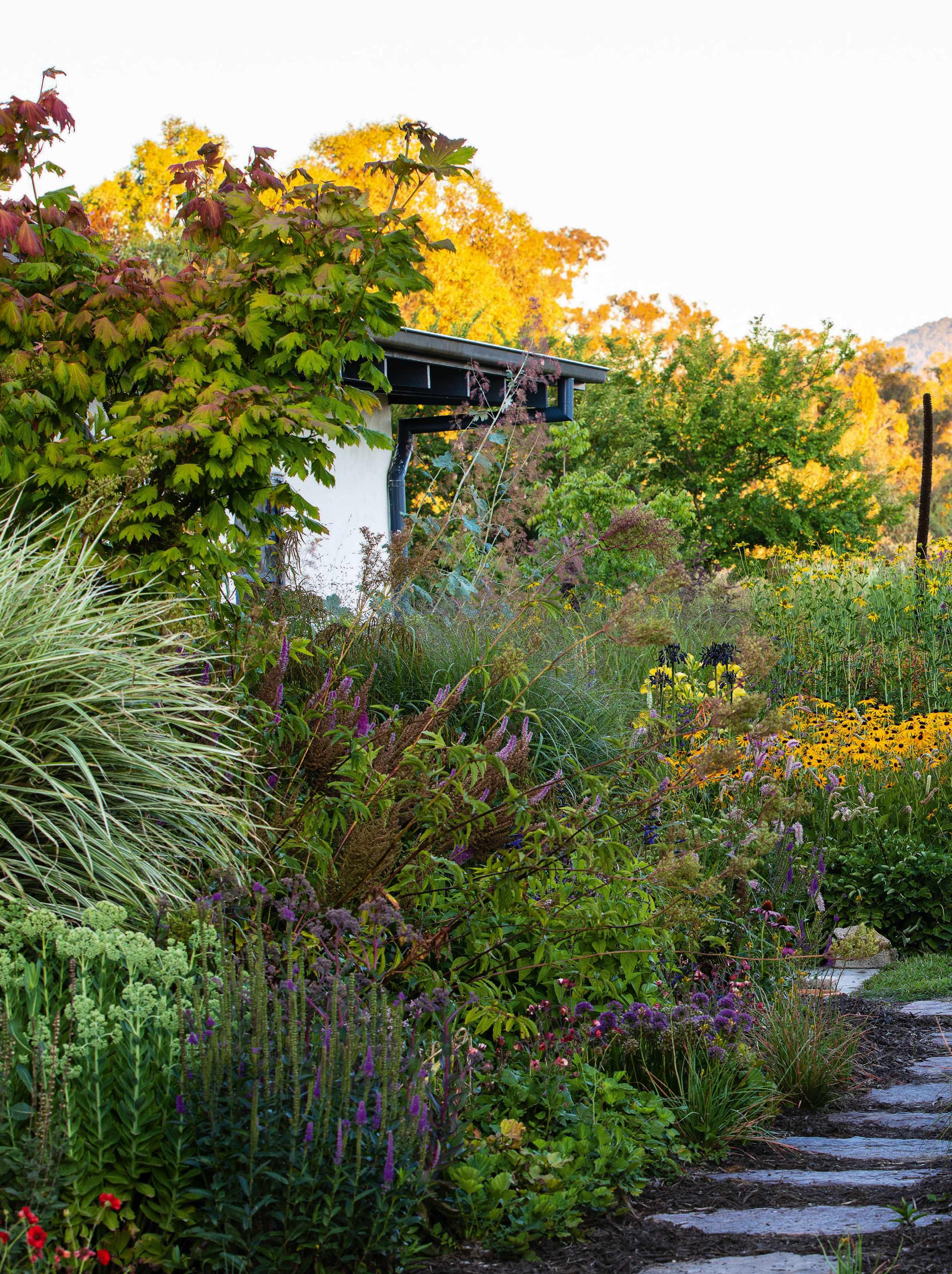

garden designers Michael McCoy and Jo Ferguson. But Ralph speaks his own plant language. “I’m not into formulas or replicating something else. I try to develop my own thing. What I really wanted to achieve here is a sense of depth. When you’re in the garden you’re completely immersed and floating. As you move through it, you can’t help but be drawn close to the amazing details and qualities in the plants themselves.”
Agapanthus, Echinacea, Agastache, Crocosmia, Helenium, Kniphofia, Veronica and Sanguisorba are just a few of Ralph’s favourite flowering plants. A master colourist, he harmonises hues with finesse – from electric blues, vibrant yellows, hot reds and oranges to amethyst purples, soft pinks, creams and corals. And he understands the art of playing shapes against one another and exploiting the shimmering light to choreograph his creation. It takes skill to make every plant reach its full aesthetic potential, but Ralph has it in spades.
Flowers are set against feathery grasses, such as Miscanthus oligostachyus ‘Eileen Quinn’, Pennisetum orientale ‘Tall Tails’ and Panicum virgatum ‘Blue
Steel’, sculptural Yucca filamentosa ‘Bright Edge’ and striking Xanthorrhoea ‘Supergrass’, which Ralph has dotted around the borders. “As the garden matures, its huge 2m-tall flower spikes will become sentinel giants,” he says. Many of the plants have autumn and winter appeal, offering up attractive seedheads, structures and darker colours against a more muted tonal backdrop.
“The garden is still very young. The trees and woody plants have yet to grow to full height. When they do, we’ll start getting little microclimates to experiment with and exploit.”
As the garden evolves, so does Ralph’s response to it. It’s a constant toing and froing, a life-long conversation and adventure. A garden, unlike a painting, is never finished. And yet, like a great work of art, the Barwitian Garden is – in the words of Gertrude Jekyll – ‘a treasure of well-set jewels’. ■
USEFUL INFORMATION
Find out more about Ralph Bristow’s work at ralphbristowgardendesign.com.au

This image From above, Ralph’s borders are clearly defined, even though at ground level they appear to merge into one other, creating extra depth. Punctuating the colourful planting, young trees including Cussonia paniculata Pistacia chinensis Juglans nigra and Ulmus parvifolia are slowly maturing.
Right Contrasting flower and leaf shapes are further enlivened with exquisite colour combinations. Xanthorrhoea ‘Supergrass’ and Schizachyrium scoparium ‘Prairie Blues’ are the perfect foil for crocosmias and veronicas, against a backdrop of Eucalyptus camaldulensis, with its glaucous leaves and interesting bark.

When I’m creating, it’s about being in the moment. I like putting plants against each other: there’s the colour, the foliage, the light, the air
Award-winning designer Jo Thompson offers new container-planting inspiration with three ideas for flower combinations for high summer
WORDS JO THOMPSON PHOTOGRAPHS JASON INGRAM

SCAN HERE Watch Jo create this scheme from scratch in our video. Simply scan the QR code with your phone camera or head to gardens illustrated.com/ pot-for-july
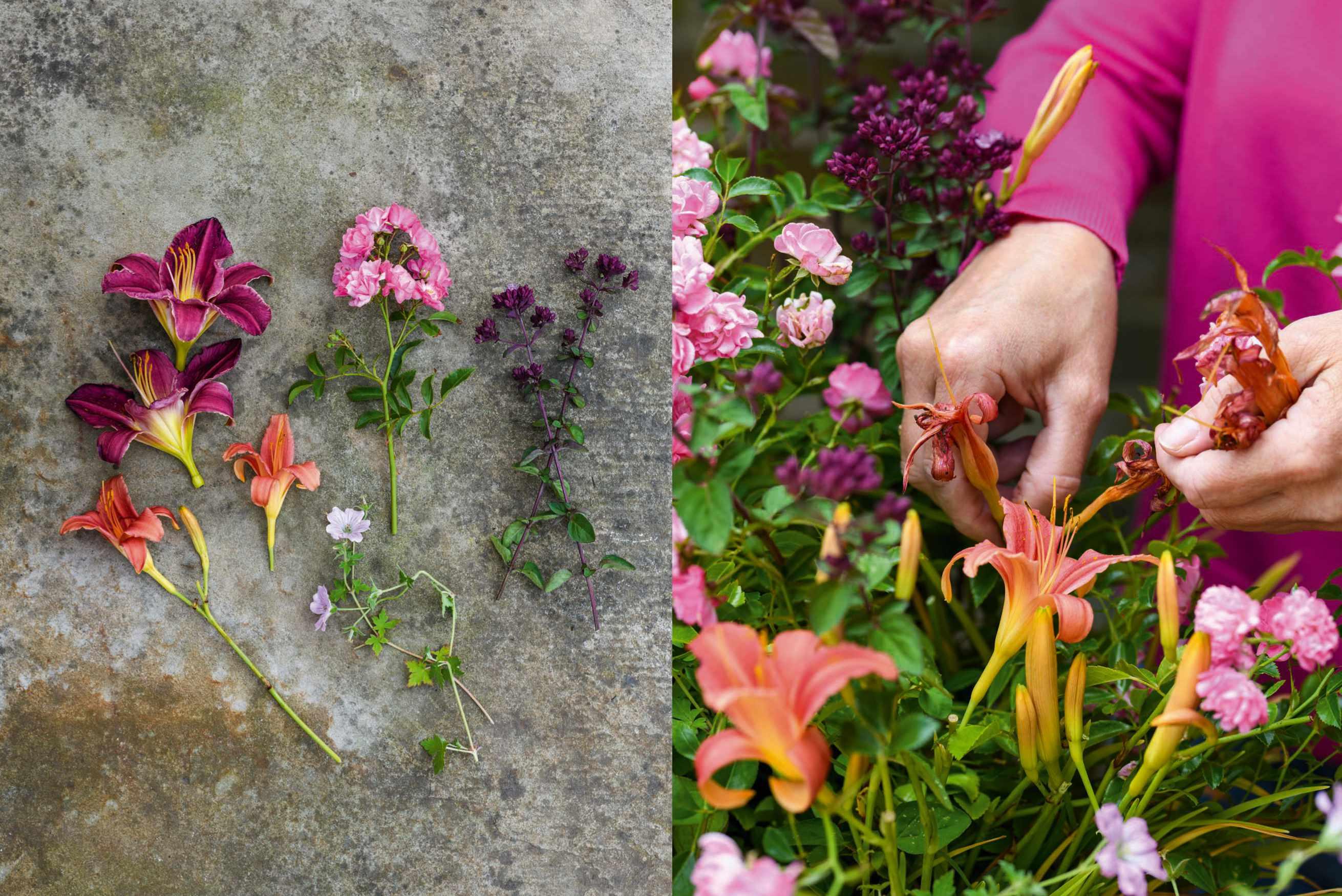
High summer brings with it peak colour. As the days go by, the garden gradually moves from pastels through to warmer colours. In this arrangement, a mix of pinks with subtle undertones of coral brighten up a simple zinc bucket. The blooms of a clear-pink shrub rose, Rosa ‘The Fairy’, are accompanied by daylilies whose bewitching smudgy tones make up for the fact that these flowers last for only 24 hours.
The colours are everything in this arrangement, and so the simpler the container, the better. This kind of zinc planter is readily available in garden centres and online – if it doesn’t already have them, drill holes in the bottom for drainage.
This is a pot for a sunny location and works especially well against a plain wall or fence, the uplifting palette and range of plant textures brightening up the dullest of backgrounds.
Rosa ‘The Fairy’ is the key player here; planted at the centre of the container, it takes centre stage along with the daylilies, which sit to either side. The origanum goes in next, creating a foil of purple for all
those pinks to shine out against.
Geranium Dreamland (= ‘Bremdream’) creates a delicate edging at the foot of the planting, its cup-shaped flowers pinking up the pinks of the roses and harmonising with the silver-grey of the container.
Rosa ‘The Fairy’ will bloom continuously: go in with small scissors to deadhead in order to keep the new flowers coming. The same applies to the daylilies; at the end of the season, remove them and plant them in the garden, as they will soon outgrow the pot.
Keep the pot watered; a daily drink in the morning will set it up for the day.
1 Hemerocallis ‘Chicago Silver’ Strap-like leaves and purple petals edged with silver, and a green throat. June – August. Height and spread: 75cm x 60cm. RHS H6, USDA 4a-10b†
2 Hemerocallis ‘Pink Damask’ A perennial with strap-like green leaves and plentiful flowers of dusky pink with a yellow throat. June – August. 60cm x 60cm. AGM*. RHS H6, USDA 4a-10b.
3 Rosa ‘The Fairy’ A short, spreading rose with sprays of small, pink flowers and glossy, green foliage. June – September. 80cm x 90cm. AGM. RHS H6, USDA 5a-9b.
4 Geranium Dreamland (= ‘Bremdream’)
A compact herbaceous perennial with darkveined, pale-pink flowers. May – September. 40cm x 40cm. RHS H7, USDA3a-8b.
5 Origanum ‘Rosenkuppel’ Clusters of tiny pink-purple flowers and red-purple bracts. Heavily scented leaves are flushed with purple. 60cm x 60cm. AGM. RHS H7, USDA 5a-8b.
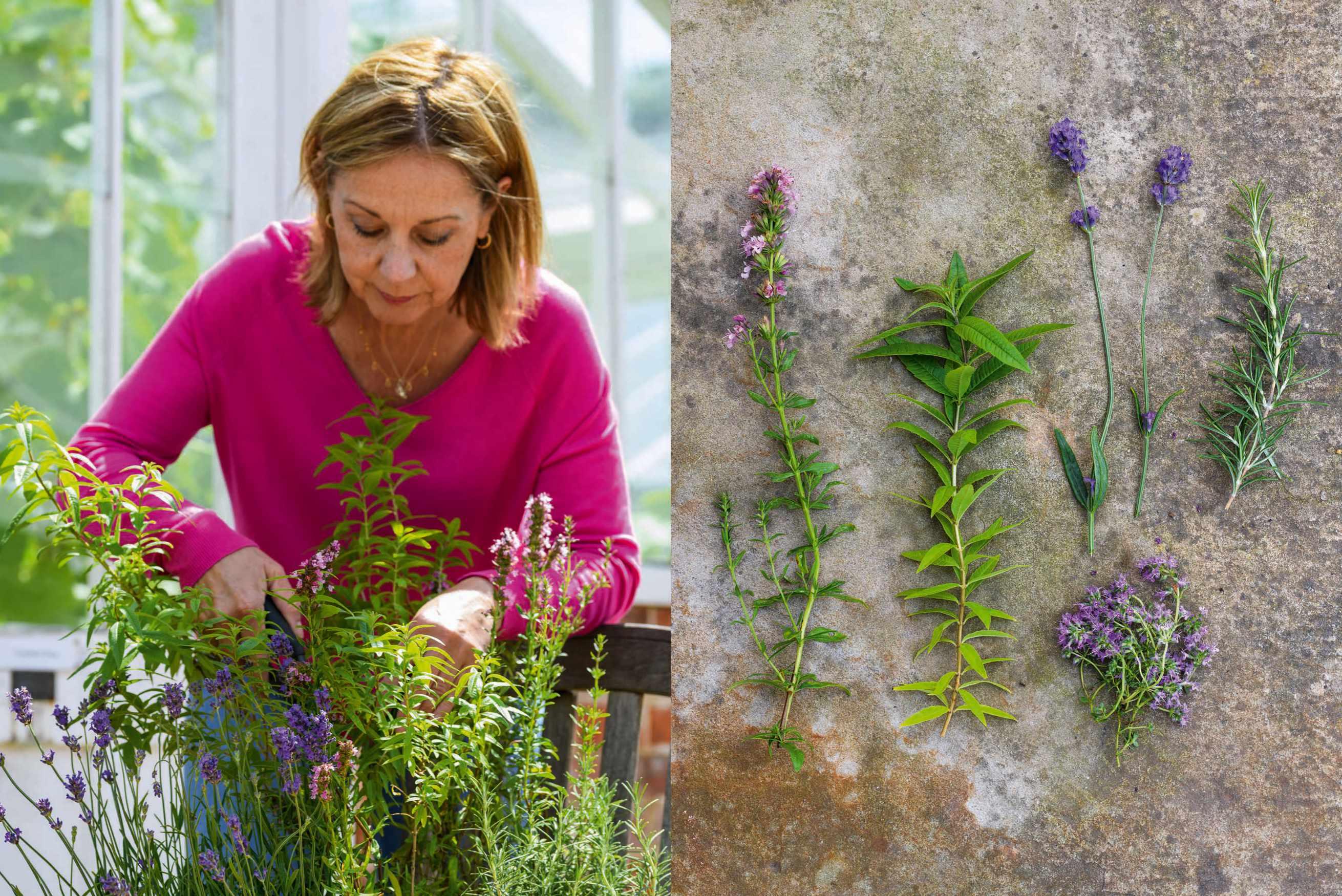
A rust-coloured rectangular planter is filled with graceful aromatic plants, each having its own use. This is a planter to keep on a windowsill or near the kitchen door; it also makes a good centrepiece for an indoor or outdoor dining table. There’s nothing very manicured about this arrangement, as it’s designed to withstand a few leaves being pulled off here and there.
Container and composition
This is the simplest of containers, a rectangular planter with a finish of rusted metal. Its simple geometric shape means that it can fit neatly on a ledge, and be kept handy for picking leaves from.
Delicate foliage is all here. The leaves are small, creating cobwebby light in a sunny spot. The flowers too are all delicate; the blues of the lavender gently tying in with the blue-ish pink of the thyme and the paler pinks of the hyssop.
Every plant has a use: the thyme is as good as a flavouring as it is decorative, sprouting out of the edges of the container. Evergreen structure is provided by the rosemary, with a background of the tall spires of hyssop, whose leaves taste of bitter
minty-sage and work well in a salad, along with its tiny pinkish flowers. The blue spires of lavender knit in with the leggy stems of the lemon verbena (Aloysia citrodora), the leaves of which can be used to make the most delicious infusion.
Cultivation and care
You’ll want to keep foraging from this pot, and this constant picking will keep the plants in check over the summer. Ensure that the soil doesn’t dry out.
There are plants in here that will be happy to be transferred into the garden as the display goes over: the rosemary and lavender will certainly enjoy more space eventually. The lemon verbena should be taken inside as temperatures drop.
1 Hyssopus officinalis ‘Roseus’ A small, spreading sub-shrub with spires of pink flowers and aromatic leaves. Flowers July – September. 60cm x 60cm. RHS H7, USDA 4a-9b.†
2 Aloysia citrodora A deciduous sub-shrub with long branches bearing strongly lemon-scented leaves and tiny white flowers. Flowers August. 2.5m x 2.5m. AGM. RHS H3, USDA 8a-10b.
3 Lavandula angustifolia ‘Munstead’ Evergreen shrub with grey-green leaves and fragrant blue-purple flowers. Flowers July – August. 45cm x 60cm. RHS H5, USDA 5a-8b.
4 Thymus serpyllum ‘Pink Chintz’ Mat-forming sub-shrub with aromatic leaves and pale-pink flowers. Flowers June – August. 10cm x 30cm. AGM. RHS H5, USDA 5a-8b.
5 Salvia rosmarinus ‘Miss Jessopp’s Upright’ Rosemary with aromatic leaves. Light blue flowers in spring and summer. Flowers April –July. 2m x 2m. AGM. RHS H4 USDA 8a-10b.

With thanks to Plants
• How Green Tel 01732 700382, howgreennursery.co.uk
Wholesale only
• Beth Chatto’s Plants & Gardens Tel 01206 822007, bethchatto.co.uk
Herbs
• Jekka McVicar jekkas.com

Pots
• King John’s Nursery Tel 01580 819220, kingjohnsnursery.co.uk
Location
• Water Lane Walled Garden waterlane.net
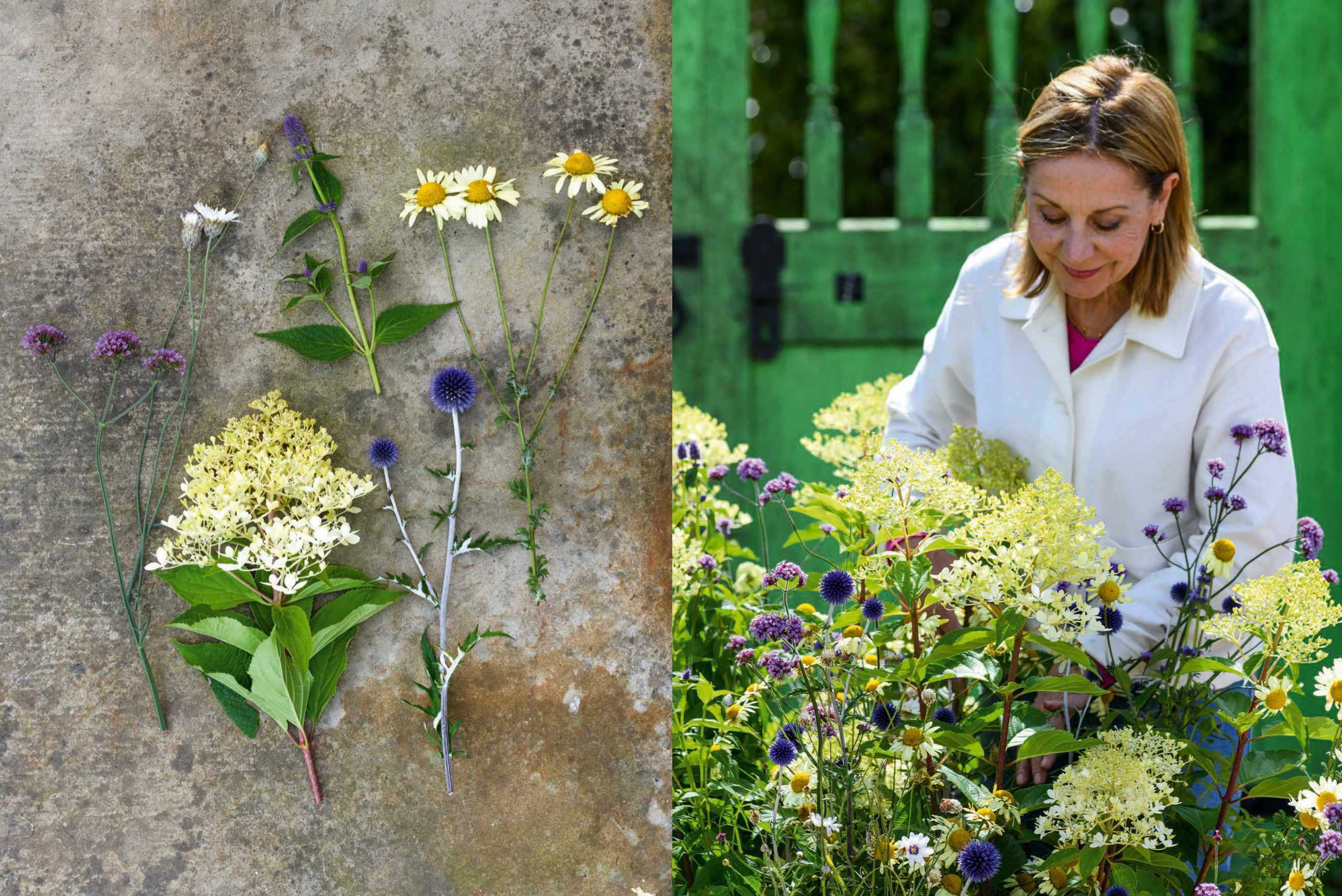
This old steel bathtub I found at an antiques fair was simply begging to be planted up. I set out to create a combination of plants that would match the scale of the bathtub, but with a more restrained colour palette, keeping the whites, blues and butter-yellows found in woodland – and which sit so prettily against green – in mind. I used Hydrangea paniculata ‘Phantom’ as a starting point for the plants, selecting its companions based on a simplicity of flower form.
*Holds an Award of Garden Merit from the Royal Horticultural Society. Hardiness ratings given where available.
How to achieve the look
Container and composition
This container is enormous, and needs to be in a place where it can be admired. It’s a heavy pot to move should you change your mind, so be sure to choose its location carefully before you start.
Here at Water Lane, the tub sits at the main entrance, welcoming visitors, who pause to admire the enormous panicles of the hydrangea, which are captured against a background of far more delicate flowers.
The hydrangea is the first plant to go in to this arrangement, followed by the echinops, whose mesmerising, bold-blue globes match the hydrangea in terms of presence. As its flowers are so much smaller, though, the globe thistle is definitely an enhancer as opposed to a competitor.
The pale-lemon flowers of the cota glow almost white when placed with the hydrangea, and they bring a softness and delicacy to this bold collection. This idea of elegance is continued by the dots of purple verbena, whose colour is then picked up in turn by the bottlebrushes of the agastache. Barely visible, the catananche’s silvery papery buds and lilac-white flowers catch the light and add to the sense of sparkle, which serves to balance the huge hydrangea.
Cultivation and care
This pot can take a bit of shade and is probably happier out of the full blast of the summer sun. Make sure the soil doesn’t dry out, and when deadheading, leave the hydrangea flowers to age on the stems.
1 Verbena bonariensis A perennial with purple flowers atop tall stiff stems. June – September.
1.5m x 45cm. AGM. RHS H4, USDA 7a-11.
2 Catananche caerulea ‘Alba’ Papery white flowers atop slender stems. July – September. 60cm x 30cm. RHS H5, USDA 4a-7b.
3 Hydrangea paniculata ‘Phantom’ Large palegreen panicles fade to white. July – September. 2.5m x 2.5m. AGM. RHS H5, USDA 3a-8b.
4 Agastache ‘Blue Fortune’ Clumps of tight stems carry spikes of lavender-blue bottlebrush flowers. Leaves are aromatic. July – October. 1m x 40cm. AGM. RHS H6, USDA 5a-9b.
5 Echinops ritro ‘Veitch’s Blue’ Perennial with globes of intense blue flowers on top of silver stems with spiny silver leaves. July – August.
1.2m x 50cm. RHS H7, USDA 3a-8b.
6 Cota tinctoria ‘E.C. Buxton’ Daisy-shaped, pale-lemon flowers. June – August. 70cm x 90cm. AGM. RHS H6, USDA 3a-7b.
What Private urban family garden, near the city centre.
Where Groningen, the Netherlands.
Size 18.5m x 6m.
Soil Free-draining sandy soil over grey clay subsoil.
Climate Temperate, east-facing, quite sunny.
Hardiness zone USDA 6.

Stefano Marinaz’s design for this small city garden has the lush planting his clients yearned for and practical touches to make their lives easier
WORDS
PAULA McWATERS PHOTOGRAPHS ALISTER THORPE
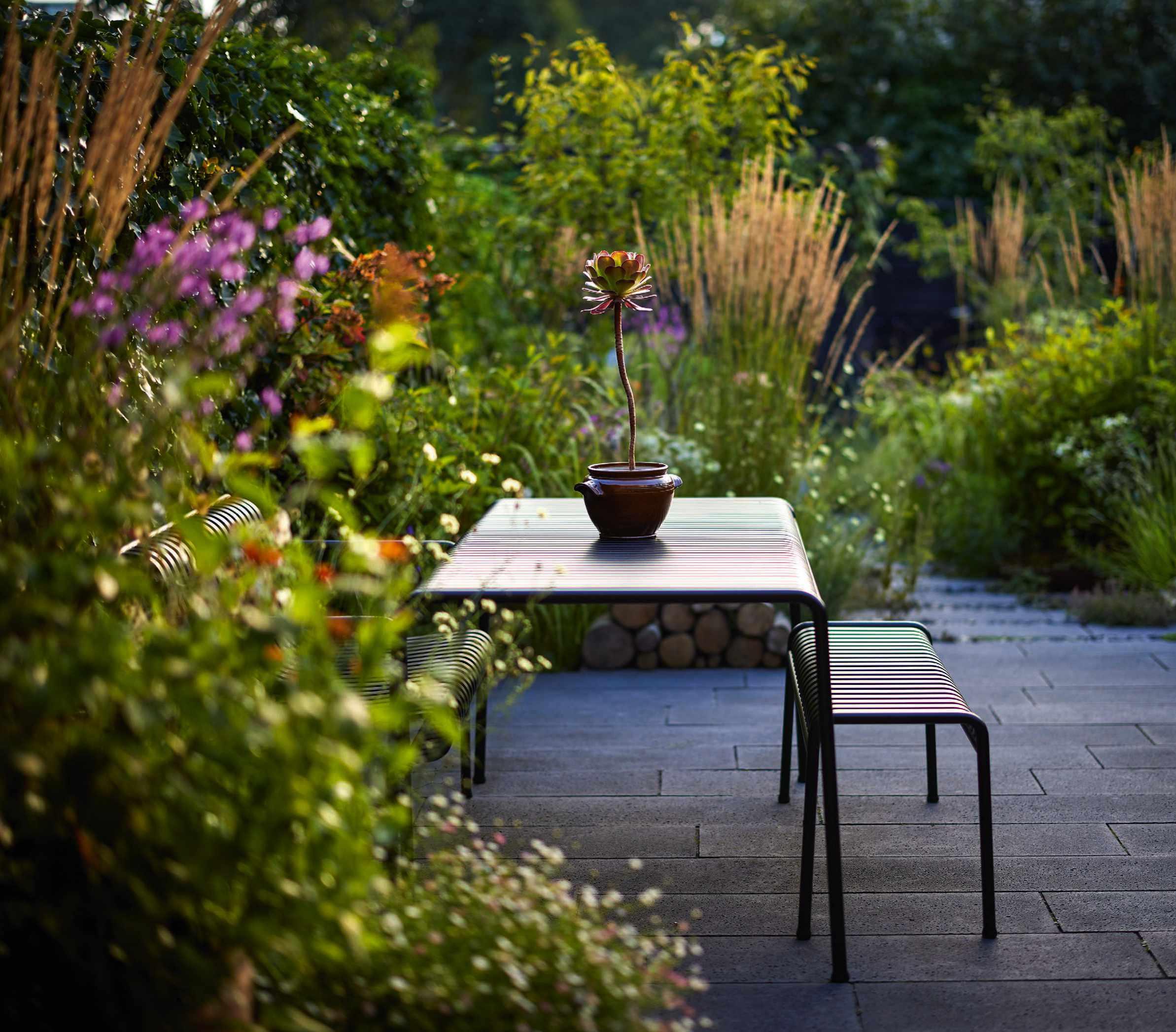
The brief was clear for landscape architect Stefano Marinaz when he took on this urban garden in the city of Groningen in the northern Netherlands. Owners Marianne and Jason Fry, and their eight-year-old daughter Lizzy, were looking out on to a dull, fully paved yard with just two small planting areas and nowhere enticing for Lizzy to play. As well as a place to sit and eat – an extension of their living room – Marianne longed for lush planting. She was looking for a drastic reduction in the amount of paving plus an interesting view to admire from the full-length glass doors at the back of the house. On the practical side, the family need clear space to get their bicycles in and out of the shed each day and wheel them through the back gate, and they also wanted some shade, as the fence-to-fence paving made the garden very hot in summer. Stefano drew up a plan that has changed not only the garden but, to a great extent, the clients’ lives, as he has turned the space into a highly functional green oasis that brings them pleasure and daily interest and
Above left The family wanted to look out on to interesting planting year-round, so Stefano has punctuated the space with three multi-stemmed Amelanchier x lamarckii trees to add height, plus tall Calamagrostis x acutiflora ‘Karl Foerster’ grasses that shimmer and catch the light in the closely planted borders. Neat log piles are an inexpensive way to add sculptural interest and also provide habitat, and have become a bit of a signature element for Stefano.
Above right By laying a terrace directly outside the back door, Stefano has given the family an extension of their living room. Meals are frequently enjoyed at the Hay Palissade powder-coated steel table. Planting has been brought up close to the house to give a feeling of being enveloped. Airy plants include Geum Coral Tempest (= ‘Macgeu004’) and Erigeron karvinskianus
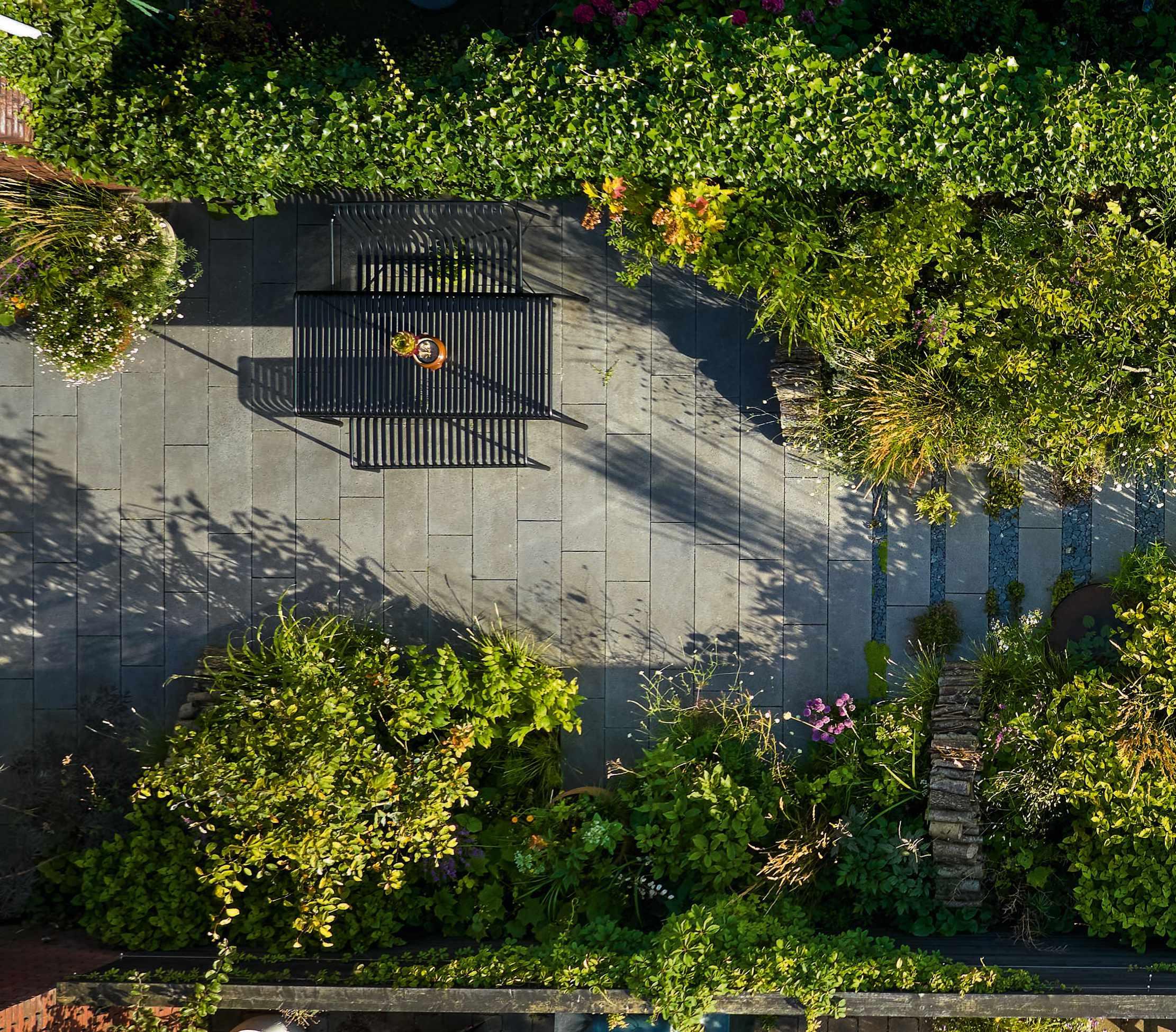
Above Stefano has divided the garden into three. Closest to the house is the dining terrace, while the planting in the central part wraps around a play space for eightyear-old Lizzy, and the back of the garden gives the family a quiet spot to sit in the afternoon sun as well as space to bring their bicycles through. Several sets of log piles repeat down the garden, giving a harmonious look to the design, while slate chippings intersperse the plank paving of the path, repeated in Lizzy’s play area.
engagement. He has divided it roughly in three. Close to the house is a generous seating area for a table and benches for outdoor eating, where the family can linger over breakfast in the morning light. The centre of the garden has been given over largely to naturalistic planting, incorporating a sheltered space within it where Lizzy and her friends can play. At the far end, in the sunniest part, is a tranquil seating area plus room to manoeuvre bikes.
Two fences have been painted black to help them recede while the third is clothed with ivy, providing a welcome habitat for birds and insects.
A terrace of dark-grey concrete paving from Schellevis gives way to a winding path of concrete planks interspersed with bands of slate chippings, which have the advantage of being permeable. “The path winds diagonally across the space and the bands vary in width – design details that help to bring a sense of movement and dynamism. By not making it all symmetrical you give the eye more to explore,” explains Stefano.
The generous planting beds have made a dramatic difference. “Now, wherever you are in the garden, you’re surrounded by plants, and

Stefano specified a wide variety of plants and owner Marianne has happily embraced the task of caring for them.“Working in this garden teaches me many lessons and helps keep me sane,” she says.“Stefano has introduced me to plants that were new to me that I have since come to love, such as the toad lily, Tricyrtis formosana, which flowers from late summer through into the autumn.”
Choice shrubs give the backbone to the planting, with two different witch hazels for late winter interest and several roses, including rambling creamy-yellow Rosa ‘Lykkefund’ and Rosa ‘Geranium’ with red flowers followed by large hips in autumn. As space is at a premium, no vertical surface is wasted. Climbers include cultivars of Akebia quinata – both cream-flowered ‘White Chocolate’ and purple-tinted ‘Amethyst Glow’ – as well as Clematis ‘Apple Blossom’, which has wonderful almond-scented flowers in spring.
The airy effect has been achieved with a variety of ‘dotty’ perennials. Sanguisorba ‘Burr Blanc’ is a favourite with good height (1-1.2m) and beautiful white flowers, while the smaller S.‘Chocolate Tip’, has dark-maroon flower spikes. Scabiosa columbaria subsp. ochroleuca is a dainty addition, with masses of creamy-yellow flowers on wiry stems that dance about in the breeze.
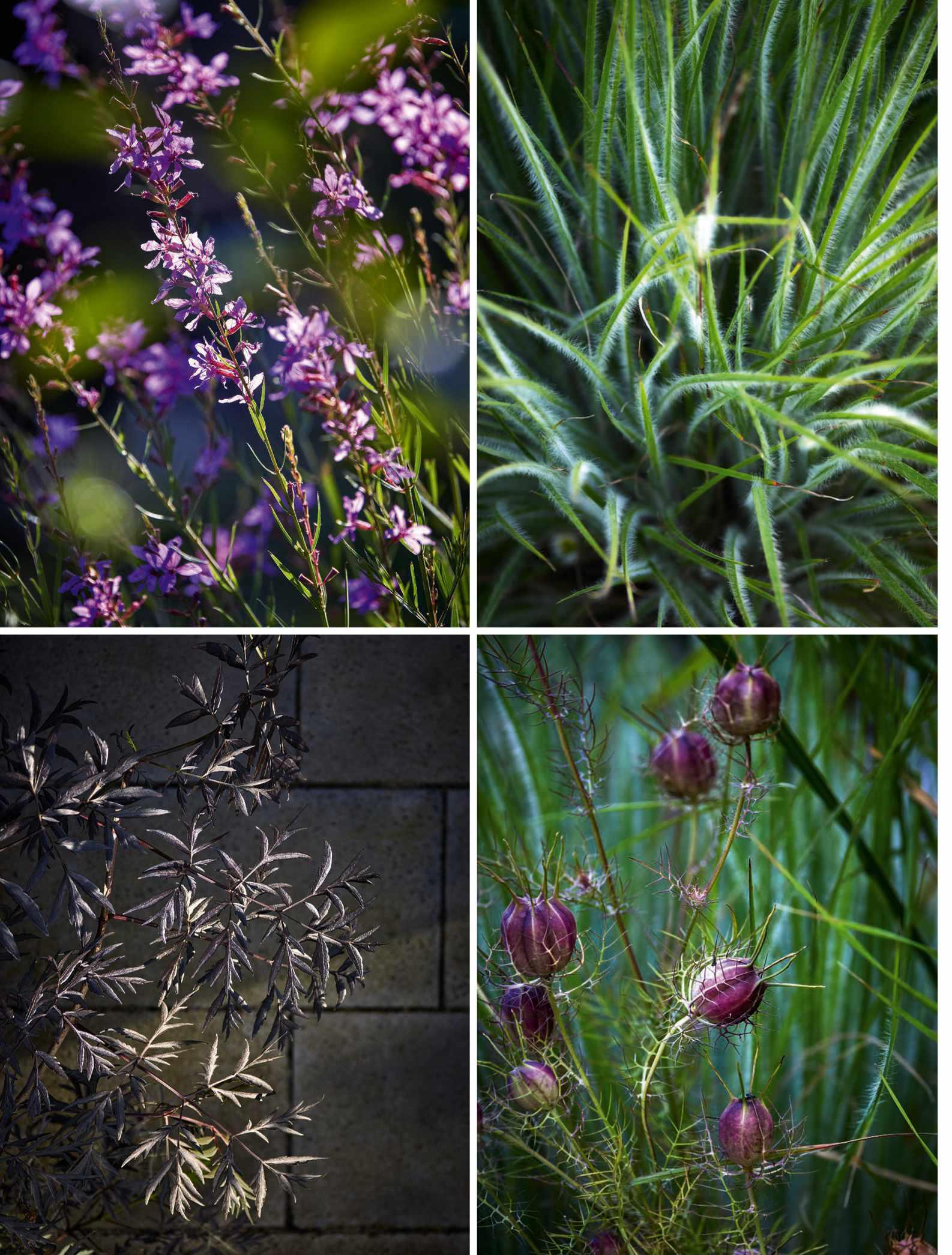
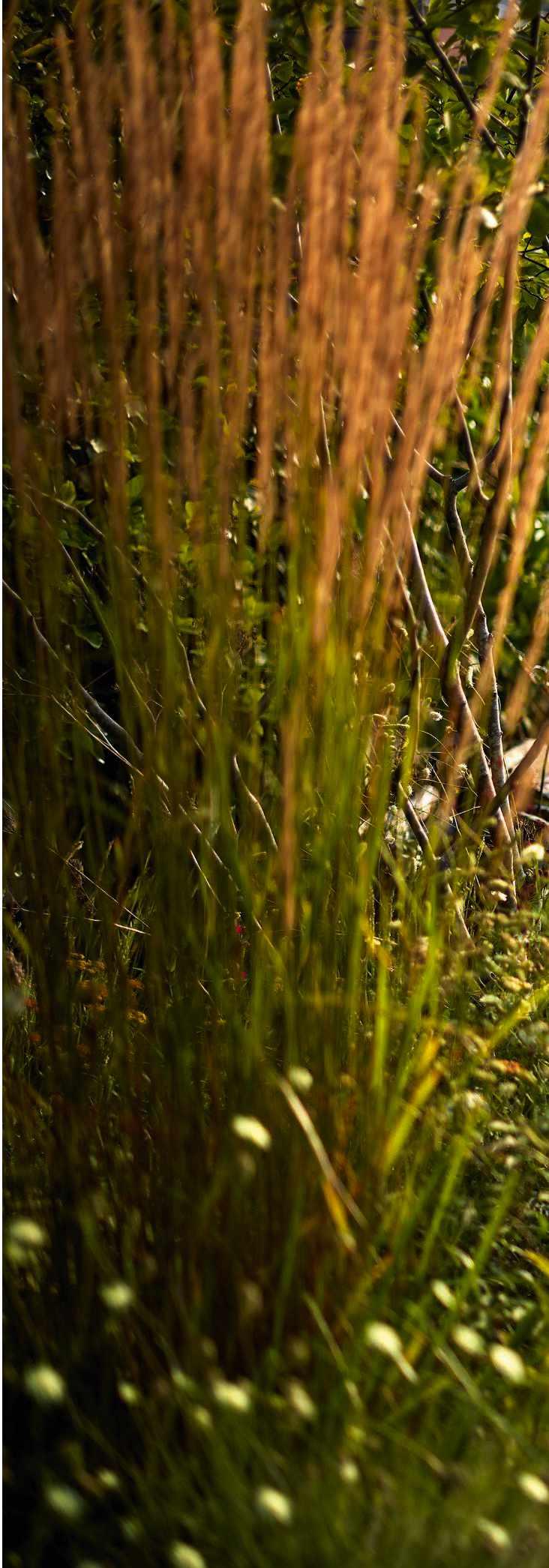
1 Lythrum salicaria ‘Swirl’ A cultivar of purple loosestrife, a summer-flowering perennial with upright flower spikes; a magnet for bees. Height and spread: 1m x 50cm. RHS H7, USDA 4a-9b†
2 Schizachyrium scoparium ‘Ha Ha Tonka’ With multi-season appeal, this new grass selected by Piet Oudolf and Cassian Schmidt has hairy, pale-green leaves that turn shades of red and copper in autumn. 1m x 1m. RHS H6, USDA 3a-9b.
3 Sambucus nigra f. porphyrophylla ‘Eva’ Picking up on the dark colouring of the paving, this spectacular shrub – an elderflower –has striking, near-black, dissected foliage and pale-pink flowers that appear in spring. 3m x 2m. AGM*. RHS H6, USDA 5a-8b.
4 Nigella damascena ‘Albion Black Pod’ The turban-like seedpods of this annual, known as love-in-a-mist, are just as attractive as its white flowers. 45cm x 40cm. RHS H3. *Holds an Award of Garden Merit from the Royal Horticultural Society. † Hardiness ratings given where available.
I have tried to bring the planting as close to the house as possible,” says Stefano. On both sides of the garden – sunny on the left and shadier on the right – the planting is airy, with perennials such as Actaea, Sanguisorba and Lythrum that move with the wind and blend easily together.
About 30 per cent of the planting is grasses, including Sesleria, Calamagrostis and Schizachyrium, which help knit the perennials together to give a soft, naturalistic effect. To blur the boundaries between the hardscaping and the beds, Stefano has used creeping plants such as Mentha requienii, Viola riviniana Purpurea Group and Thymus serpyllum. Erigeron karvinskianus self-seeds itself around, providing long-lasting interest, and to add height, Stefano took a multistemmed Amelanchier Marianne was growing in a pot and planted it, along with two others, in the beds, bringing a sense of rhythm to the design.
“Marianne wanted to be able to engage with nature and for Lizzy to have the opportunity to do the same,” says Stefano. “It has been very rewarding for me, because she takes such an active role in the garden and often shares images with me of what she has observed.” To satisfy Marianne’s wish to
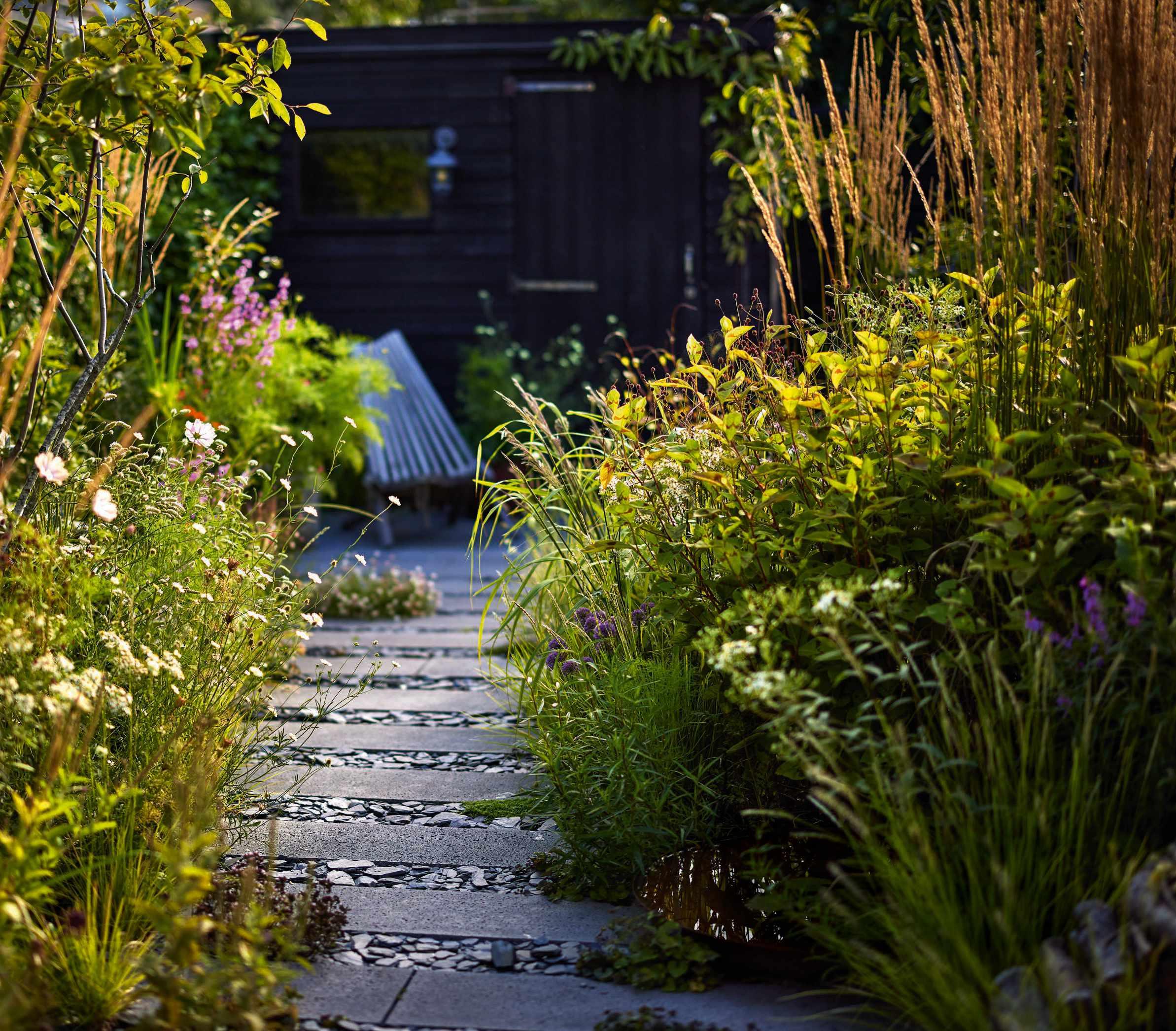
Wherever you are in the garden, you are surrounded by plants
increase biodiversity in the garden, Stefano has introduced several sets of log piles that provide both habitat and sculptural and textural interest. A circular Corten steel pond has already attracted frogs. Marianne potters in the garden every day after work and says that the redesign has made a huge difference to the family. It not only provides somewhere to dine outside, it also gives them something interesting to look at for 365 days of the year. “Our daughter plays in the garden all year round and there’s room to set up a tent where we sometimes sleep in the summer. We see beetles, bees and birds and recently had hedgehogs here. I find it incredible how quickly wildlife has found our garden now that we are providing some habitat. Stefano listened to our wishes and has provided us with something that suits us perfectly,” she says. “Winters seem much shorter than before because there is something of interest all year round; always something to look forward to.” ■
USEFUL INFORMATION
Find out more about Stefano Marinaz’s work at stefanomarinaz.com
Above The path through the garden to one of the two stylish EcoChairs by EcoFurn curves diagonally, partially obscuring the view, which adds both intrigue and design interest. Marianne describes the dense planting that Stefano has provided as “a magical explosion of different textures and shades of green” and enjoys gardening here almost every day after work, as a way of winding down.
The American nurseryman and designer on the beauty of prairie planting, becoming Piet Oudolf’s right-hand man and championing gravel gardens
WORDS TONY SPENCER PORTRAIT SABRINA ROTHE
In his twenties, Roy Diblik would regularly volunteer at the 100-acre prairie meadow at the Morton Arboretum on the outskirts of his home city of Chicago. One of the oldest tall-grass restorations in the American Midwest, it was curated by Ray Schulenberg, after whom it’s now named. Roy remembers when, in 1981, Ray asked him to help lay the narrowest of paths through its planting. “It was early in the year and the prairie plants were just emerging after the fire,” he recalls. “Ray said: ‘I just want it one cinder block wide because I want people to walk through there and I want the plants to touch them.’ He wanted people to feel the intimacy of plants.”
Roy shares that enthusiasm for bringing people and plants together, although his own path to becoming a noted plantsman and designer wasn’t always so immersed in plants. He grew up in the working-class neighbourhood of Berwin, Chicago, where he says “everyone worked hard… and went bowling”, but his Czech mother insisted the family get out of the city every summer for fishing trips, and road trips to National Parks. His first job was in outdoor education, taking children from inner-city projects to a camp in a large forest preserve. “You were surrounded by beauty with the kids responding to things they’d never seen before,” he says. “Doing stuff like running through a creek barefoot or staying up past dark where they couldn’t see their hands in front of their face.”
After the programme folded in 1976, Roy was hired as the grounds supervisor in charge of the Park District in St Charles, a small town west of Chicago. He had been in the job two years when his boss asked him to manage the Natural Garden, a local nursery he had bought. Roy knew next to nothing about plants, but the nursery’s founder, Walter Stephen, stuck around to teach Roy all about them, with perennials dug straight from the ground.
Stahl, the authors of Perennials and their Garden Habitats. But it was a gifted copy of Gardening with Grasses by Piet Oudolf and Michael King that changed everything for Roy, because, he says, it was “about looking at prairie with a higher aesthetic”.
In 2001 Roy met Piet Oudolf in person when the Dutch designer came to Northwind in search of a local source to grow 26,000 perennials for the Lurie Garden in Chicago’s Millennium Park. “Piet rolled out the plans for the Lurie in our potting shed on a table,” recalls Roy, “and when he rolled it out, the whole plan became 3D.”
The two plantsmen immediately hit it off and Roy remembers taking him to visit the Schulenberg Prairie in late June. “Piet was really moved by the look and the scale of the big prairie with Baptisia lactea as far as you could see, and the cones of Echinacea pallida coming up. I think that moved him to redesign the meadow at the Lurie.” Roy has been Oudolf’s trusted right-hand man ever since on many US-based projects, most recently for the Oudolf Garden Detroit.
Roy visited the Morton Arboretum on a day off from the nursery and, enraptured by the beauty of the prairie plants in Ray Schulenberg’s meadow, signed up as a volunteer. He asked Ray how he could get these plants to the public. “You can try,” replied Ray, “but they’ll never sell.” Roy did try, making the Natural Garden the first nursery in the Midwest to put young native prairie plants into pots. For two years, he could only give them away, but by the time Roy left in 1991, the nursery was selling 300,000 of them a year.
After 13 years at the Natural Garden, Roy was ready to set up his own nursery, Northwind Perennial Farm in Wisconsin, with partners Colleen Garrigan and Steve Coster. At the time, his heroes were British gardeners Graham Stuart Thomas and Christopher Lloyd, along with German horticulturists Richard Hansen and Friedrich
Roy became a designer by default when a client asked him to create a native planting with one caveat: “Can you make it look good?” Challenge accepted. This led Roy to develop his grid-based ‘Know Maintenance’ system for planting design, easily adaptable to any average-sized garden and local conditions. At heart though, he is still a grower, who is wild about Carex and has introduced several plants to the trade, including Allium angulosum ‘Summer Beauty’, Panicum virgatum ‘Northwind’ and Sporobolus heterolepis ‘Tara’.
In 2008, he toured Hermannshof in Germany with its then director Cassian Schmidt. “That’s when I saw the gravel gardens,” he says. “I was amazed. Who’s doing this in America? Nobody. So I did one as soon as I got back to Northwind.” Today, gravel gardens are finally on the rise in the USA, thanks in no small part to Roy. Now aged 71, he divides his time between Northwind, new design projects and teaching the next generation at local colleges. “Now the highlight is sharing stewardship. How do you care for this stuff?” he says. “Our biggest need is people knowing how to interpret the relationships between the plants when they’re hoeing. It’s not just weeding.” When he talks about growing plants in communities, Roy speaks in terms of love, health and intimacy, his gravelly voice drawing you in, leading you ever further down that prairie path he has laid, to bring as many as possible closer to the joy of plants. ■
USEFUL INFORMATION
Find out more about Roy’s work at northwindperennialfarm.com
He is currently working on the Sears Sunken Garden in Chicago with his wife Annamaria Leon and Piet Oudolf. searssunkengarden.org


Preserve the fleeting summer beauty of your garden by drying flowers to enjoy year round indoors. We’ve asked three expert growers to recommend the best dried flowers to grow

Roisin is a cut-flower farmer and florist at Verde Flower Co who grows on a small plot beneath the Tyne Bridge. verdeflowerco.org
1 Echinops ritro ‘Veitch’s Blue’ A bee magnet and eccentric dried flower, this perennial is a must in the garden. Harvest for drying when the tiny petals have fallen off, then bunch and hang up. Use on its own or with wispy grasses in winter for a dramatic dried bouquet. Height and spread: 1.2m x 50cm. RHS H7, USDA 3a-8b†
2 Nigella damascena A hardy annual with delicate flowers and sculptural seedheads for drying. Sow where you would like it to flower, in a sunny spot in well-drained soil. Use these seedheads for buttonholes or tiny bud-vase joy in autumn and winter. 50cm x 50cm. RHS H3, USDA 2a-11.
3 Cota tinctoria This sprawling, rather weak perennial is a beautiful sun-like dried flower and generates a golden dye colour for fabrics, hence its name. Sow and plant out before the last frost in spring or autumn. Plant in well-drained soil and water well for plenty of flowers. Bunch and hang out of direct sunlight. 70cm x 50cm. RHS H6, USDA 3a-9b.
4 Alchemilla mollis My favourite dried filler flower, bringing wispy goodness to any arrangement. An unfussy perennial, it grows happily in most conditions with well-drained soil. Cut armfuls and create plumes of dried flower clouds for an autumn tablescape. 50cm x 50cm. AGM*. RHS H7, USDA 3a-8b.
5 Delphinium consolida An annual that’s easy to grow, but its seeds need a period of cold stratification to germinate well. Harvest for dried flowers when colour shows on petals. Bunch and hang upside down with good airflow and minimal light. 1m x 50cm. RHS H6.
6 Papaver somniferum One of the great delights of my garden. Seedheads that dry bone white, with a sculptural flair. These annuals could not be easier to grow – chuck the seeds anywhere and wait for their rattling heads. Self seeds. Sow in dry, poor soil, preferably in full sun. 1m x 50cm. RHS H5
7 Phalaris canariensis This hardy annual is my favourite grass to dry. Sow directly in spring after danger of frost has passed, in full or partial sun. Cut and store in a dark, dry place to retain colour, or in direct sun to bleach to bone white. 90cm x 40cm. RHS H7.
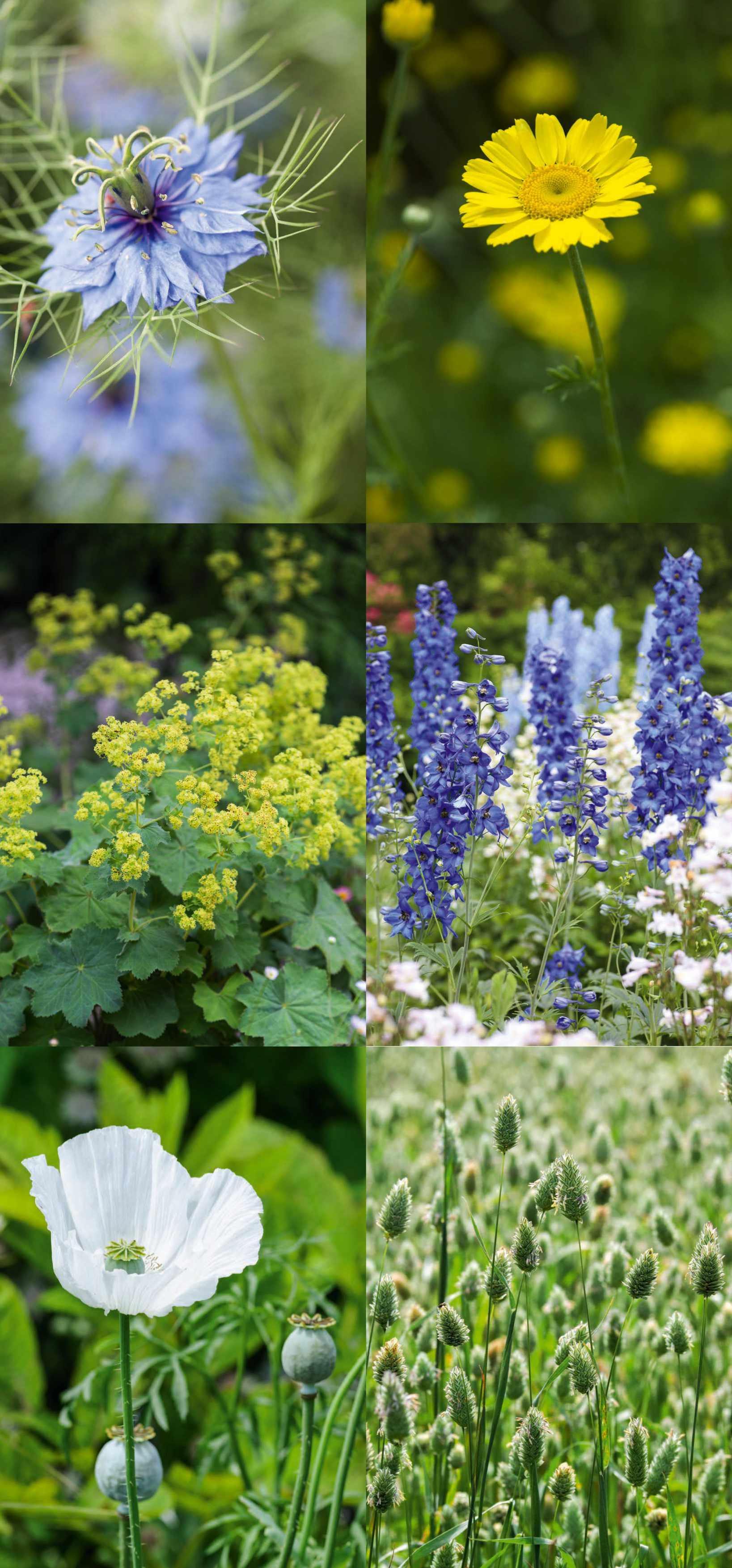
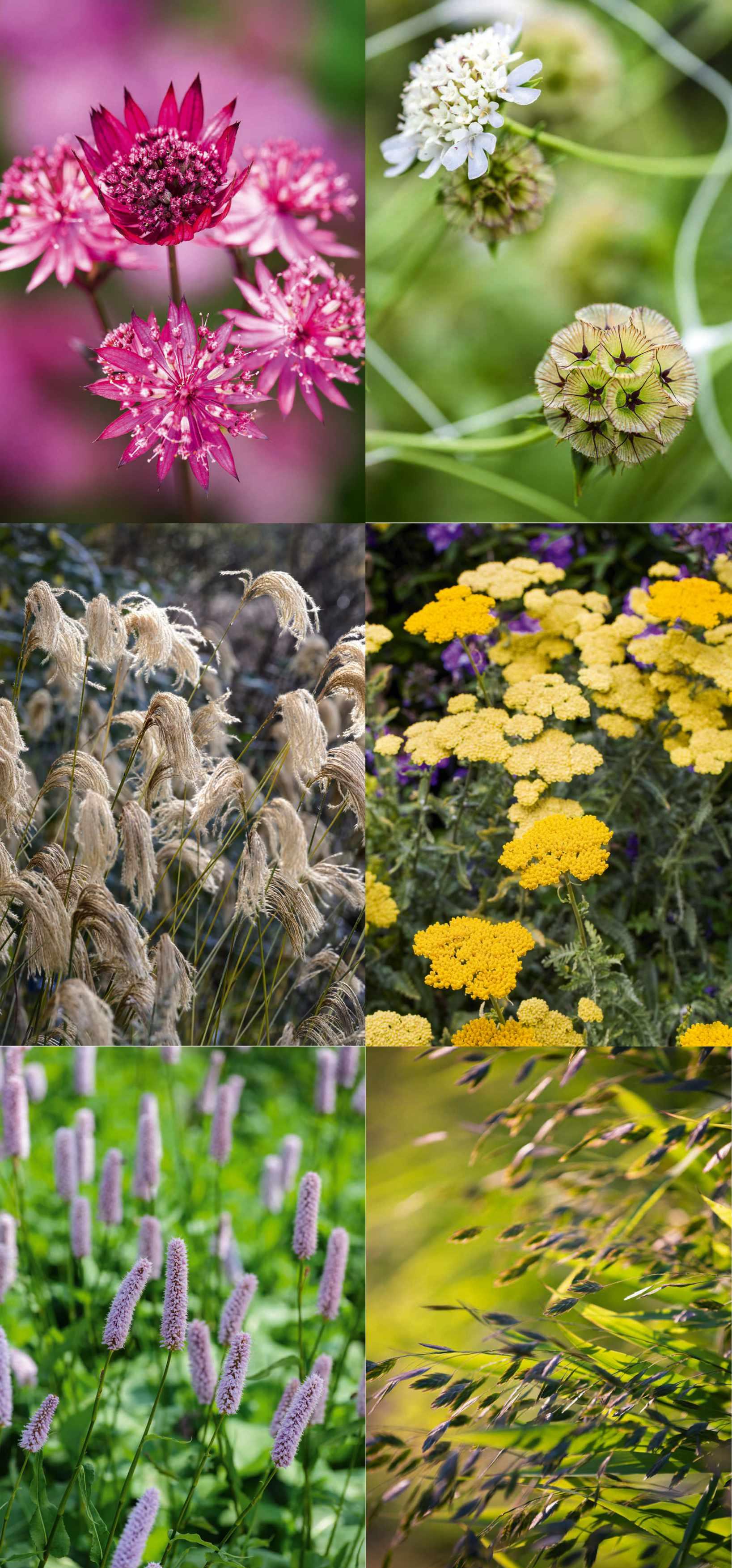

Carolyn is a botanical stylist, planting designer and garden writer. Her latest book, A Floral Feast, is out now.
@carolynrdunster
1 Astrantia major ‘Ruby Wedding’ Darker cultivars keep their colour longer; paler cultivars turn brown quickly when exposed to light. The heads close slightly as they dry, but take on a lovely papery texture and add an airiness to arrangements. Harvest in full bloom and strip off foliage. 50cm x 50cm. RHS H7, USDA 4a-7b.
2 Lomelosia stellata While the pincushion flowers can be picked and dried, it is worth leaving them on the stem until the heads turn into miniature star-studded globes. Wait until they feel papery to the touch and pick as long a stem as possible. Place in a vase without water and they will continue to dry. 50cm x 50cm. RHS H4.
3 Miscanthus nepalensis All miscanthus are good for drying. Harvest flower stems as they appear in late summer, along with the foliage, and arrange in a vase in 2cm of water. After a couple of days, the flowerheads will have turned into fluffy plumes and the leaves will gradually turn from green to shades of bronze. 1.5m x 1.2m. RHS H6.
4 Achillea ‘Moonshine’ Once properly dry, the flat-headed clusters change colour to a deep, long-lasting burnished gold. For long, straight stems, pick at the base of the plant as they are beginning to stiffen and heads are fully formed, which can be several weeks after initial flowering. 60cm x 60cm. AGM. RHS H7, USDA 3a-8b.
5 Bistorta officinalis ‘Superba’ All bistorts lend themselves to drying and can be picked at different stages of flowering for a pretty display of pinks through to crimsons. The flower spikes change colour as they mature. 90cm x 90cm. RHS H7, USDA3a-7b.
6 Chasmanthium latifolium Flowerheads appear in late summer as bright-green spikelets, then gradually turn a deep golden brown, which is when to harvest for an autumnal display. They require no extra drying. 50cm x 50cm-1m. RHS H7, USDA 3a-8b.
7 Rosa ‘De Resht’ Claret, burgundy or deep-pink roses such as this are best for drying. Orange and yellow hues will also hold their colour, but whites and very pale pinks tend to fade quickly to brown. 90cm x 80cm. RHS H6, USDA 5a-9b.
Claret, burgundy or deep-pink roses are best for drying, and orange and yellow hues will also hold their colour
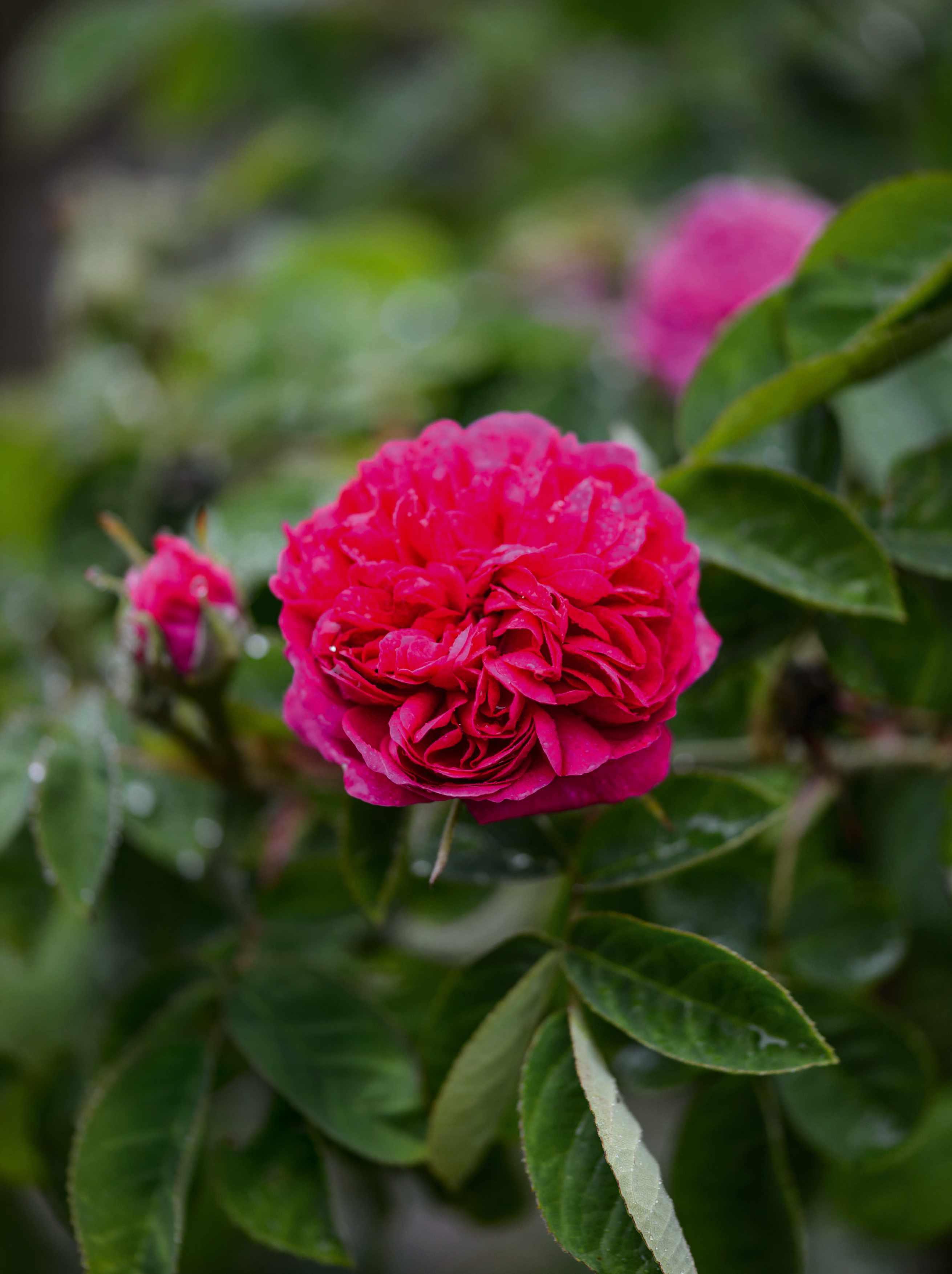
To air dry roses, pick them when they are still in bud. Remove the lower leaves and suspend upside down.
Use the sand-drying method for dense, open heads. Make sure they are completely moisturefree before immersing in a container of clean, dry sand (children’s play sand is recommended). Trickle the sand between the open petals until they are completely covered. Set aside in a warm, dry place for a minimum of two weeks. Take out the flowers when fully dry, brushing away excess sand with a soft paintbrush.
To make rose confetti, detach individual petals and dry on a tray in a warm place such as an airing cupboard.
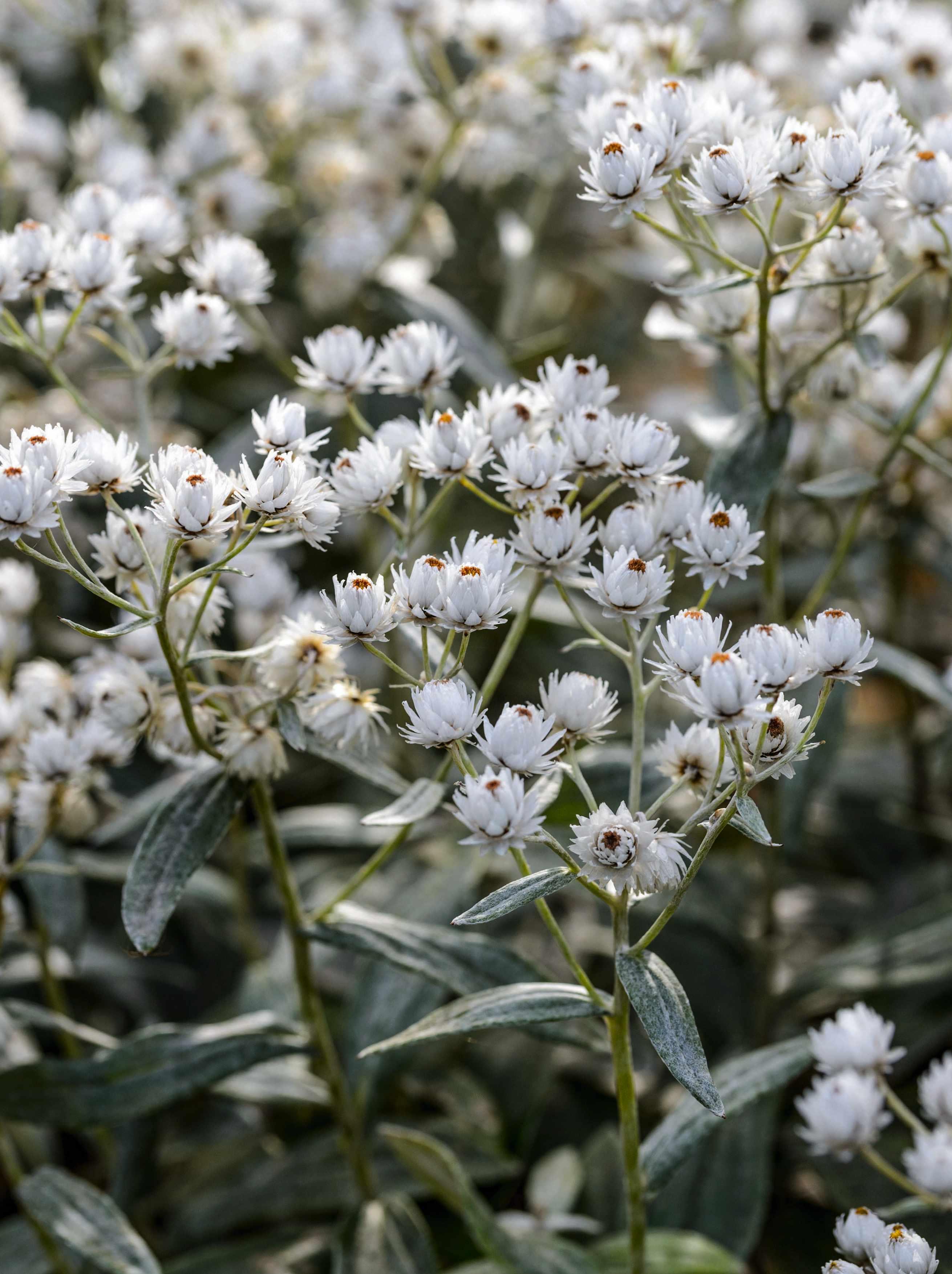
Great to add volume to a dried bouquet, it’s easy to grow and easy to dry by hanging upside down in a cool shed

Erica is head gardener at Priorwood Garden in Scotland, which has a long history of growing flowers for drying nts.org.uk
1 Anaphalis triplinervis We grow this and A margaritacea at Priorwood Garden. Both are easy to grow and easy to dry by hanging upside down in a cool, dark shed. Great to add volume to a dried bouquet. Happy in any aspect. 50cm x 60cm. RHS H7, USDA 3a-8b.
2 Briza maxima An annual grass with much larger seeds than its perennial cousin Briza media. Great for adding texture to any dried flower arrangement. Carefully remove excess foliage and hang upside down to dry. We grow it in a south-facing bed. Self seeds. 75cm x 20cm. RHS H6.
3 Amaranthus ‘Red Army’ Love-liesbleeding comes in many shades from green through to deep red, but I love these spikes of rich burgundy. Remove all leaves before drying as they crumble once dried. We start off seeds in the glasshouse and then plant out after the last frost. 1m x 50cm. RHS H2.
4 Luzula nivea A clump-forming perennial and beautiful plant to grow in a moist, shaded or partially shaded position. At Priorwood, we grow it in our woodland area. Pick flowers just as they open to keep their shape and prevent the cream flowers from browning. 60cm x 20cm. RHS H5.
5 Cerinthe major ‘Purpurascens’ This hardy annual is a wonderful foil to other flowers and works as great substitute where eucalyptus might be used. We sow it direct in a sunny border where it will happily self-seed around. 60cm x 60cm. RHS H3.
6 Cynara cardunculus Scolymus Group
Purple thistle heads appear on top of silver foliage. Great for attracting pollinators, and, if they are cut just as the flowers emerge, the stems keep their colour when dried. Requires a sunny aspect and good support to prevent tall stems from keeling over. 1.8m x 1.2m. AGM. RHS H5, USDA 7a-9b.
7 Glycyrrhiza yunnanensis Produces small lavender flowers in the summer, and then fuzzy seedheads that stand well into winter. They look fantastic in the vase and contrast nicely with paler, faded flowers such as honesty and round allium seedheads. 1.5m x 1m. RHS H5, USDA 6a-10b.
For advice on how to dry flowers, visit gardensillustrated.com/dry-flowers
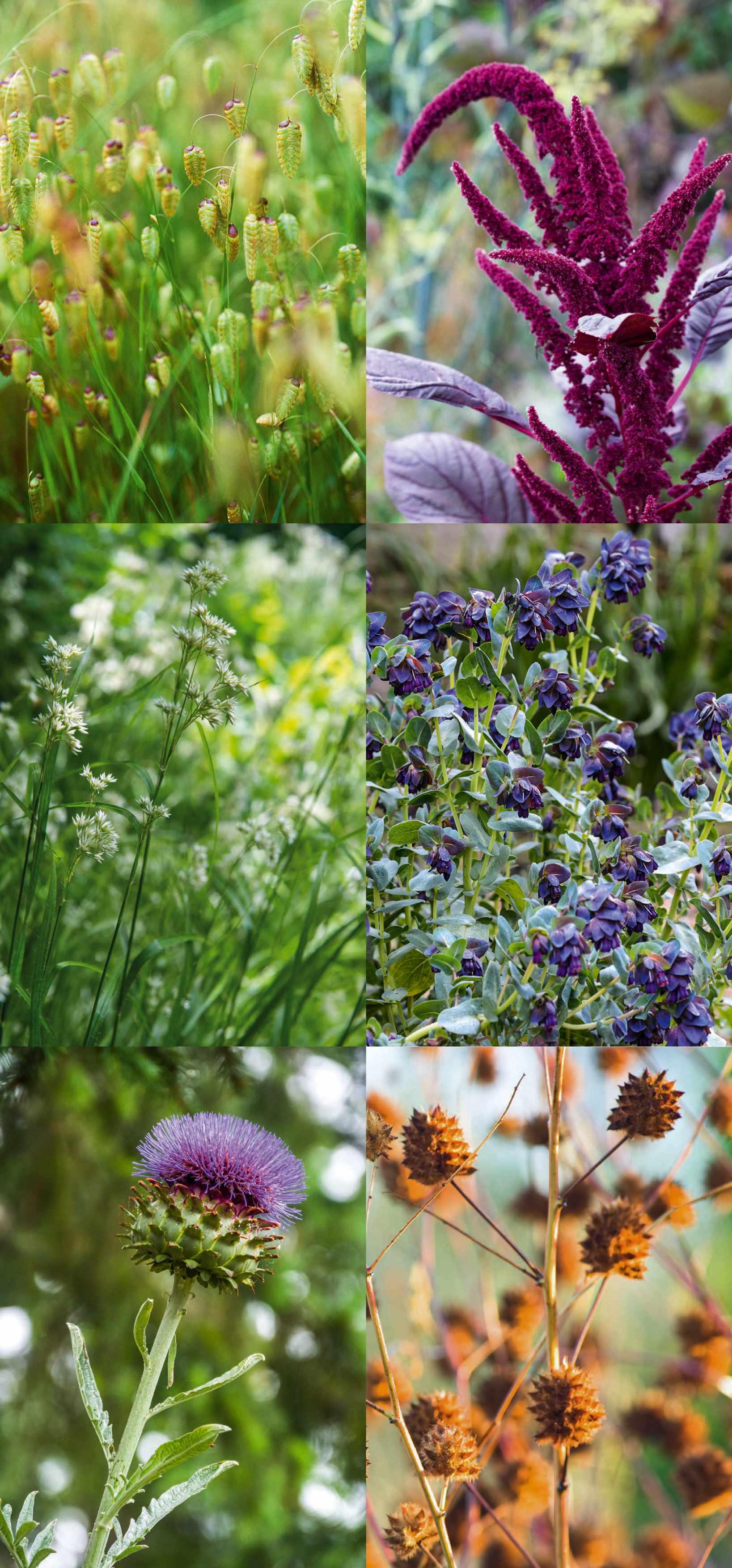
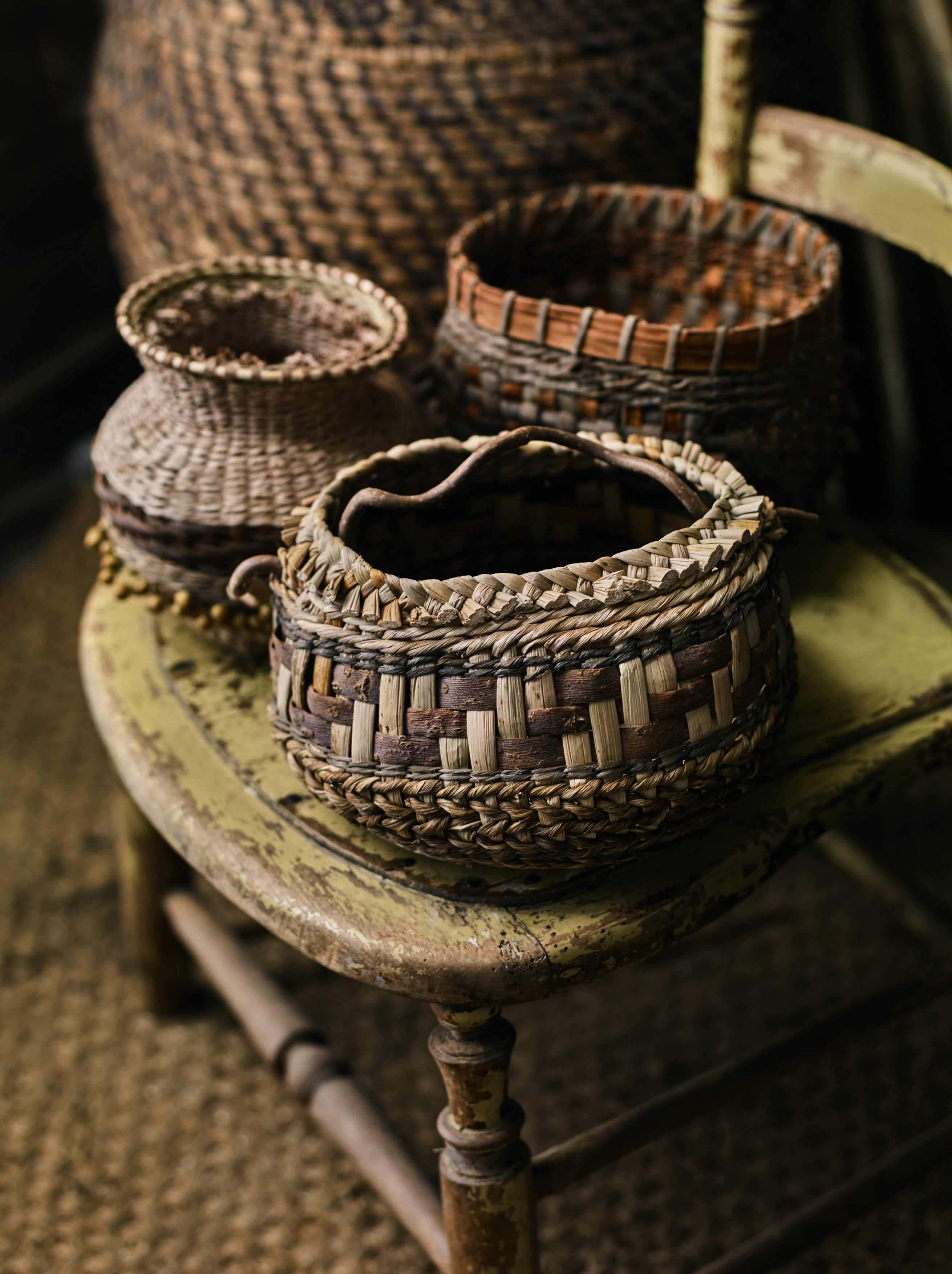
Basket maker Mollie McMillen finds inspiration from the rural landscape around her Hampshire home
CAMILLA PHELPS PHOTOGRAPHS ANDREW MONTGOMERY

image Weaver
with a bundle of locally grown willow, harvested over the winter and destined for her baskets.
Behind her stand bundles of ‘Black Maul’ hurdle willow, which she uses for larger garden structures.
Facing page A selection of baskets Mollie has made as one-off exhibition pieces.
For these she uses many different fibres, including willow bark, banana leaf, crocosmia leaves, lime bark, daffodil leaves, English rush and grasses.

Basket maker Mollie McMillen is endlessly thrilled and fascinated by the thought that people have been weaving vessels from natural materials for thousands of years. “Basketry uses all these ancient skills and techniques and I love that connection with history and where we all came from,” she says. “It makes me feel very close to the earth.”
Her inspiration is the rural landscape around her Hampshire home, where she finds most of her materials. From tree plantations and hedgerows to sweet chestnut coppices, rushes, willow and garden prunings, she has a rich sourcebook. “I have a mental map of the gardens, hedges and woods in this area, where various things live; it’s a seasonal map to find things at different times of year,” she explains.
Preparing the materials for weaving is a big part of the craft. Mollie uses bark from felled trees, each with its own time for harvesting. With western red cedar there’s a two-week sweet spot in May before the sap turns thick and sticky, while other barks can be harvested later in the season. Then there are elaborate soaking processes for different plant materials – willow needs a day per foot – and a period of mellowing before it is flexible enough to work with. Hedgerow and smaller plant fibres need less preparation time.
Mollie is largely self-taught. Always passionate about the outdoors, she started working with children on the fringes of education and found her way to basket weaving through teaching bushcraft skills. Beginning with small knife pouches made from bark, she and her husband, artist Nick McMillen, played around with different foraged fibres as their basketry skills evolved. Mollie learned and taught as she went, soon bringing willow weaving into the mix. “There are a lot of techniques involved with willow,” she says, “but if you nail them, you can be more free with what you’re making.”
When the Covid pandemic hit and the outdoor-learning centre closed, she seized the opportunity to become a full-time maker and has received official
Above, from left to right
Mollie’s work often incorporates a range of locally foraged plant materials, from the leaves of daffodils, day lilies and crocosmias to the bark of lime and sweet chestnut trees. These daffodil leaves from Mollie’s garden are being dried for future weaving projects.
This willow basket with a wrapped handle uses three different willows, including ‘Flanders Red’, the pale ‘Dicky Meadows’ and a dark, steamed willow. Willow is Mollie’s preferred medium, even though it requires a lot of planning and preparation, including soaking and mellowing, before it is flexible enough to work with.
Rolls of willow bark soaking before use.
Right These woven willow pieces were originally made for a flower show and were decorated with peonies and roses. Suitable for indoor or outdoor use, they are available for hire or as commissioned pieces.
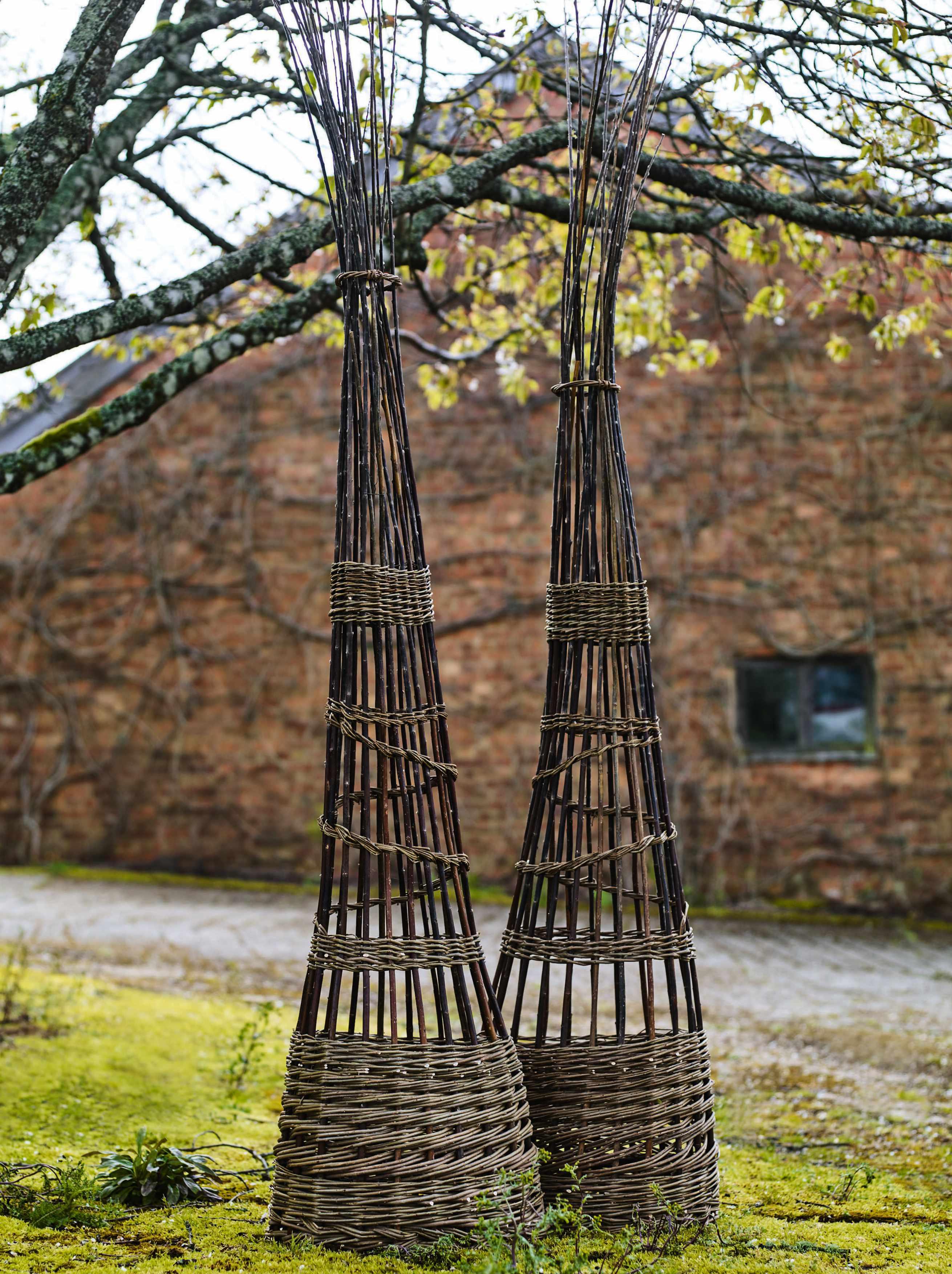
Basketry uses ancient skills and techniques, and I love that connection with history. It makes me feel close to the earth


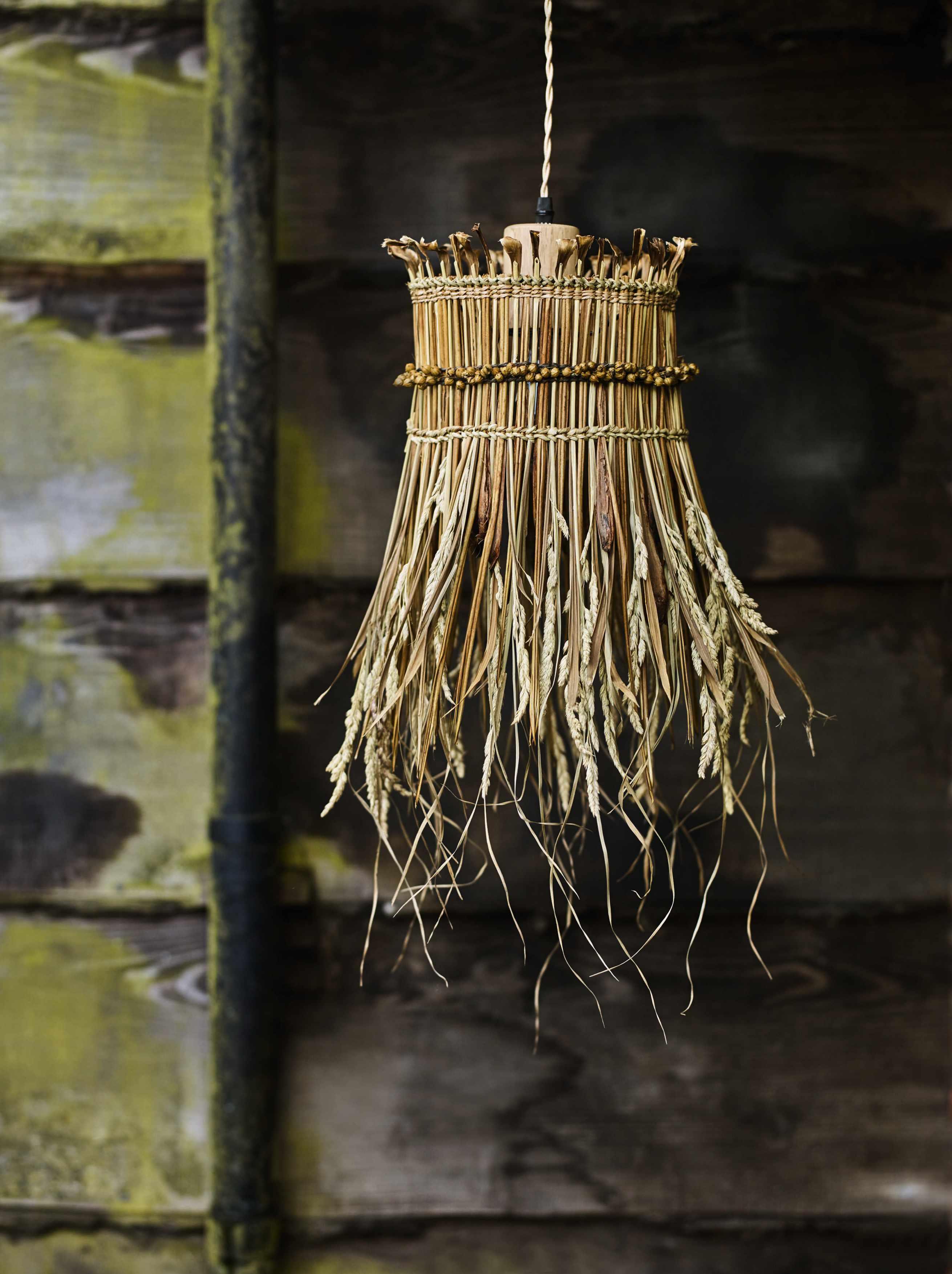

I love the randomness of the plant fibres and seeing what crops up out of my hands; to just listen to the materials and work out what they’re going to lead you towards
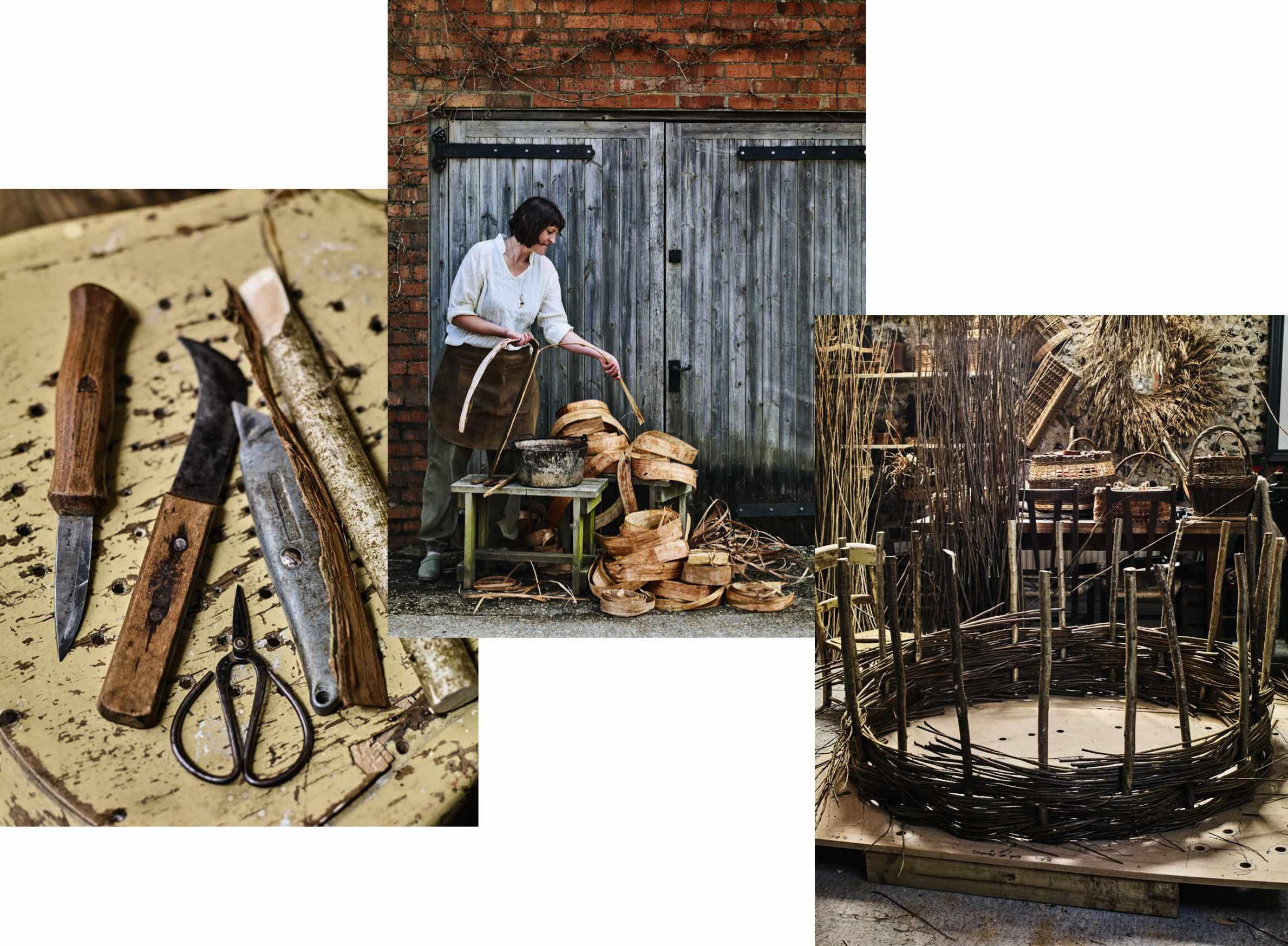
recognition for her work from the Worshipful Company of Basketmakers – the traditional guild founded in 1569. She now weaves all manner of vessels, including baskets, cots – and coffins. The first coffin she and Nick wove was made of sweet chestnut bark. “It was one of the loveliest things we have ever done. I really liked that process of making a vessel knowing that it’s very important and is going to hold someone’s precious body.”
Ultimately, it took too long to harvest the amount of bark needed for coffins and Mollie now weaves them from willow because of its strength, flexibility and availability, often incorporating bark and other plant fibres into the designs.
“When you’re making coffins, there is a really beautiful intention to it,” she explains. “Bereaved relatives will come and weave part of the coffin and the caskets too, which is an amazing thing to offer; it can be a very intimate process.”
Much of Mollie’s work is made to commission, ranging from large garden pieces such as arbours, plant supports and fencing – she created the outdoor hurdles for Pollyanna Wilkinson’s 2023 RHS Chelsea Flower Show garden – to baskets and recently lampshades, experimenting with different materials to see what emerges.
Her studio is piled high with coils and reams of bark, bundles of willow rods and rows of plant fibres awaiting transformation. There are no favourites for Mollie and she enjoys the journey of sometimes not quite knowing how things will turn out.
“I get absorbed in whatever I’m working with,” she says. “Unless I’ve got a commission and I have to make things a certain way, I love seeing what happens; I know that I’ve got enough skills up my sleeves to just go with it. I love the randomness of the plant fibres and not thinking about what I’m making, just seeing what crops up out of my hands. It’s lovely to be able to just listen to the materials and work out what they’re going to lead you towards.” ■
Find out more about Mollie’s work and her courses at molliemcmillen.co.uk
Mollie also sells one-off pieces at The Makers Barn in Petworth. makersbarn.co.uk
Facing page One of Mollie’s lampshades, woven from foraged plant fibres including cocksfoot grass, palm, phormium, ginger leaf, lime bark and sedges.
Above, from left to right
Among Mollie’s toolkit are a Ben & Lois Orford Sloyd knife, a curved blade, scissors, a conventional Stanley knife and a bespoke wooden ‘spud’ – a stick carved to a blunt-edged wedge used for removing bark from the branch.
Mollie harvests western red cedar (Thuja plicata) bark from felled, plantation-grown trees. Multiple strips are cut from a sheet of bark and prepared for weaving.
In her studio, Mollie is starting work on a set of five large willow plant surrounds of 1.2m diameter. These are woven in ‘Black Maul’ willow using coppiced hazel poles as uprights for strength and durability. She will treat these with a 50:50 mix of linseed oil and white spirit so they will last around six to eight years.

From growing a few sweet peas on her plot to breeding her own cultivars, Erin Benzakein has grown Floret into one of the most respected flower farms in the USA
WORDS RACHEL SIEGFRIED PHOTOGRAPHS CHRIS BENZAKEIN
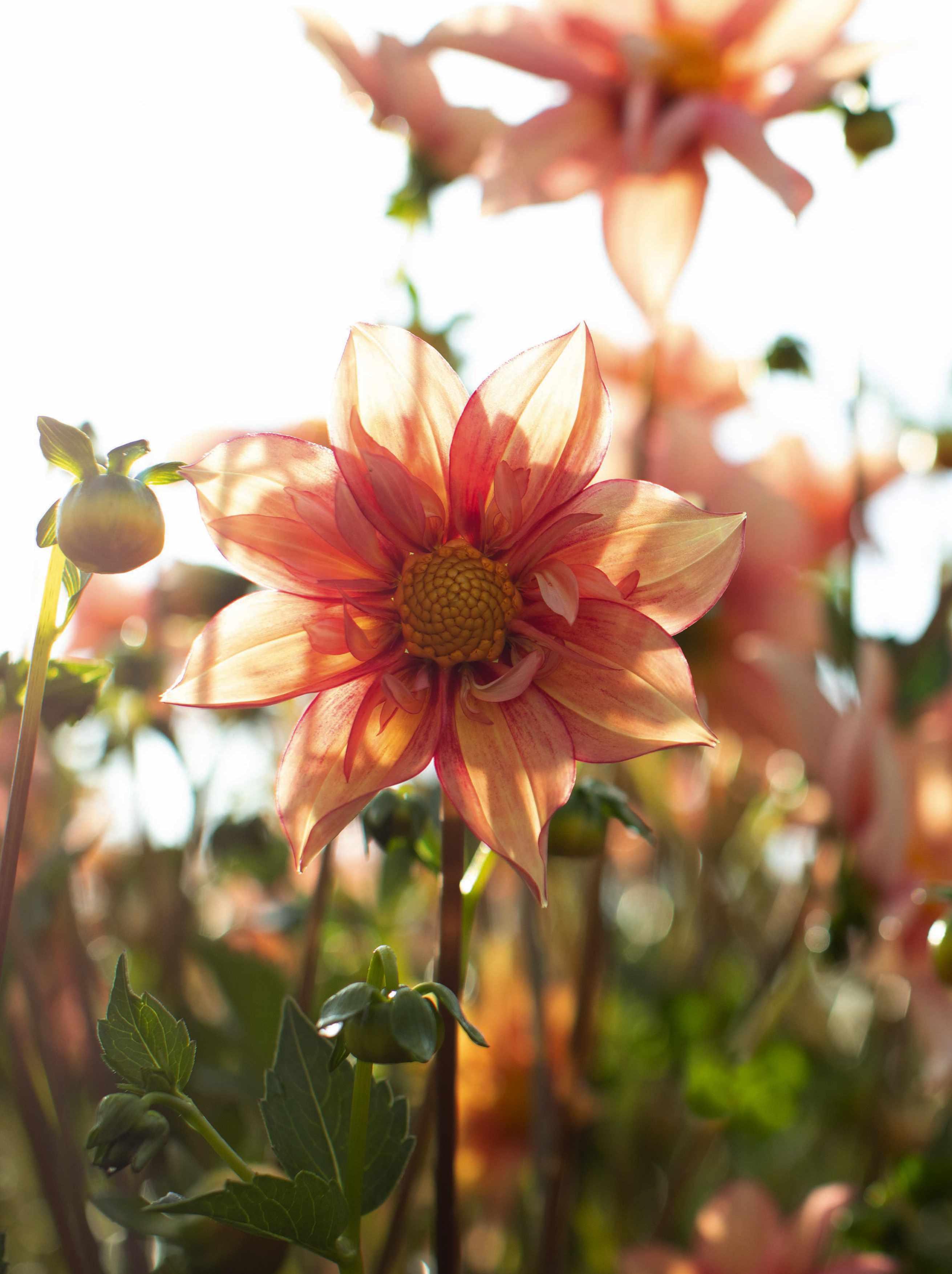
This image An as yet unnamed dahlia cultivar that the team at Floret has been working on for a couple of years, pouring a lot of energy into breeding open-centred dahlias that also last well in the vase.
Facing page Erin Benzakein, the face of the farm, harvesting bucketfuls of her farm-bred flowers.
Getting nowhere with requests for unusual colours and forms, they taught themselves how to breed new flower cultivars
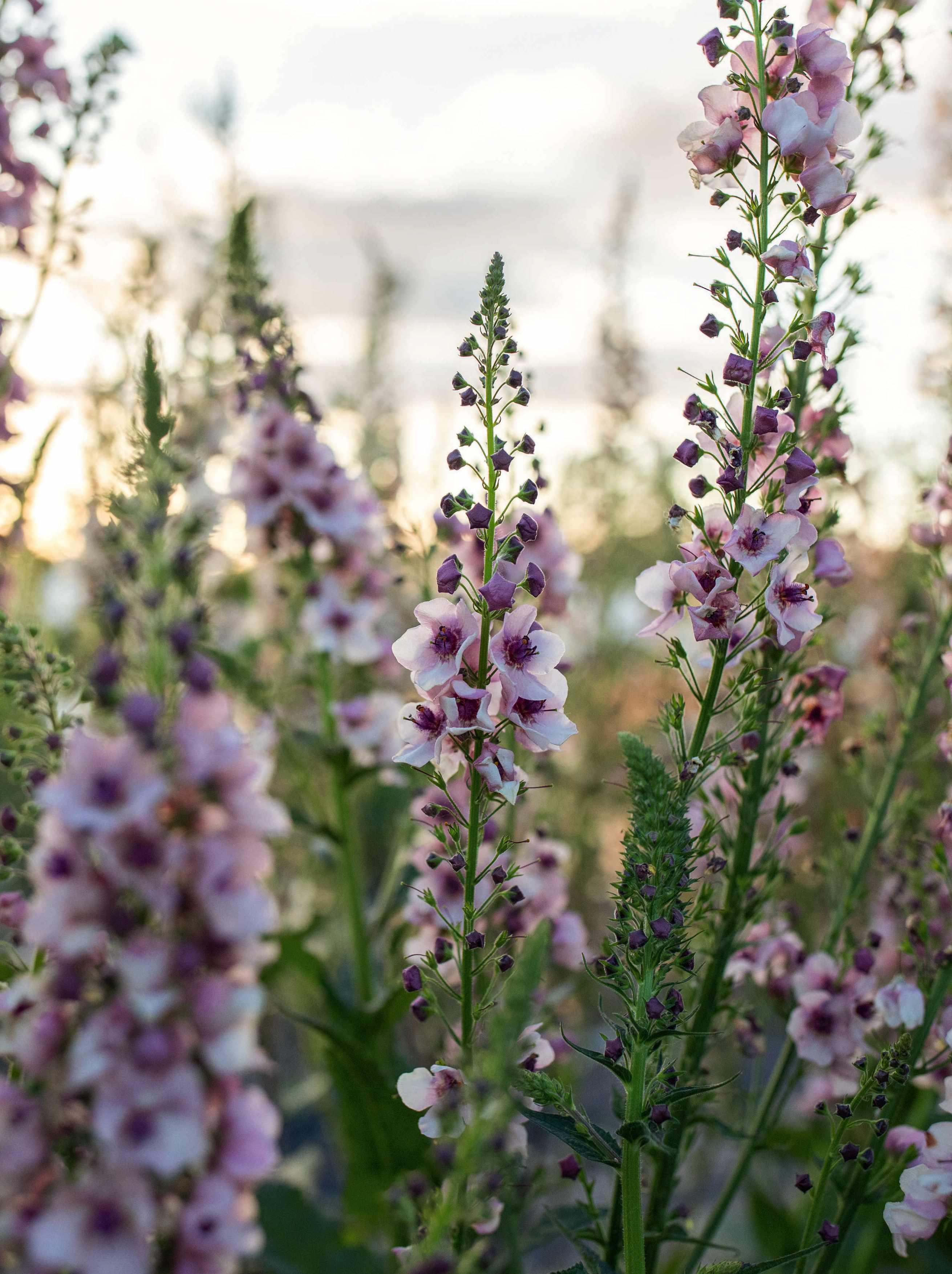
This image Alongside its own breeding programme, Floret grows several established cultivars, such as this Verbascum ‘Southern Charm’.
Facing page Bringing seed of a new cultivar to market can take more than seven years from the initial discovery of a standout flower. In this area of the two-acre farm, Erin and her team are observing and documenting rows of dahlias as part of the breeding programme.
Among cut-flower growers, Floret Flower Farm is a household name. This US flower farm and seed company, based in Washington State, is a pioneer in the seasonal flower movement. It’s the vision of Erin Benzakein, who with her husband Chris (the man responsible for Floret’s stunning photography and videos) and her committed team, has dedicated the past 15 years to learning and sharing all there is know about growing cut flowers.
When she first started selling flower bouquets at a local grocery store in 2008, Erin struggled to find anywhere to turn for information. “It feels like a kind of impossible way to make a living if you are not really creative and used to failing,” she says. Although she had some experience working with a landscaping crew, the former nanny was self-taught when it came to growing cut flowers, beginning with just a few rows of sweet peas in her vegetable garden.
Eventually, cut flowers replaced the vegetables, and after Floret was born in 2009, more and more of the family farm was given over to cut flowers. In 2014, they started offering seeds, with the idea that small-scale flower farmers and gardeners should have access to the same great cultivars as professional growers. At one point, Floret was offering more than 300 varieties for sale, with a percentage of these being produced on the farm as seed crops.

However, Erin soon realised there was a disconnect between what big seed companies were offering and what the end user wanted. After getting nowhere with requests for more unusual colours and forms, she enlisted the help of Eric Budzynski, a seed specialist with a decade’s experience working on vegetable seed farms. Together the pair set about teaching themselves how to breed new flower cultivars, with a clear set of goals to help them narrow down their selection.
Plants needed to thrive in a range of climates, particularly hot and humid ones. They also needed to be vigorous and healthy, so even new growers would have success. Their criteria for cutting flowers included: long stems; nuanced, beautiful colouring; and forms that lent themselves to natural-style floristry. Erin wanted to give local growers an advantage over imported blooms by focusing on breeding flowers that don’t ship well. “So if floral designers or wholesale flower sellers wanted to get their hands on them, they would have to buy them locally or learn how to grow their own,” says Erin.
It takes seven years from the initial discovery of a standout flower selected for breeding to a stable new cultivar that is ready for market. In the first year, only five to ten per cent of the seeds sown from a cross will come true. The rest have to be removed, which is known as roguing. Then flies or bees are introduced to work on pollinating the keepers. This process is then repeated for five years until the crop is 90 per cent true to type.
The next step is to bulk it up for seed production, which takes another two years. Winter is spent
planning which lines to develop, as even with Floret’s 80 polytunnels and more than 100 isolation cages, space is precious. Spring for Erin is about sowing all the seeds of the next generation and the summer is a daily round of diligent roguing.
“The reason that choice is limited is simply because people don’t know how to breed their own varieties and save seed,” she says. It is her strong belief that if she shares what she has learned, others will be encouraged to have a go and contribute their findings, and there will be a lot more information out there for everyone to benefit from. This starts with a free mini course, which will help growers save seed from the new zinnia, celosia and dahlia cultivars (known as the Floret Originals) the Floret team has made available this year. Erin intends to cover indepth information about the differences between openpollinated and hybrid cultivars, the isolation distances required to ensure that cultivars come back true to type, and instructions on how to go about harvesting and cleaning seeds on a home scale. Many of these resources
Erin has created come from a desire to share all she has learned and stop people making the mistakes she did. In addition to three best-selling books, a website packed with practical advice and video courses, Floret recently introduced a comprehensive digital library with detailed profiles of more than 1,500 unique cut-flower cultivars. Erin and her team are also working on the next generation of seeds, “honing in and isolating the very best and most unusual forms and colours from those mixes”. I’m excited to be trialling all 26 of these at my own flower farm, Green & Gorgeous in Oxfordshire, and can’t wait to cut and arrange with them. No doubt I will save some seed and, empowered by Erin’s advice and encouragement, I might even turn my hand to breeding myself some day soon. ■
Find out more about Floret at floretflowers.com
A limited selection of Floret Originals seeds are available in the UK from milliproust.com/floret
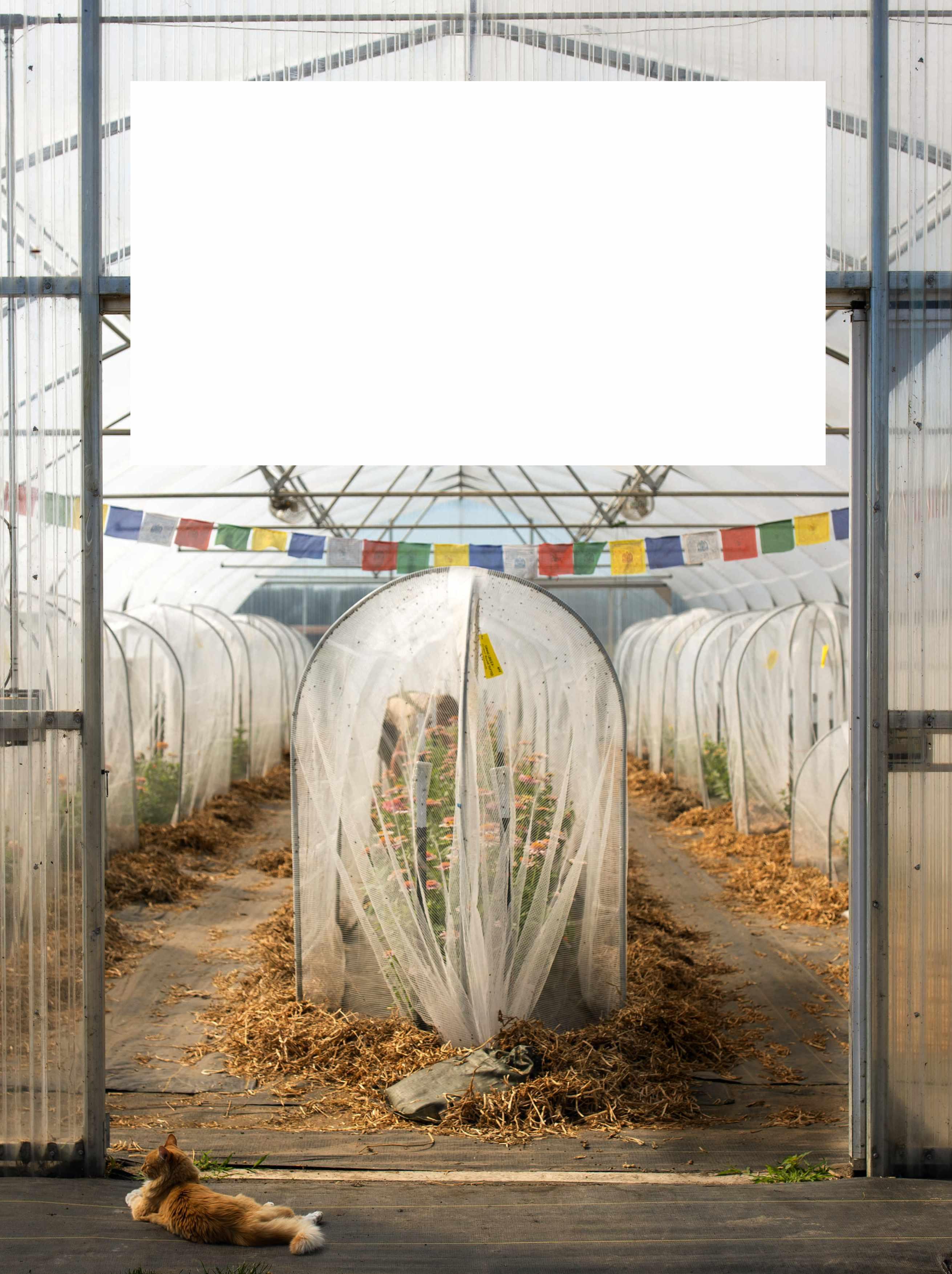
This image Erin’s adopted stray cat Timmy waits for her outside one of Floret’s greenhouses, which are filled with individual isolation cages, used to ensure new zinnia cultivars come true.
Facing page A selection of some of the dahlias, zinnias and celosias that Floret has developed as part of its breeding programme. Its new collections have evocative names such as Glowing Embers, Spun Sugar, Cancan Girls, Golden Hour and Precious Metals.
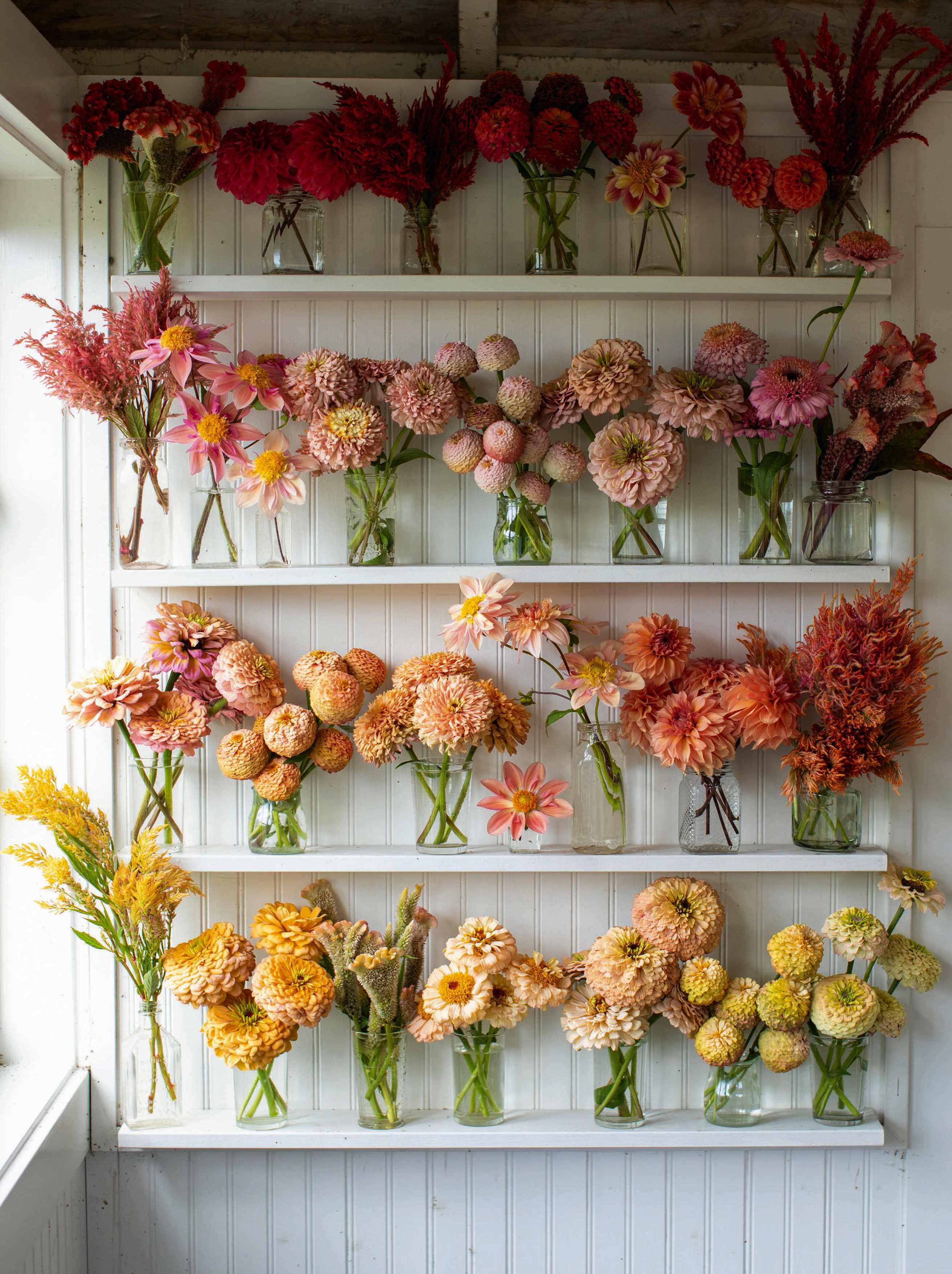

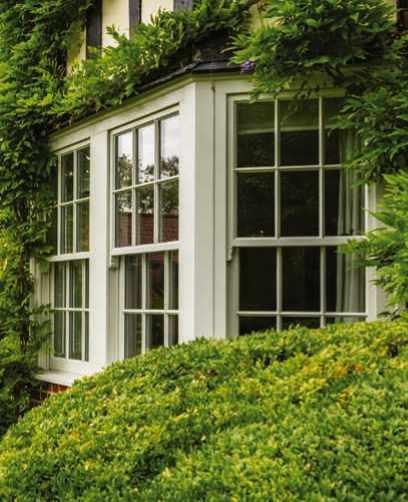




Naturally beautiful, our award-winning timber windows and doors are the logical choice. Constructed from engineered timber slow grown in cold climates, their strength, stability and beauty are guaranteed.
Our collection has been carefully and sensitively tailored to complement the English home. Unlike timber windows of old, our products will not twist, will not rot and require very little maintenance. High levels of insulation and security ensure there is no need to sacrifice beauty for comfort.
With a15% discount off all windows & doors in our Summer Sale, explore the range in 50 showrooms nationwide.
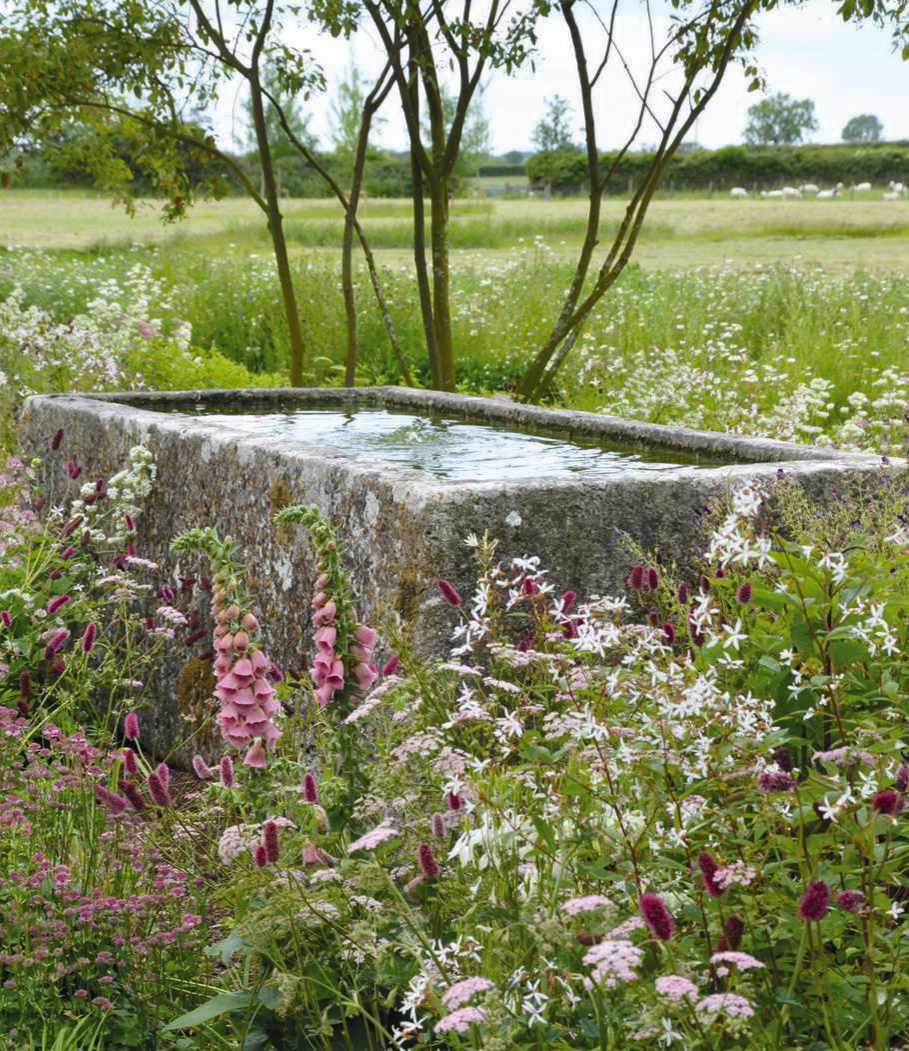



News, garden design insight and sourcebook

A new public park has opened in the City of London above the tracks of Liverpool Street Station. Designed by DSDHA, Exchange Square unfolds across several levels and brings a generously planted green space into the heart of the City. The one-and-a-half-acre park has been designed with accessibility and inclusivity in mind to ensure it can be enjoyed by as many people as possible. With planting design by James Fox of FFLO, the scheme has increased the amount of planting four-fold, so the park will enhance biodiversity and offer year-round seasonal interest. Its completion is a milestone in a seven-year collaboration between DSDHA and British Land to transform the public spaces of the Broadgate Estate and make them more inviting for people. dsdha.co.uk
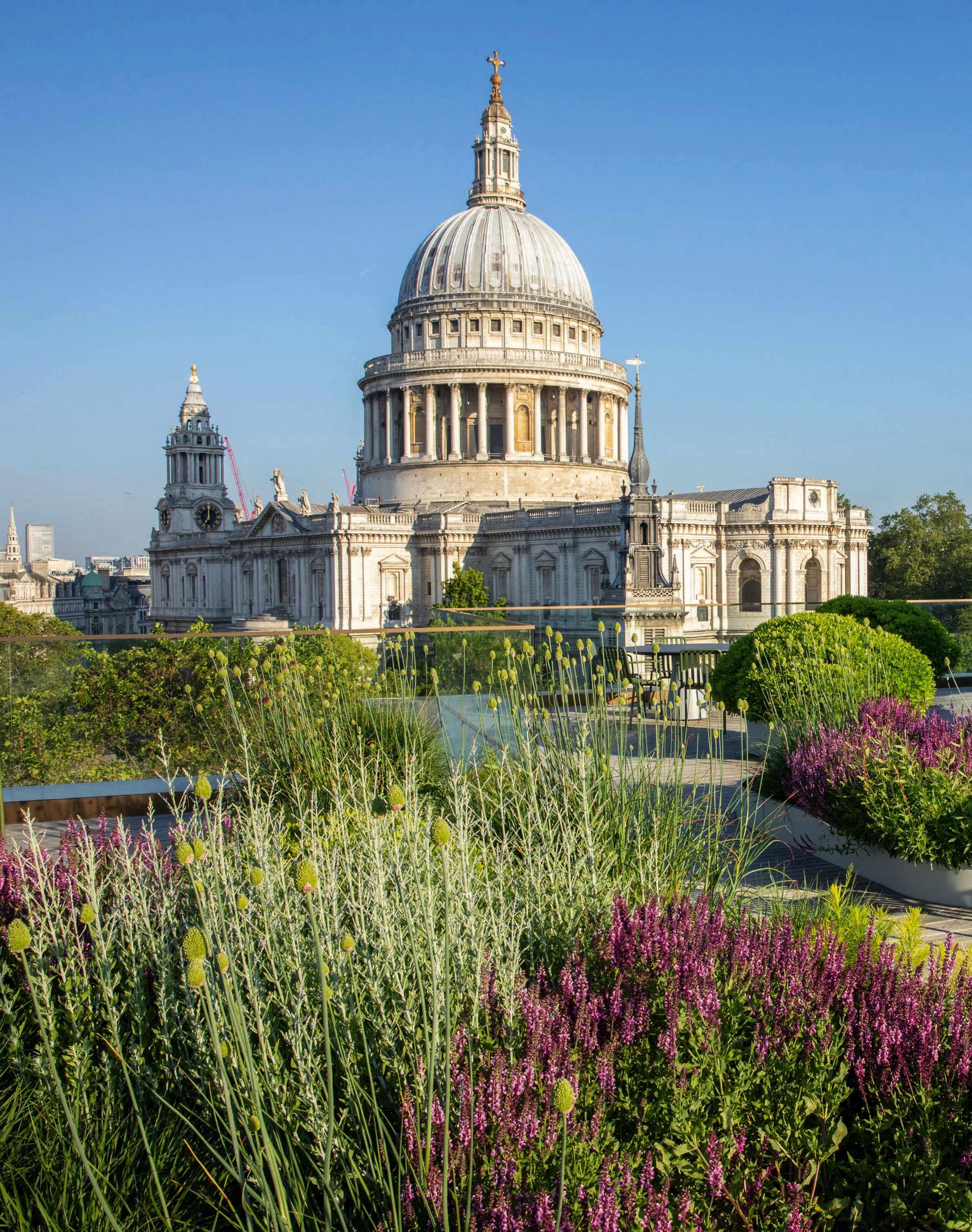
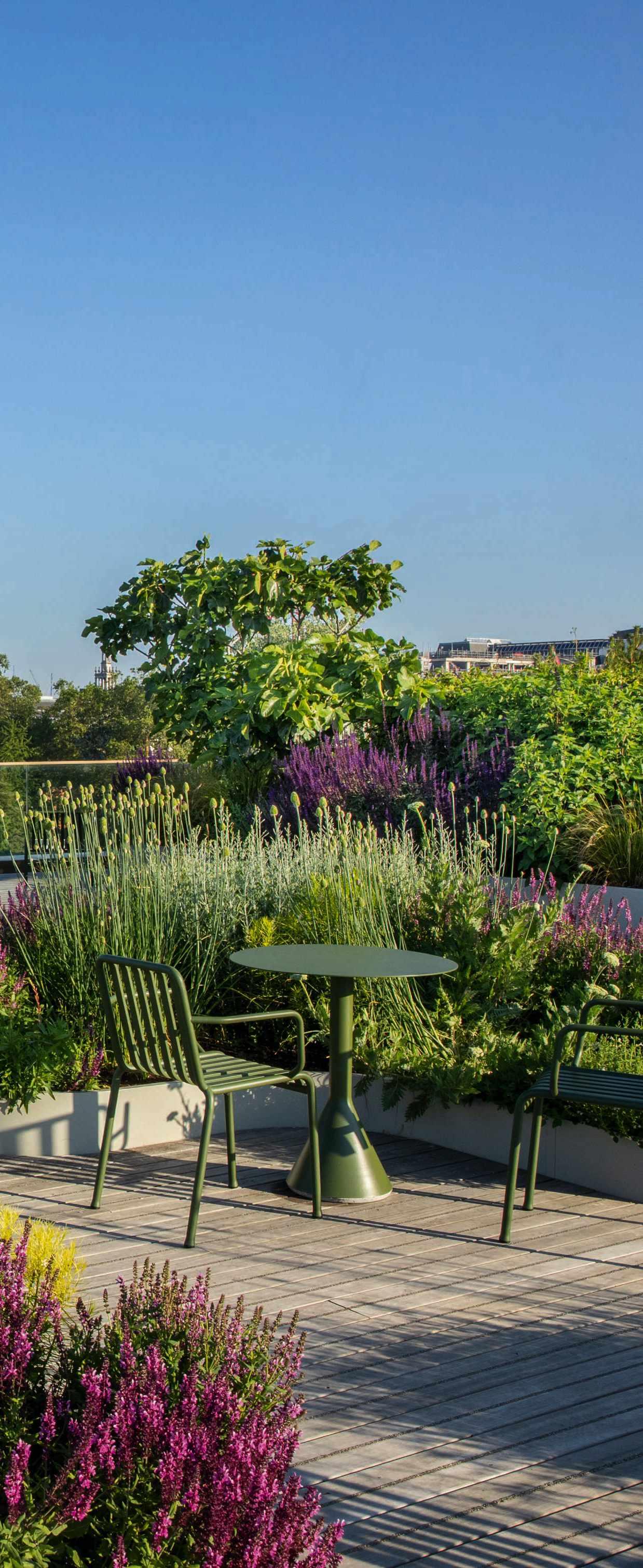
In the heart of the City of London, this roof terrace designed by Tom Stuart-Smith Studio for a new office development maximises the space and surrounding views of London’s iconic skyline, including St Paul’s Cathedral
WORDS JODIE JONES PHOTOGRAPHS MARIANNE MAJERUS
Perched a vertiginous six storeys in the air, the 450-squaremetre roof garden at 25 Cannon Street sits on top of a mixedoccupancy office building in the City of London, adjacent to St Paul’s Cathedral, and presented Tom Stuart-Smith Studio with a unique set of challenges.
“Our client was the owner of the building and during the design stages we didn’t know exactly who would be using the space or what they would require from it,” says project lead designer Shankar Kothapuram. “The client simply requested a flexible space that would enhance the lives of the people who ended up working in the building and meet, or exceed, the Urban Greening Factor planning requirement.” This is a policy that encourages urban developers to incorporate resilient planting schemes in their projects.
There were also all the usual structural considerations that impact the organisation of a roof garden, but the principal driver behind this design was a stringent law, known as St Paul’s Heights, which was implemented in the 1930s to protect views of Sir Christopher Wren’s famous dome from a number of specified vantage points in the city.
The roof space had not been available for use by previous occupants of the building as the entire area was occupied by various infrastructure vents and maintenance equipment. “Along with the redesign of the building, the roof terrace was envisaged as an amenity resource. Our aim was to maximise the communal space while keeping trees away from the centre of the garden to respect St Paul’s Heights,” says Shankar. “We developed a flexible design that used generous raised beds filled with resilient, ecologically diverse planting to create zones that could accommodate team meetings, as well as secluded areas for private phone calls and retreat, while still retaining enough open space for a large drinks reception.” The astonishing view of St Paul’s dome provided a visual desire line around which every element was arranged, and although the planting beds were laid out along a space-efficient rectilinear grid, all the sharp corners were rounded off to soften the overall effect and create a calm, meandering route.
Turn the page for more design ideas
Left Stepping out on to the roof of 25 Cannon Street, with only a clear balustrade separating you from jaw-dropping views of St Paul’s, is a surreal experience, but it is unmistakeably the work of Tom Stuart-Smith’s landscape design studio, with a sleek, contemporary aesthetic, and a planting scheme that is richly coloured and sensuously textural. Here Salvia x sylvestris ‘Rose Queen’ and Salvia ‘Blue Spire’ are interspersed with the immature flowerheads of Allium sphaerocephalon
1 Service area
2 Raised beds
3 Shrubs in deep planters
4 Smaller planters
5 Screening wall
6 Kebony decking

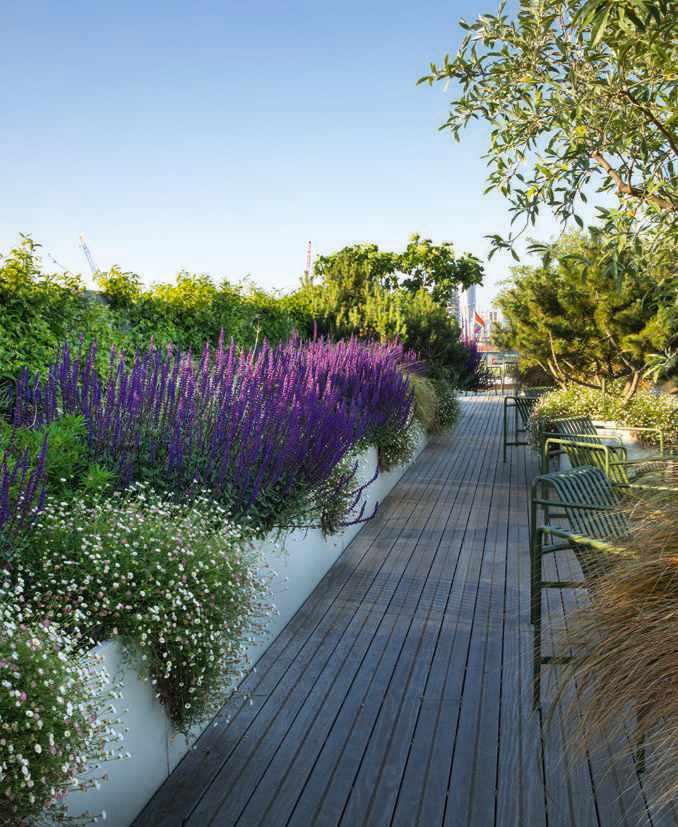
On one side of the narrow, cathedral-side section of the roof, a row of Choisya x dewitteana ‘Aztec Pearl’, alongside Salvia nemorosa ‘Caradonna’ and Erigeron karvinskianus, helps to disguise the service area wall. Opposite this there are 650mmdeep containers, each containing either a Pinus mugo or Elaeagnus ‘Quicksilver’, underplanted with Erigeron karvinskianus and Anemanthele lessoniana. They enclose intimate seating areas and are carefully sited to avoid obstructing views of St Paul’s.

The client initially requested a ‘living wall’ to hide the service areas on the roof but, says Shankar,“we felt that the ecological issues around this sort of system, which has heavy resource and maintenance requirements, was not ideal”. Instead, the screening walls have been covered with a selection of resilient climbing plants, including Trachelospermum jasminoides, Clematis ‘Frances Rivis’, Hydrangea petiolaris, Akebia quinata, Parthenocissus henryana and Solanum laxum ‘Album’.

The powder-coated mild steel planters are coloured in a very soft, warm shade of pebble grey (RAL 7032). It’s a shade that both complements the silvery grey of the Kebony wooden decking but was also chosen to be visually recessive, so that your attention is focused on the plants and not on the containers within which they are growing. These are filled with a lightweight growing medium specifically developed for roof gardens, with a minimal irrigation system.
To honour the regulations protecting the views of St Paul’s, the series of interlinking beds occupying the centre of the garden are filled with a relatively low-growing selection of ornamental perennials, all chosen for a long season of interest. Bold swathes of the upright pink Salvia x sylvestris ‘Rose Queen’, and solid domes of Pittosporum tobira ‘Nanum’ form a unifying sequence across the beds, interspersed with upright but airy Pennisetum ‘Fairy Tails’, Oenothera lindheimeri ‘Sparkle White’ and Calamintha nepeta subsp. glandulosa ‘White Cloud’, all of which dance in the

breeze, which is an almost permanent presence at this altitude. Origanum laevigatum ‘Herrenhausen’ and Erigeron karvinskianus cover any bare ankles, and Hylotelephium ‘Red Cauli’ and Eryngium bourgatii ‘Picos Blue’ add a bit of heft to the beds.
In the south-facing beds screening the central service areas, an extremely effective combination of Ficus carica and the striking sub-shrub Melianthus major is repeated several times, interspersed with Rosa x odorata ‘Bengal Crimson’, an extraordinary China rose that flowers almost all year round. Turn the page for hardscaping ideas
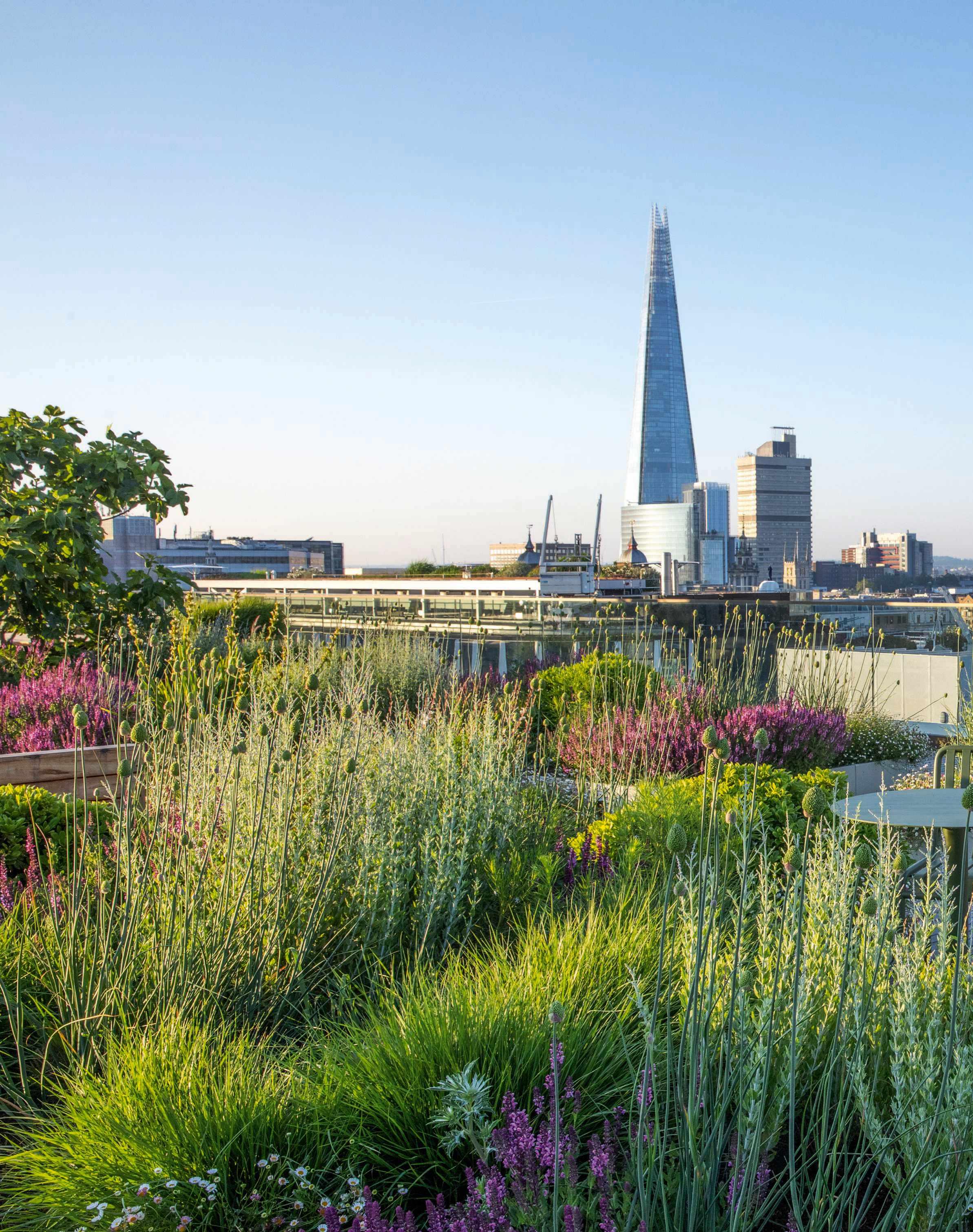
“We wanted the emphasis to be on the planting, so the hardscaping elements are minimalist in style and recessive in colour, with a limited palette of materials,” says Shankar.“The weathered decking is a form of treated softwood produced by Kebony that has been altered at a cellular level to give it a similar lifespan to tropical hardwoods. Some of the furniture is also made from timber with a natural finish, while the remaining chairs, tables and raised planters have been fabricated from highly durable powder-coated steel with a soft satin finish.”
Although the furniture was selected and supplied by the client, it follows the overall contemporary design aesthetic, with metal tables and chairs from the Hay Palissade range

and bespoke modular lounge seats in a weathered timber that complements the wooden decking.
Like all roof gardens, this is an artificial microclimate, and the shallowest beds are only 250mm deep, but the selection of drought-tolerant, predominantly Mediterranean species is genuinely resilient and would translate readily to a permanent home on solid ground, provided it was sunny and free draining. ■
USEFUL INFORMATION
Find out more about the Tom Stuart-Smith Studio at tomstuartsmith.co.uk



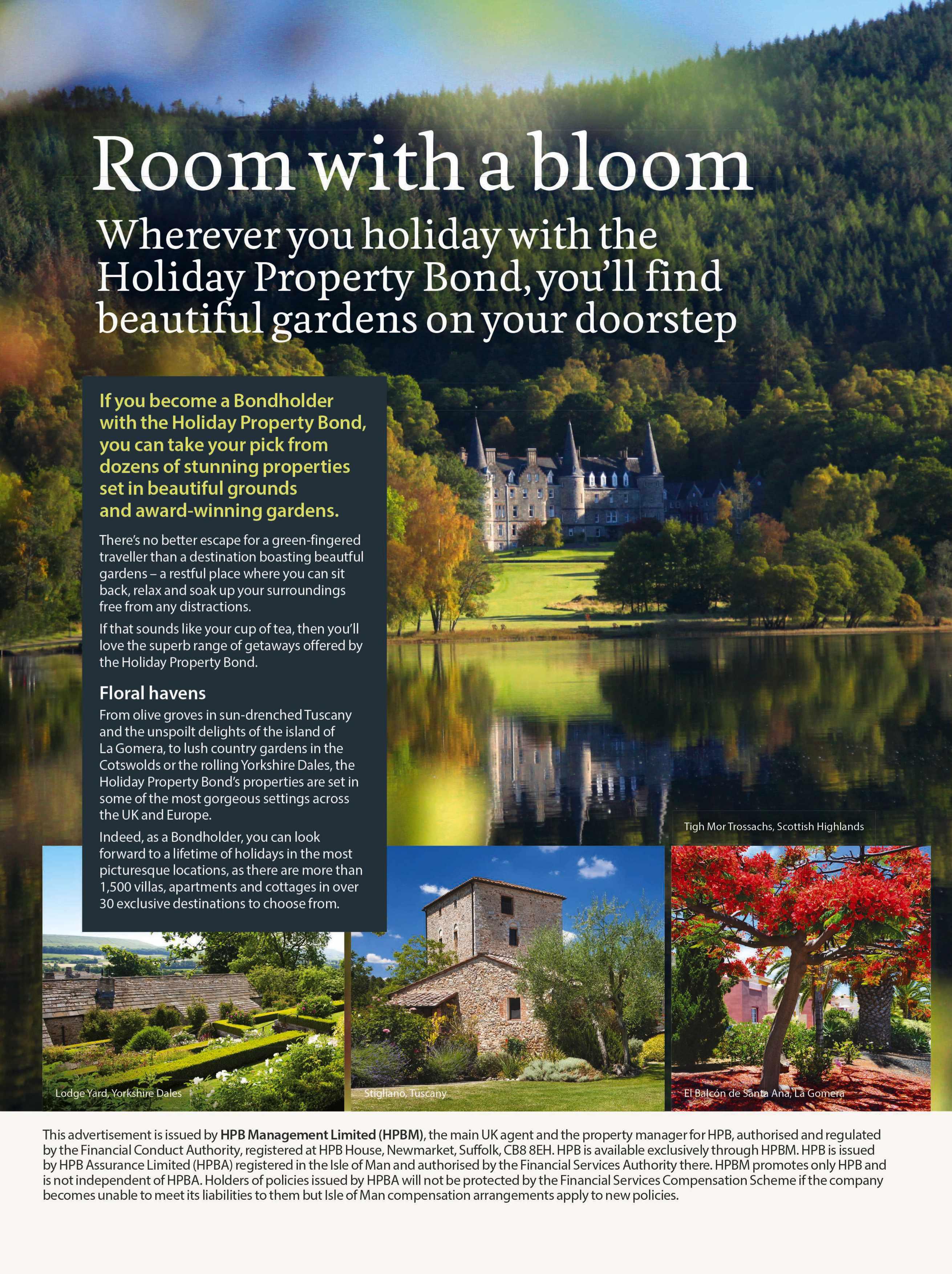



•
•
•
•
•
ARS-VS-8XZ PROFESSIONAL SECATEURS
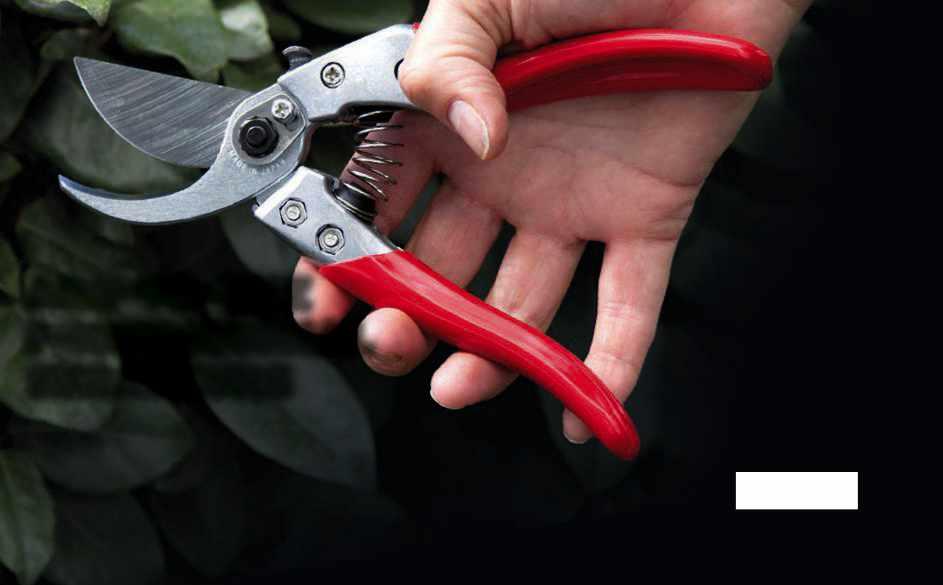
ARS-180ZF TELESCOPIC PRUNER 3M


Protect your edibles with one of these stylish protective structures
COMPILED BY MOLLY BLAIR

TRADITIONAL
Pavilion Fruit Cage, from £1,795, Harrod Horticultural, 0333 400 1500, harrodhorticultural.com
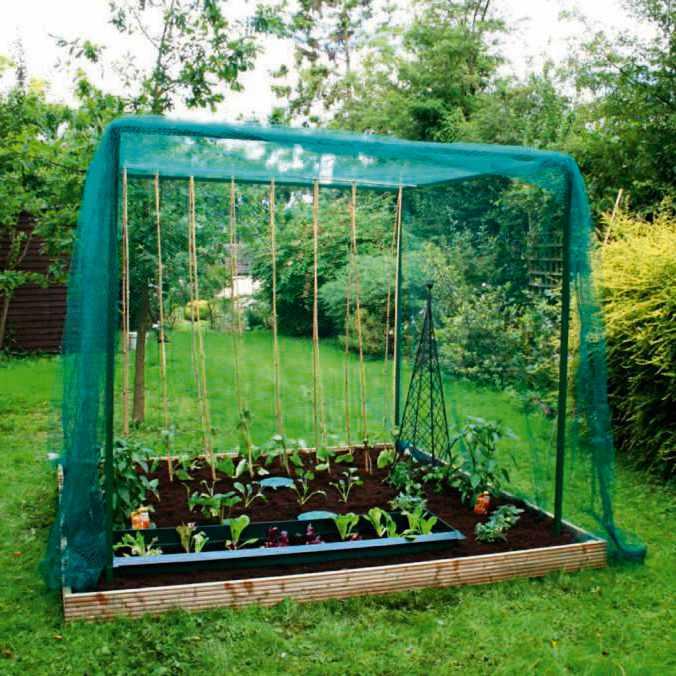
SIMPLICITY
Walk in fruit cage with door kit, from £259.99, Crocus, 01344 578000, crocus.co.uk

SMALL SCALE
Crop Cage, sage green, £89.95, Sarah Raven, 0345 092 0283, sarahraven.com
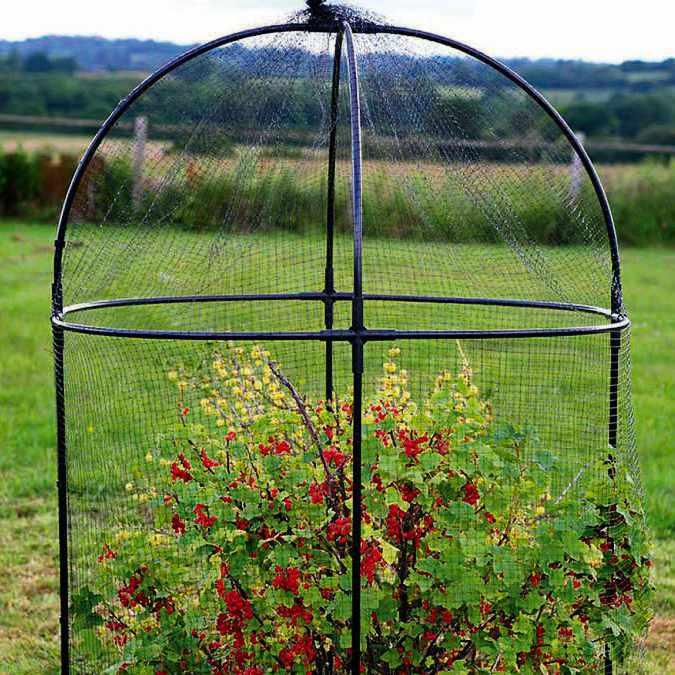
DOMED
Steel Round Fruit Cage, £49.99, Haxnicks, 0117 934 1795, haxnicks.co.uk

ROUNDED
Fruit Cages, £1,045, Muntons, 01285 706511, muntons.net

LOW CROPS
Fruit Cage, from £69, Two Wests & Elliot, 01246 451077, twowests.co.uk
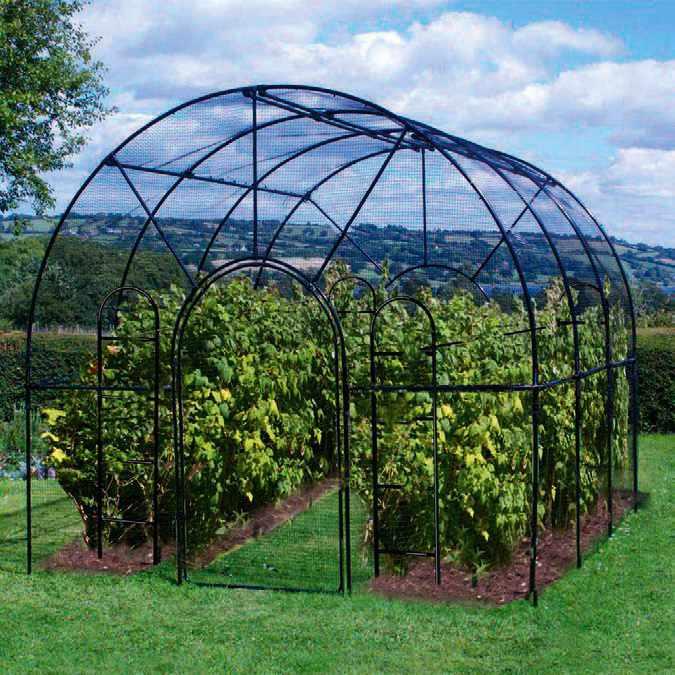
DOUBLE SIDED
Roman Fruit Cage, £1,206, Agriframes, 0117 934 1790, agriframes.co.uk
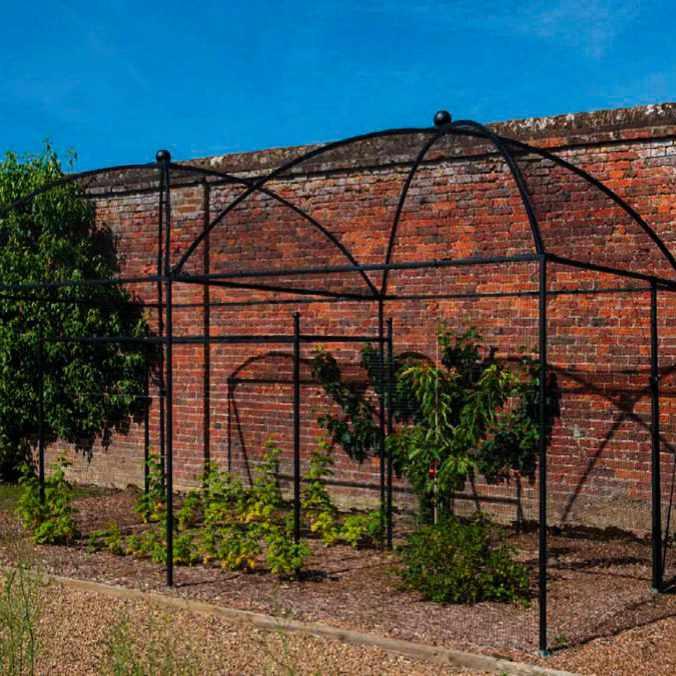
HEAVY DUTY
Dome Roof Steel Fruit Cage, from £795, Harrod Horticultural, 0333 400 1500, harrodhorticultural.com

VALUE ADDED
Discover more fruit cages by scanning this QR code with your phone camera, or visit gardensillustrated. com/fruit-cage
Gardenskill Fruit And Vegetable Garden Cage Kit, £44.99, Robert Dyas, robertdyas.co.uk
Many of us like to lead active lives, but that can become increasingly difficult if we begin to experience skeletal and muscular issues. A growing number of people are discovering that a product called Turmeric+ Gold can help keep them active and living the life they love.
Jacqui Hunter, 60, who lives in Northamptonshire, is one of those people. She runs her own event management consultancy for the medical and pharmaceutical industries, as well as enjoying a busy life which includes, golf, yoga, gardening and travel.
‘I used to suffer with great discomfort in my knees and neck, particularly when going up and down the stairs.’ she remembers.
‘I read about the benefits of turmeric around three years ago. I’ve spent lots of time in Goa where it’s often
used, so I was intrigued to learn more.
‘Having a background in the pharmaceutical industry I research products thoroughly.
I really liked all the science and studies behind Turmeric+ Gold.’
‘I really liked all the science and studies behind Turmeric+ Gold.’

Turmeric contains compounds called curcuminoids, the most notable of which is curcumin. Not only is curcumin responsible for turmeric’s distinctive yellow colour but it’s also what makes it such a powerful spice.
FutureYou Cambridge is offering you the chance to try its premium joint health product, Turmeric+ Gold, for just the cost of the £1.50 postage.*
It is formulated by FutureYou Cambridge, well-known for its science-backed health supplements. The company, based in Cambridge, regularly consults with highly-regarded scientific and nutritional experts and has also developed close ties with world-leading educational institutions.
Turmeric+ Gold is their most advanced and purest

turmeric formulation yet, providing the same 100mg of curcumin as its counterpart Turmeric+, but delivering it using sunflower lecithin which makes it soy-free.
It also comes in an easyto-swallow capsule rather than a tablet.
Both versions contain the patented Curcuma Phospholipid Complex which makes them 30 times more absorbable than standard turmeric. They also contain vitamin C which contributes to
However curcumin is difficult for the body to absorb so the scientists at FutureYou Cambridge used a patented Curcuma Phospholipid Complex formulation to make Turmeric+ 30 times more absorbable than standard turmeric.

normal collagen formation for the normal function of cartilage and vitamin D, which contributes to the maintenance of normal bones and maintenance of normal muscle function.
‘I can’t think of a better way to convince people. If they like it, they will stick with it. Tens of thousands of customers already do.’ says Adam Cleevely, Chair FutureYou Cambridge.





Nigel Dunnett
Professor, planting designer and urban horticulture expert

Miria Harris
Creative landscape and garden designer with a focus on sustainability

Katy Merrington
Cultural gardener at The Hepworth Wakefield Garden

Gardener, educator and creator of Hunting Brook Gardens

International landscape designer and RHS Chelsea Gold medallist
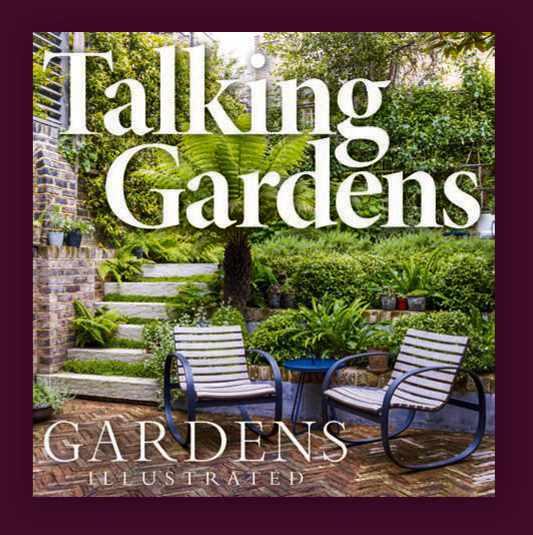

Multi-award-winning garden designer, TV presenter and author

Wildlife and science broadcaster, smallholder and author


Alan Titchmarsh
Horticulturist, broadcaster, author and national treasure

Hayden-Smith
Community garden activist, TV presenter and Grow2Know founder
Listen to Talking Gardens by scanning this QR code with your phone camera link.chtbl.com/TalkingGardens
You can find Talking Gardens on Apple Podcasts, Google, Spotify, Acast and all good podcast providers. Subscribe so you never miss an episode.

Book reviews, the crossword and the big idea

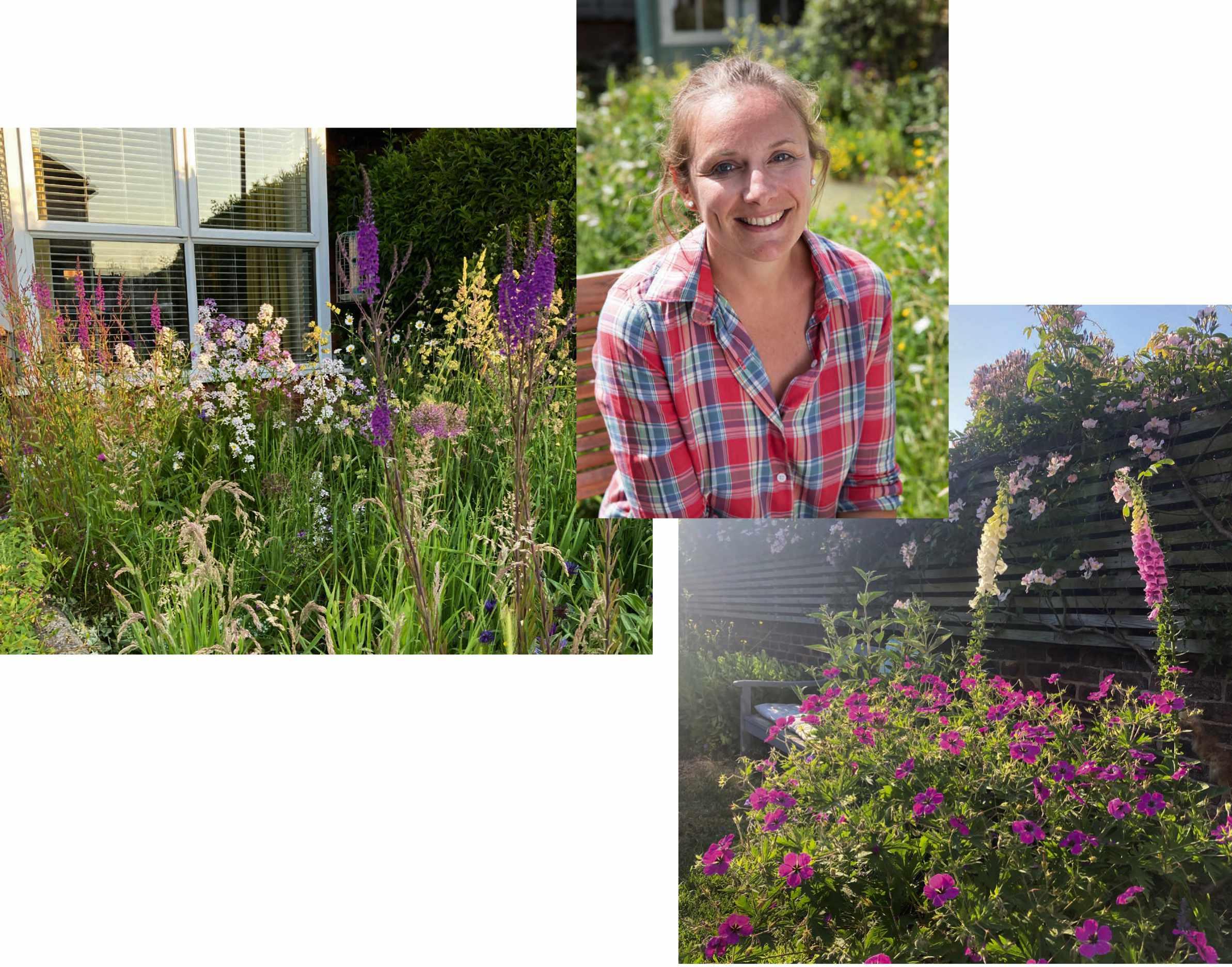
This call to action – for gardeners and communities – to do more for wildlife is just the tonic for anyone feeling overwhelmed by the climate crisis, says Cleve West
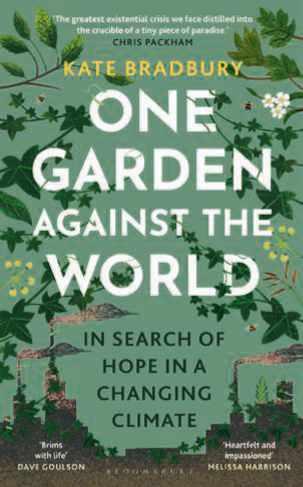
ONE
by Kate Bradbury
Bloomsbury Wildlife, £18.99
ISBN 978-1399408868
Still reeling from the dystopian predictions outlined in Silent Earth by Dave Goulson, I approached this book with mild trepidation. It turned out, however, to be just the tonic I needed to muster some optimism amid the increasingly bleak predictions about a nature emergency.
One Garden Against the World is part nature love story, part call to arms. It won’t fix climate change or the threat of biodiversity collapse on its own, but it will help gardeners focus on the things we can do in our own backyards and allotments to give lifeforms the best chance of survival and us a real sense of purpose in what we can do to help.
Author Kate Bradbury, a wildlife gardening expert and writer, is hardwired to the rhythms and balances of the natural world. Her lyrical and intimate diary covers 15 months from her own garden in Portslade near Brighton, with forays to more rural places while on holiday, seeing family and friends or walking her dog Tosca. The existential crisis affecting hedgehogs, bees, frogs and swifts is never far from her mind and her personal mission to get robins to
fledge in her garden for the first time for three years is an anxious but touching thread. At the end of each chapter, Bradbury focuses on the lifecycle of one specific lifeform with tips on how you can encourage them into your garden – at last, I know what to do with empty snail shells.
Bradbury’s love for wildlife struggling to eke out an existence during the climate/ nature emergency reveals an understanding that we humans literally can’t survive without them. She skillfully balances the seriousness of the issues we face with a ‘best foot forward’ approach. Her sunny greetings to various visitors, her ecstasy rushing into the garden in her pyjamas to welcome rain and petrichor makes you wish she was a neighbour. Her mental gymnastics in trying to keep up with domestic conversations with Emma, her partner, while thinking of ways of giving her robins the best chance to fledge, is so familiar, and a great insight into a mind that cares deeply.
The book resonated with me on many levels: the anxiety of giving wildlife the best chance of survival, the conflicts when lives are lost for the sake of others, the frustration of conversations
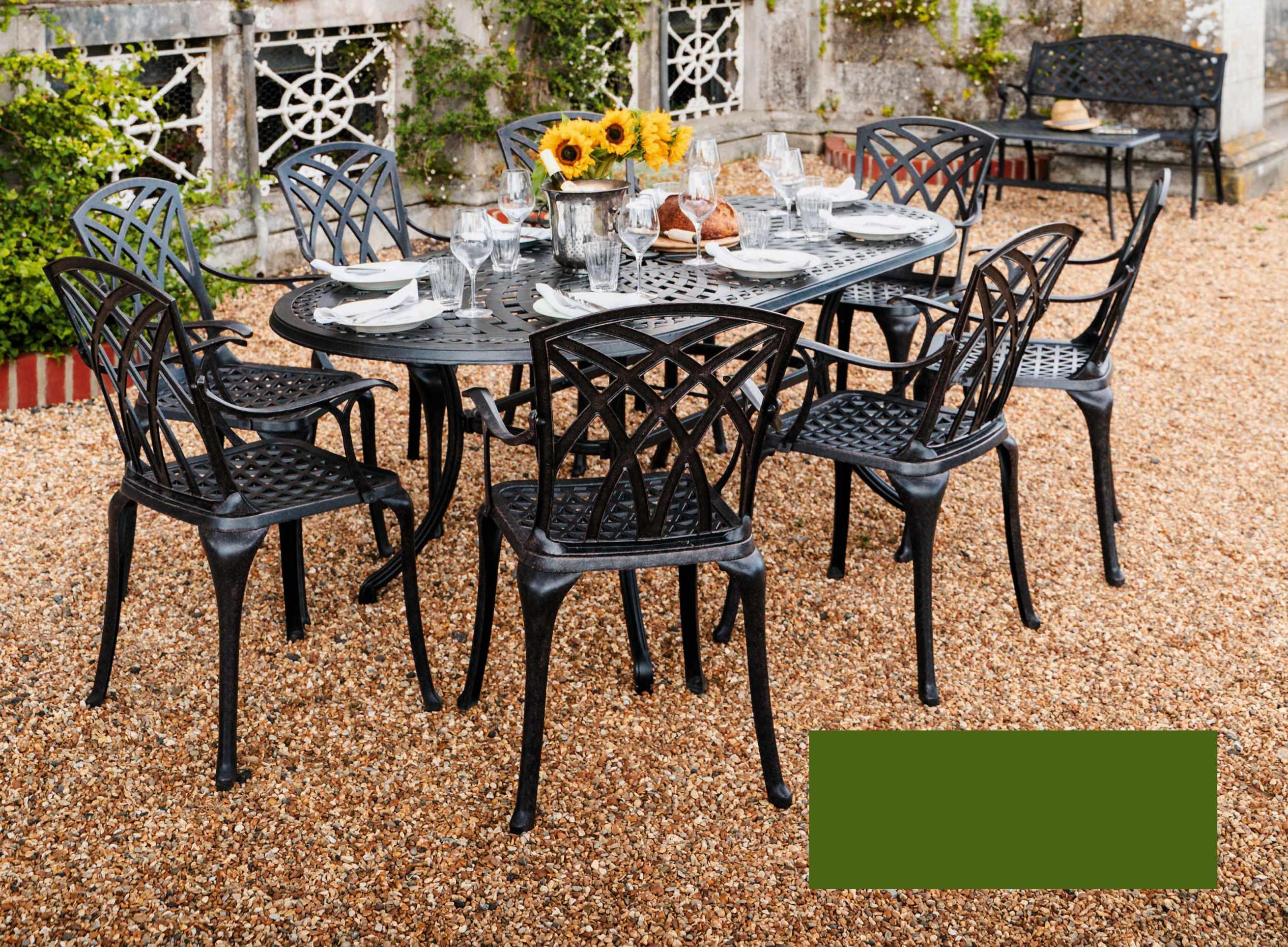
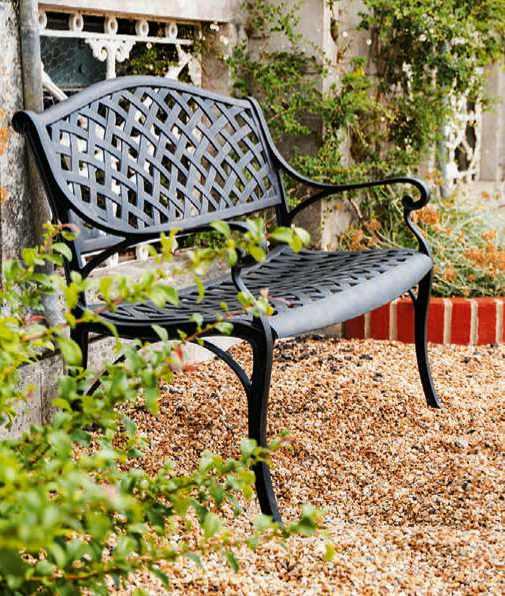
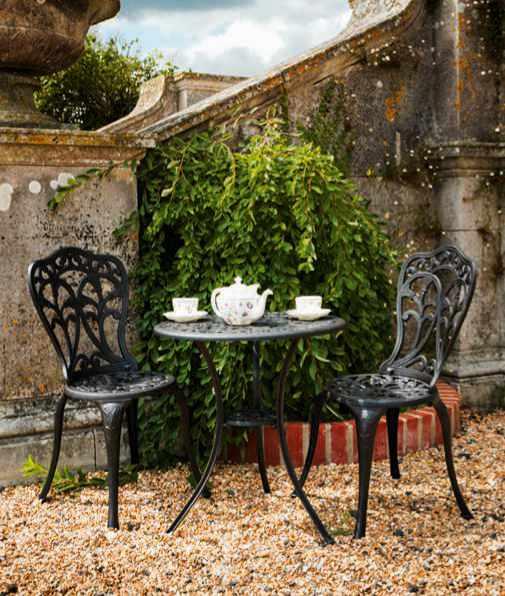




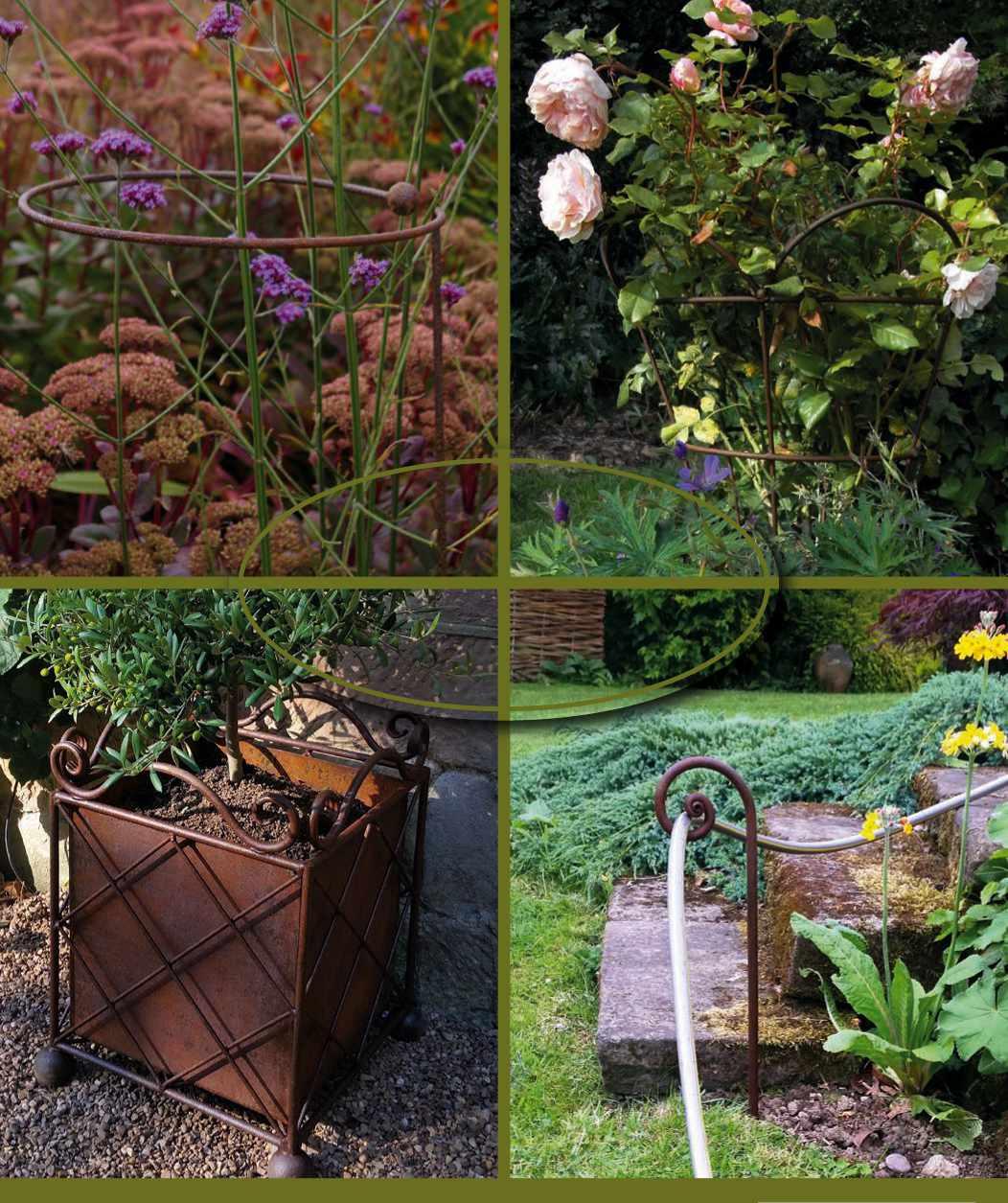



B

db k llf ll balances the seriousness of the issues with a ‘best foot forward’ approach b ll
with friends who are either completely unaware of what’s going on or, worse, ambivalent to the impending environmental catastrophes if action isn’t taken. The ongoing battle between Gulls Allowed (Bradbury’s community action group to save nesting seagulls) and Drone Bastard (who has a personal vendetta against those nesting on his roof) touches on the comical, if it wasn’t so infuriating. I will be buying this book for new neighbours who razed their garden to the ground and then said to me, incredulous, “You actually like nature don’t you?” I’ll also take heed from Bradbury’s despair over the amount of plastic used in the garden these days and resist the temptation to use landscape fabric on all the paths at my allotment.
Bradbury’s joyous daily interactions with nature are infectious. Her sensitive brand of activism, both practical and educational (occasionally employing opportunistic community action) shows that with a little gentle persuasion and appealing to people’s co-operative nature, it needn’t be a oneperson crusade.
The overriding take from this book is that the custodians of the UK’s 30 million gardens can make a difference. Collective action can bring about meaningful change. We can teach others that we are part of nature, not separate from it, and that gardens are not just for people. It can feel overwhelming at times, but, if you take an ounce of inspiration from this clarion call, then, at the very least, it’s a vital step in the right direction. ■
Reviewer
Cleve West is a garden designer, author and passionate animal advocate.

Recommended reads this month
THE GARDEN LIBERATED: AN EVOLUTION OF ITALIAN GARDEN DESIGN by Paolo Pejrone, photography by Dario Fusaro, Ri li £50

ISBN 978-8891840554
An insight into the work of celebrated Italian garden architect Paolo Pejrone – who was profiled in Gardens Illustrated in June 2023 (issue 326) –through ten of his gardens in different regions of Italy, from the gentle hills of Tuscany to the sunny coasts of the south
BUDS AND BLOSSOMS: DELICIOUS AND BEAUTIFUL EDIBLE FLOWER RECIPES

b Li K i ht, Hardie Grant £28
ISBN 978-1784886592
A book that shows that there is much more to cooking with edible flowers than adorning cakes and sweets Includes more than 100 recipes – from lilac lemon possets to a marigold martini – created by forager Liz Knight
POODLING: ON THE JUST SHAPING OF SHRUBBERY

b M T ib, ORO Editions, £19 95
ISBN 978-1957183824
The landscape historian traces the evolution and characteristics of topiary espalier and other forms of plant guidance such as poodling, a way of pruning that takes each branch individually and shapes its leaves or needles into the forms that remain at their ends
HOW HERBS HEALED THE WORLD: AND OTHER STORIES OF REMARKABLE PLANTS


b C S ith, G fi h £22
ISBN 978-1529430530
The fascinating story of 75 herbs and how each has changed our world From poisons, such as deadly nightshade, that were once used by the ancient Romans and are now being used in modern medicine to more familiar herbs used for centuries as remedies by indigenous people around the world, it looks both at their origins and what was once believed, compared to their modern day uses and the scientific value
THE GARDENS OF ARNE MAYNARD by Arne Maynard, photography William Collinson, foreword by Rosie Atkins, Merrell Publishers, £39 95
ISBN 978-1858947167
This reissue, in a more compact hardback edition, offers unique insights into the design methods of the award-winning garden designer’s work focusing on 12 of his gardens including his own at Allt-y-bela in Monmouthshire All beautifully photographed throughout the seasons
Head to gardensillustrated.com for more exclusive content on gorgeous gardens and the best seasonal plants. You’ll also find the latest horticultural news and details of upcoming events – plus podcasts, offers and competitions, and a wealth of inspiration
from Chelsea’s
Ula Maria, who took the top prize at this year's RHS Chelsea Flower Show, explains how to design your own garden
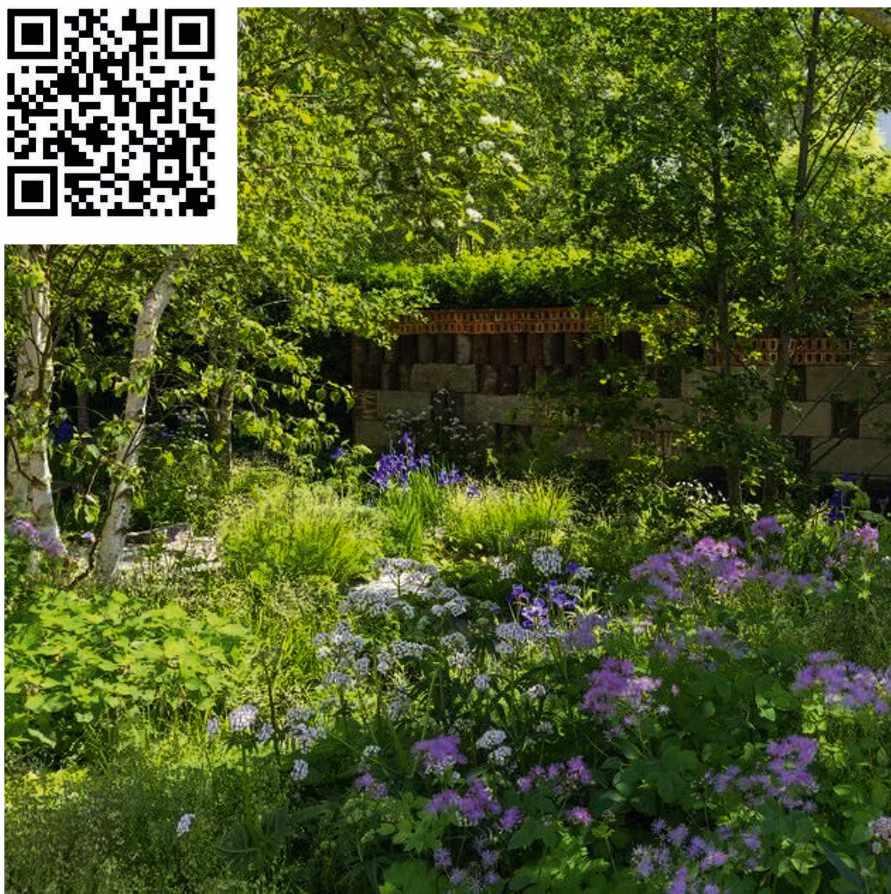

The best flowers for a fabulous summer garden
Tom Brown, head gardener at West Dean Garden, recommends 26 of the best plants for summer




ACROSS
1 Genus of plant aka wake robin, started by a bird call (8)
6 Common name of Rhus typhina is stag’s horn ___ (6)
9 Plant of eg genus Adiantum or Osmunda (4)
10 A pale violet Triumph group tulip … in Bengali biome (5)
11 Thin on the ground, in part, Lonicera reticulata (4)
12 Edible mushroom’s extra length? (5)
14 Lagged behind – as a hanging basket plant? (7)
15 Sprout with bright-green buttons, named Highland Games venue (7)
16 Genus of an umbellifer with silvery-green foliage – in part false Selinum (6)
17 Genus of tufted rush-like flowering plant – I store untidily (6)
19 Sweet flag species of Acorus genus – mistaken as a culm (7)
21 Series of Hypericum with different coloured berries – amazing event (7)
23 Flower arranger’s spongy foam (5)
25 Dwarf yellow-flowering rhododendron and little songbird (4)
26 General term for a shrub or flower (5)
28 Succulent … part of biennial, Oenothera (4)
29 Vigorous, smooth parsnip variety
– Hampton Court? (6)
Solutions to this issue’s crossword
30 Common rockery plant with pink, purple or blue flowers (8)
DOWN
2 The rhubarb genus (5)
3 Honesty plant’s genus name, alluding to its moon-shaped, flattened seed case (7)
4 A pink-purple form of 30 across –part solidago! (3)
5 Damper – it’s more muddied! (7)
6 Genus of feathery grasses … partly grass tip apparently (5)
7 Species epithet meaning ‘of walls’, as in Cymbalaria ___ (7)
8 Genus of plants with tubular flowers, coir sadly spoilt (9)
13 An F1 Petunia grandiflora series –uncertain state (5)
15 Genus of flowering plants in nettle family – hebe ‘Maori’ possibly (9)
16 A compact, small-leaved basil hybrid gets a big gun salute! (5)
18 Wishbone flower genus – twisted into ear! (7)
19 Species term, “with blunt teeth” –can tear badly (7)
20 Species of Liriope (lily turf) with flower spikes like grape hyacinth
22 Thicket of trees (5)
24 Plant resulting from chance genetic mutation (5)
27 Plant container, nevertheless turned over (3)
You can buy printed issues of the magazine published up to six issues ago at ourmediashop.com or see below for details.
Save money when you subscribe to the digital edition –see page 28
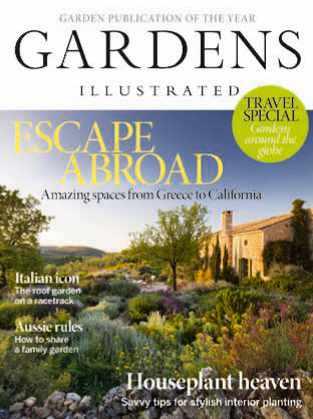



Cost from £9.99 each (inc p&p). Member discounts available – see below for details.
Summer is a great time to visit this collection of glorious gardens

1
July at Cottesbrooke sees the herbaceous borders flourishing, with phlox, geraniums and campanulas jostling for space amongst the many roses. In the Wild Garden, the giant gunneras, rodgersias and ferns are at their peak, providing a lush, shady escape from the heat.
Northamptonshire NN6 8PF | 01604 505808 | cottesbrooke.co.uk
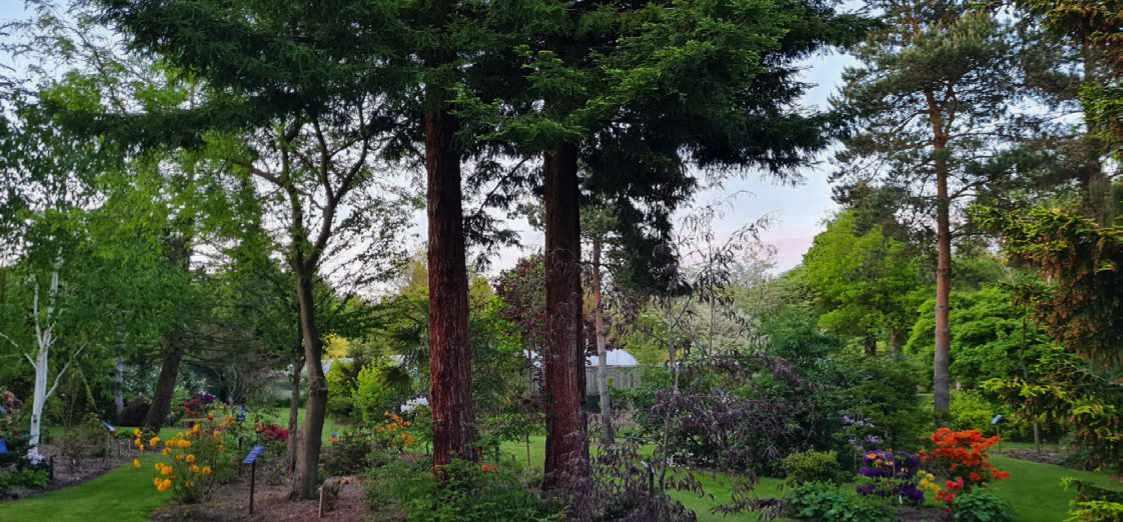
2
BLUEBELL ARBORETUM & NURSERY
Visit our tranquil, nine-acre, woodland garden full of unusual trees and shrubs, many of which have been planted for their superb summer colour. Many of the rarities on display are available for sale from our adjoining specialist plant nursery. RHS Partner Garden.
Smisby, South Derbyshire LE65 2TA | 01530 413700 | bluebellnursery.com
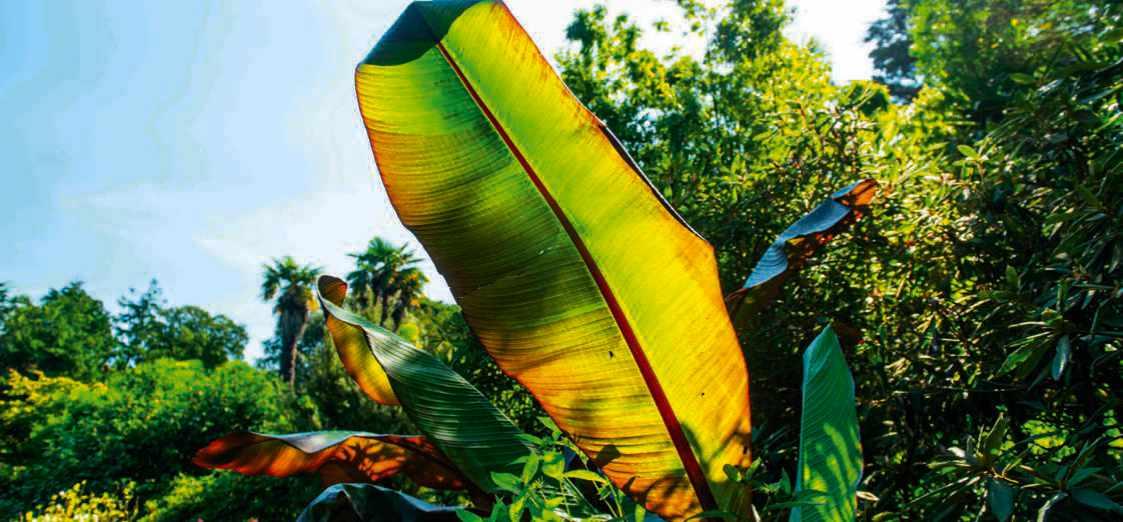
4
ABBOTSBURY SUBTROPICAL GARDENS
Located on the Dorset Jurassic Coast, within a unique micro-climate and over 30 acres. Established in 1765 by Elizabeth, the first Countess of Ilchester, as a kitchen garden. One of the best-known gardens in the UK filled with rare exotic plants from across the world. Abbotsbury, Dorset DT3 4LA | 01305 871387 |

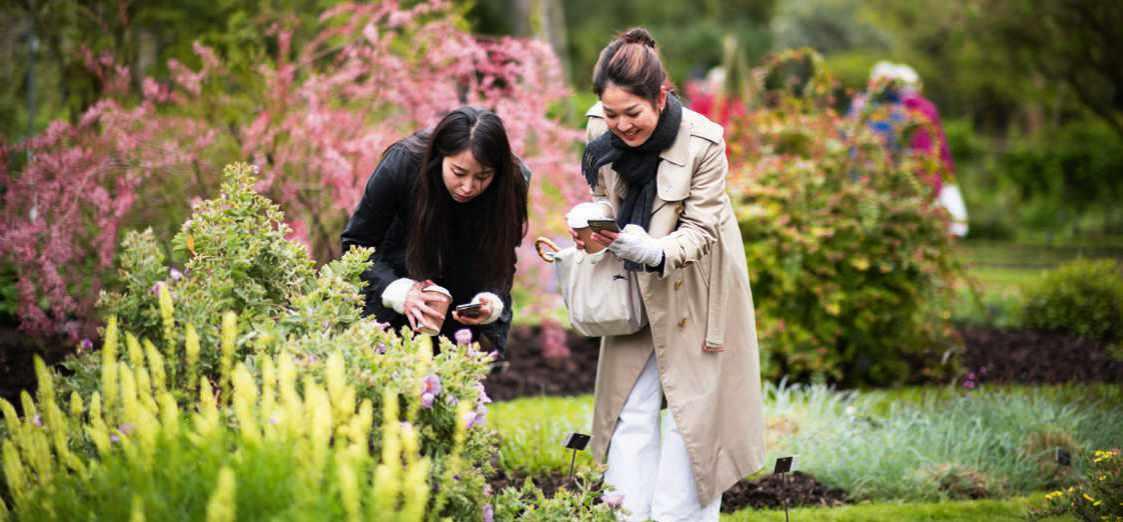
3
CHELSEA PHYSIC GARDEN
Only five minutes away from King’s Road is Chelsea Physic Garden, this fouracre walled garden is a haven for serenity seekers, the botanically curious and those looking to enjoy a moment in nature. Open Sunday to Friday from 11am, London’s oldest botanic garden is home to over 4,500 medicinal, edible and useful plants. London SW3 4HS | chelseaphysicgarden.co.uk

5
Created by Joyce Robinson, a pioneer in gravel gardening, and the former home of landscape designer, John Brookes MBE, Denmans is an award-winning Grade IIlisted and RHS Partner garden renowned for its curvilinear layout. Colour, unusual plants, structure and fragrance year-round. Midpines Café, shop and plant centre. Fontwell, Nr. Arundel BN18 0SU | 01243 278950 | denmans.org

A special edition to help you relax and enjoy the garden
• Declan Buckley’s colourful, dramatic planting for a modern beachside garden in Whitstable
• Discover what Sissinghurst head gardener Troy Scott Smith gets up to in the dog days of summer
• Urquhart & Hunt’s contemporary design for a grand new garden in Italy
PLUS Sarah Raven at Perch Hill, the best phlox to grow, alternatives to lawn and Alice Vincent’s top summer reads
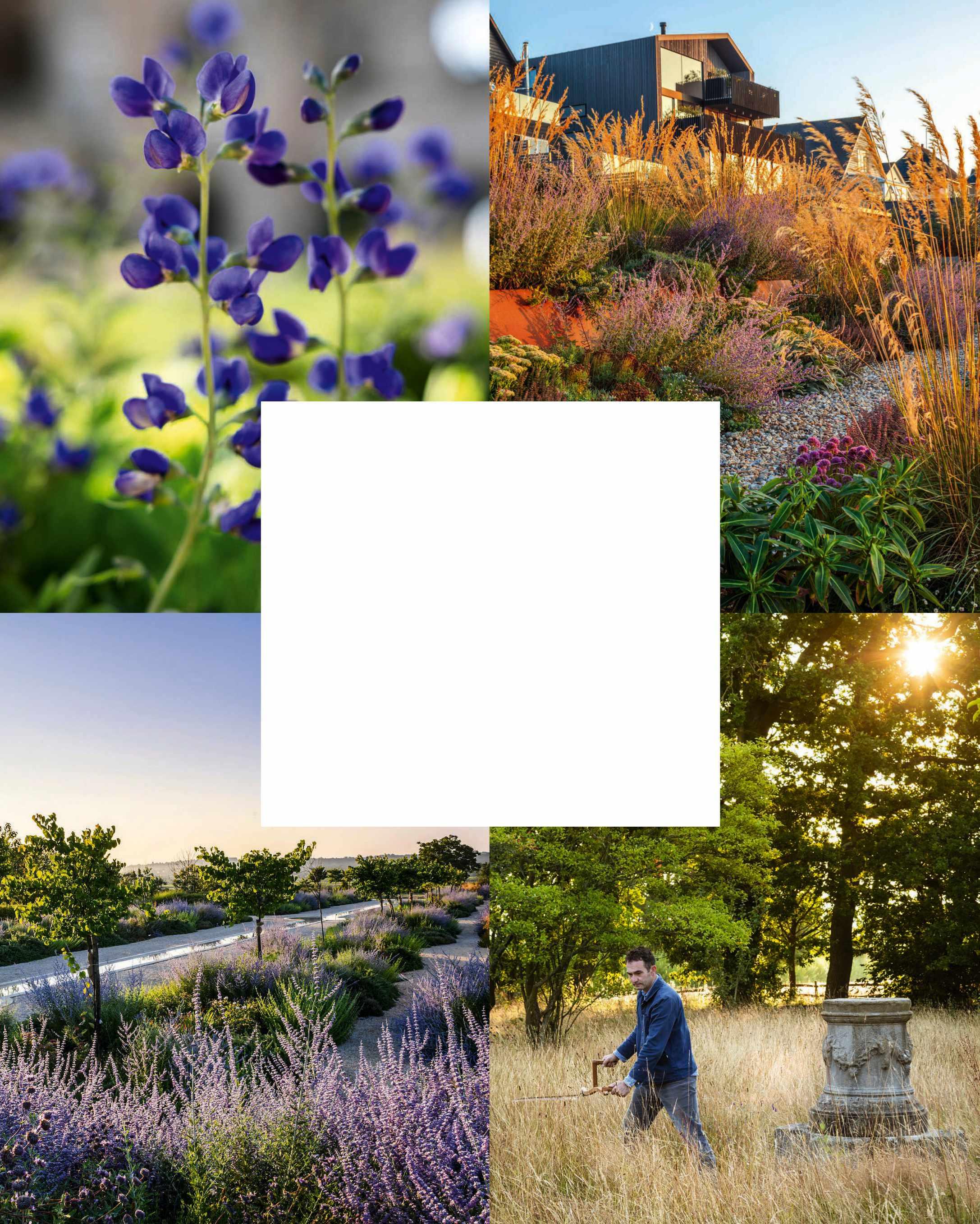
Save money when you subscribe to the digital edition – see page 28. Also in selected Waitrose, Sainsbury’s and Tesco stores, as well as WHSmith, and all good magazine retailers.
Lovely, low maintenance and good for wildlife? Jack Wallington is experimenting with plant vigour to make his own garden both ecological and easy to manage
Iwas embarrassed recently when some gardeners popped over to see our garden. If they were hoping for a wow moment, I don’t think they expected it to be: “Wow, that’s a lot of couch grass.” Despite writing books about embracing wildness, I still imagine the tut of society. But I’m on a mission for minimal maintenance. I don’t want to mulch, stake, prune, fertilise or weed ornamental planting. Instead, I want the plants to just get on with it.
Before moving to a bigger garden in 2021, I knew I wanted it to look after itself. Like most people, I have a full-time job and a social life, and we spend a lot of time growing organic food, which doesn’t leave much time for ornamental stuff.
Yet I still want excitement, and I’ve been testing interesting combinations requiring barely any intervention from me that will naturally compete with everything else. Across our farm, dandelions, nettles, couch grass, dock and other wildflowers are prolific, and welcome. In the smaller ornamental garden near the house, however, I’m increasing the diversity of plants for wildlife and us.

My new challenge is out-competing ground elder, and eventually I might tackle bramble
Essentially, I’m relying on suppressing plants that smother, as well as matching plant vigour, to form plant communities to tip the balance. I’m using ecological knowledge of wild ecosystems to plan combinations that largely manage themselves, as in the wild. When it works, it can reduce maintenance and increase stability for wildlife. If I entice insect populations into a garden with plants, I want to make sure everything’s stable, not dying out after a year or two.
I’m also concerned about aggressive intervention in garden design using diggers, soil-altering aggregate mulches and weed killers that eliminate what was there before. Over the years I’ve tried to be sensitive; being organic, incorporating existing plants, championing wild plants in design. In our new garden I’m going further by focusing on plant vigour to transition gardens in a gentler, albeit slower, way.
I started by observing local wild plants in and around our garden, including Valeriana officinalis, Rumex acetosella and Digitalis purpurea, matching their vigour with the likes of Veronicastrum and Eupatorium. These all grow through and over a thick carpet of dandelions and Prunella vulgaris without problem, and are combined
with suppressing plants capable of starving any interlopers of light beneath their dense clumps, such as Brunnera, Geranium and Polystichum I’ve been planting all of these as plugs or from seed into the likes of creeping buttercup and even nettles, and they’re slowly pushing them aside, with only occasional help at the start. If the odd nettle and dandelion live between or below these other plants, so much the better for diversity. My new challenge is out-competing ground elder and eventually I might tackle bramble. For scale, I follow a similar process with shrubs and trees. The approach gives above-ground wildlife time to adjust, while keeping belowground ecosystems intact, but it does have problems.
Obviously it requires a vast knowledge of plants and local ecology to select the right vigour for a garden’s unique conditions. Our soggy Yorkshire hillside favours different plants to the dry gardens I’ve designed down south. Fine if people want to spend time researching, or money employing an expert, but for everyone to benefit, we need new categories of plant data to sit alongside hardiness ratings. Suppression and vigour ratings, adjustable by known conditions, such as soil type, precipitation, water table and location, are needed. This is where AI will help and I expect a time in the near future when we’ll tell AI about our gardens and preferences to produce more than a book’s worth of plant communities tailored specifically to us.
Vigour ratings may also address ecologist concerns around the potential invasiveness of some garden plants, because invasiveness is just another word for vigour, and we know vigour changes depending on the conditions and climate. The other problem is patience. I could wheel in a lorry load of established plants for instant wow, but where’s the fun? I worry many see show gardens or Instagram perfection and merely want to buy it, missing out on the joy of the process. This is partly why a few years ago I stopped sharing much of my design work on social media – I didn’t want to put pressure on people.
A new low-maintenance ethic feels important; by cracking it, it will help people get a designer look in an easier, more ecological way. ■
• Jack Wallington is a garden designer and author of Wild about Weeds
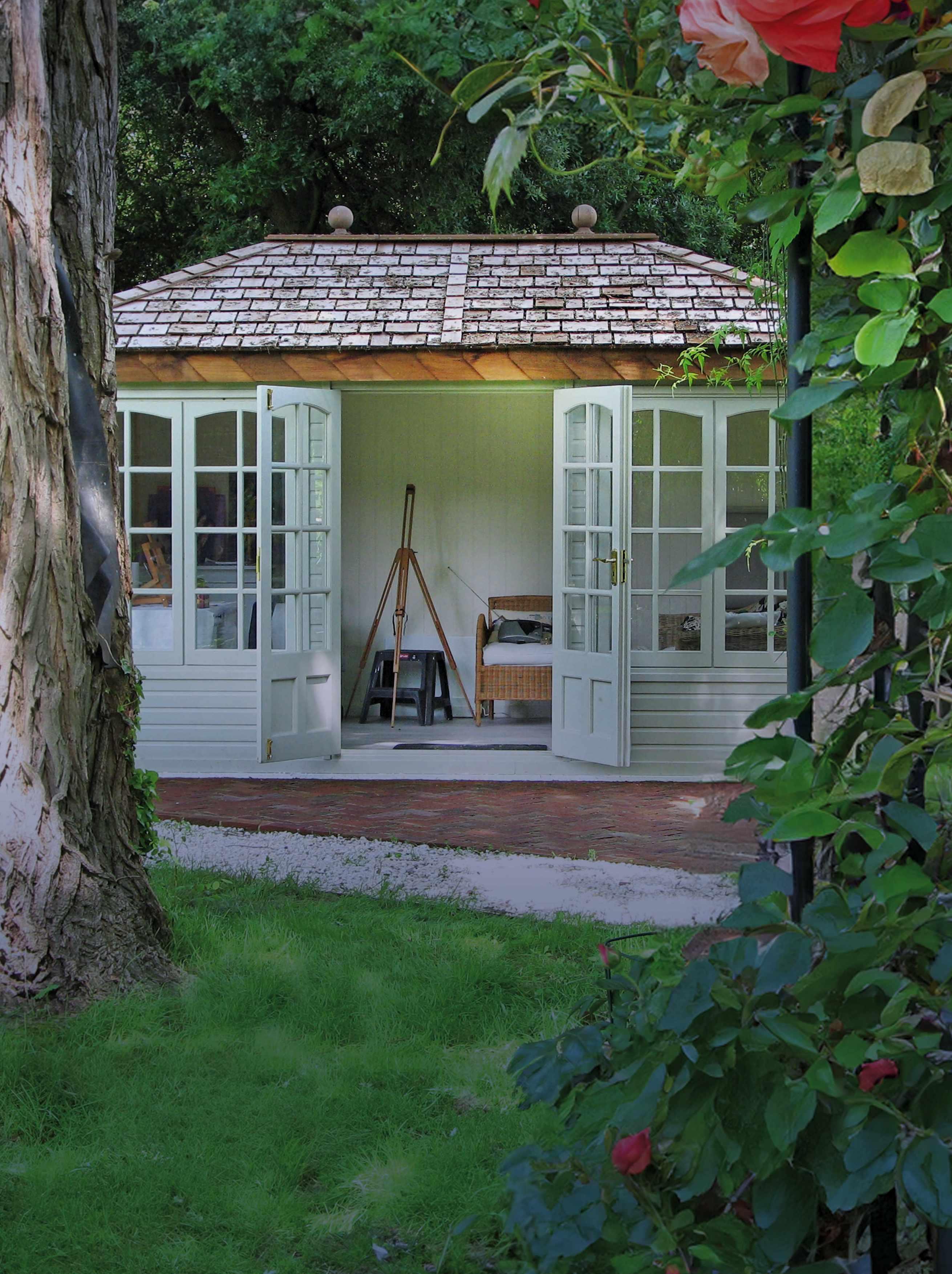

TIMELESS CLOTHING & EQUIPMENT TO CARRY YOU THROUGH THE SEASONS carriercompany.co.uk always made in the uk